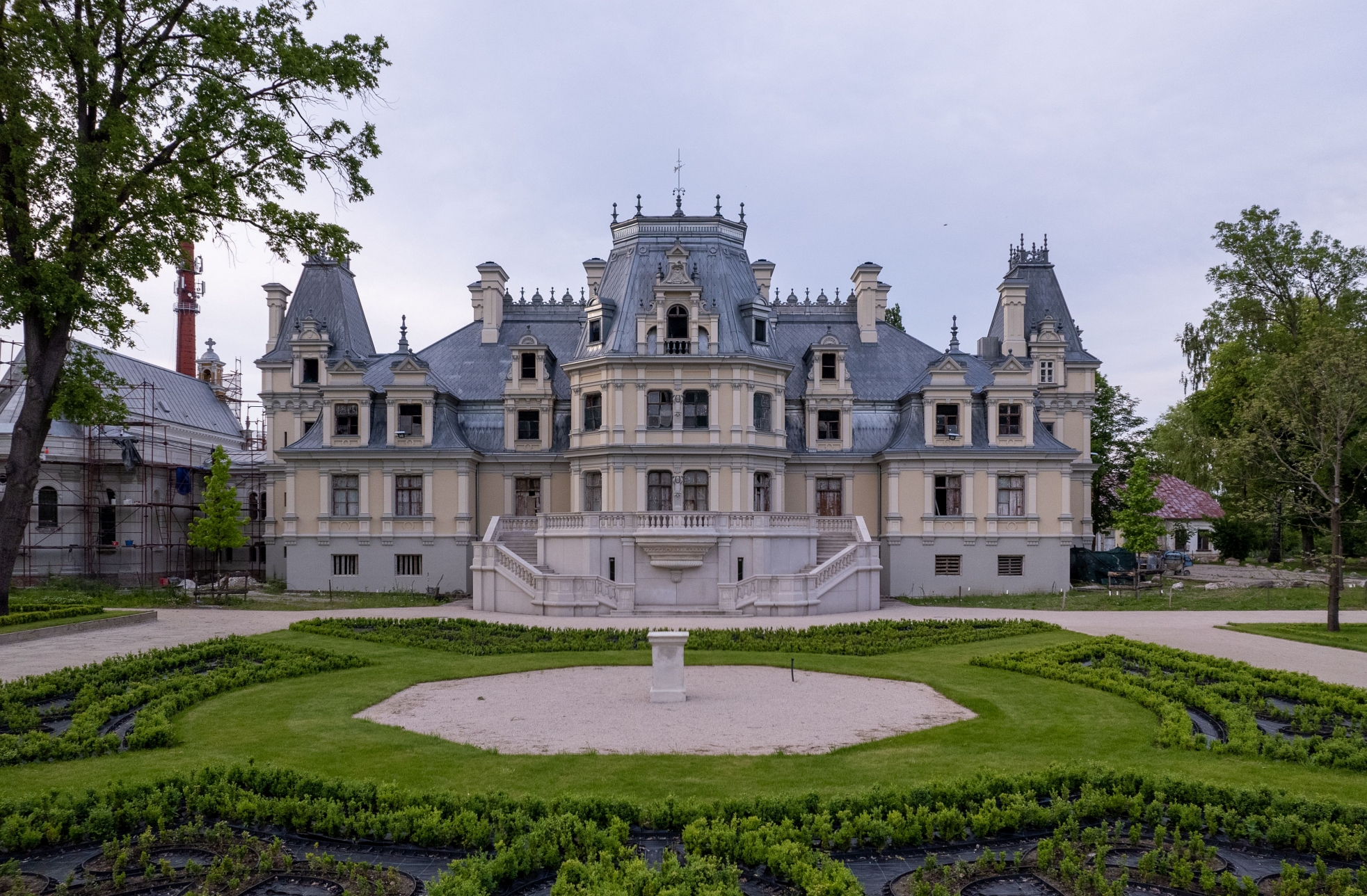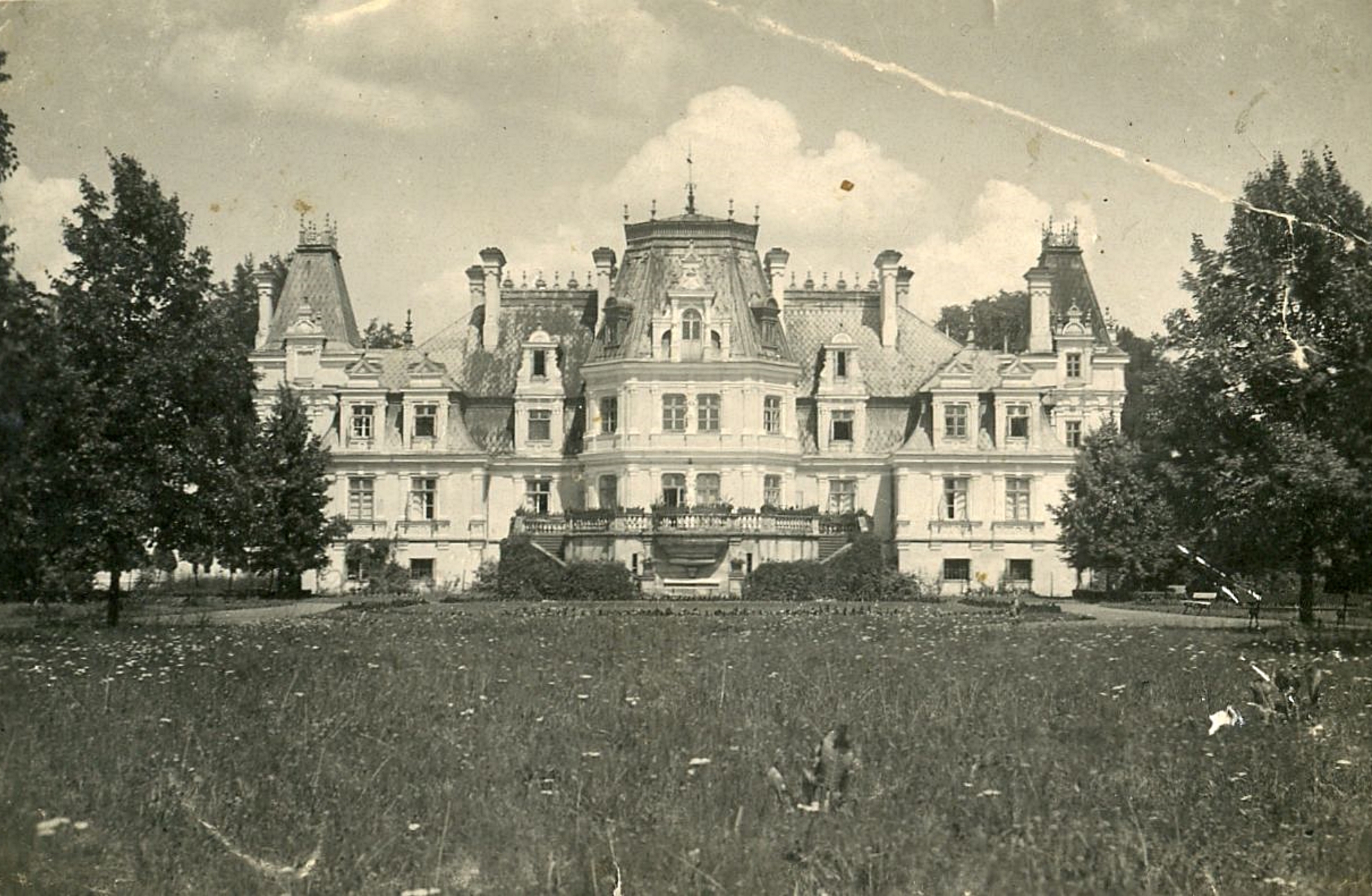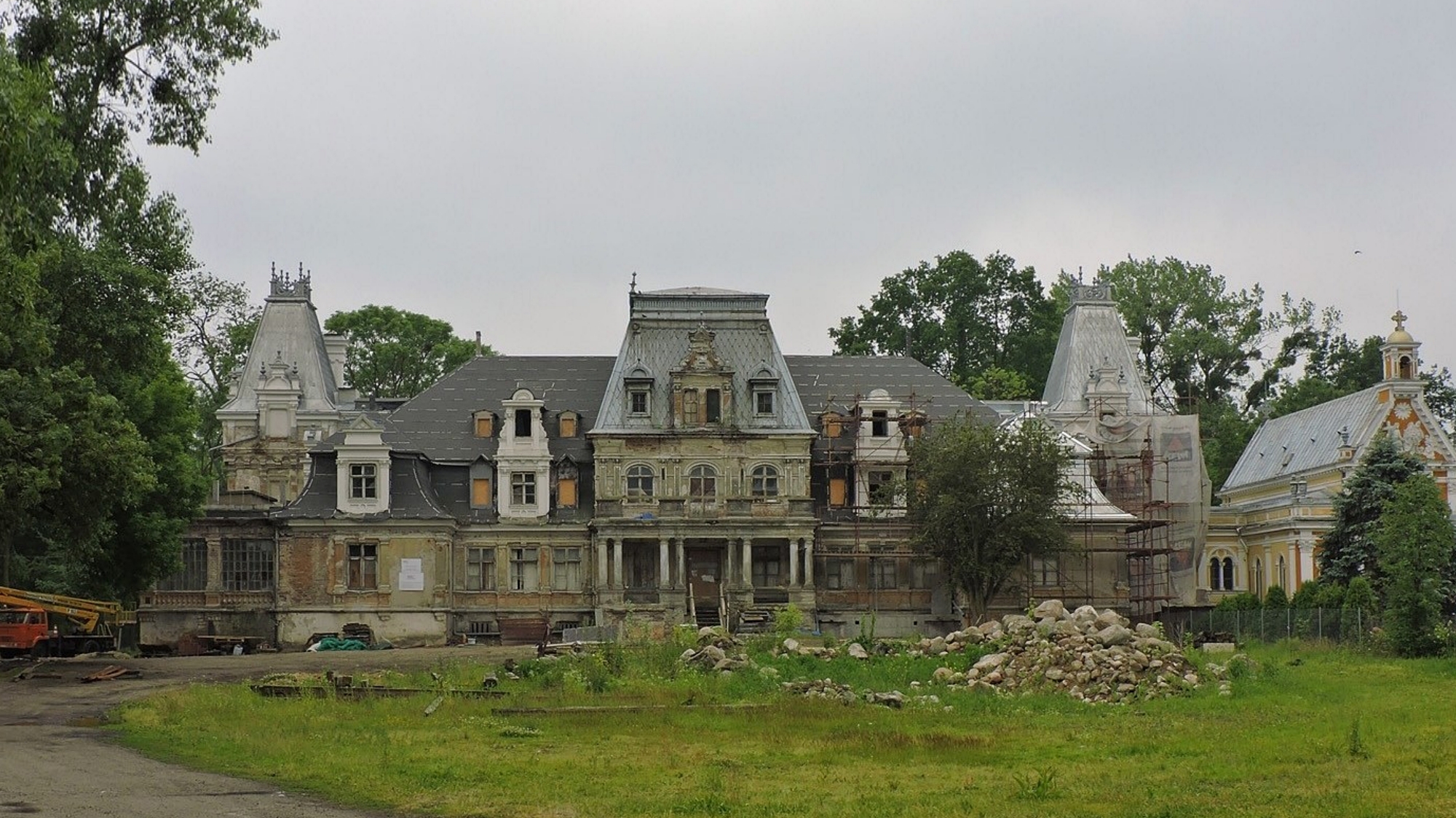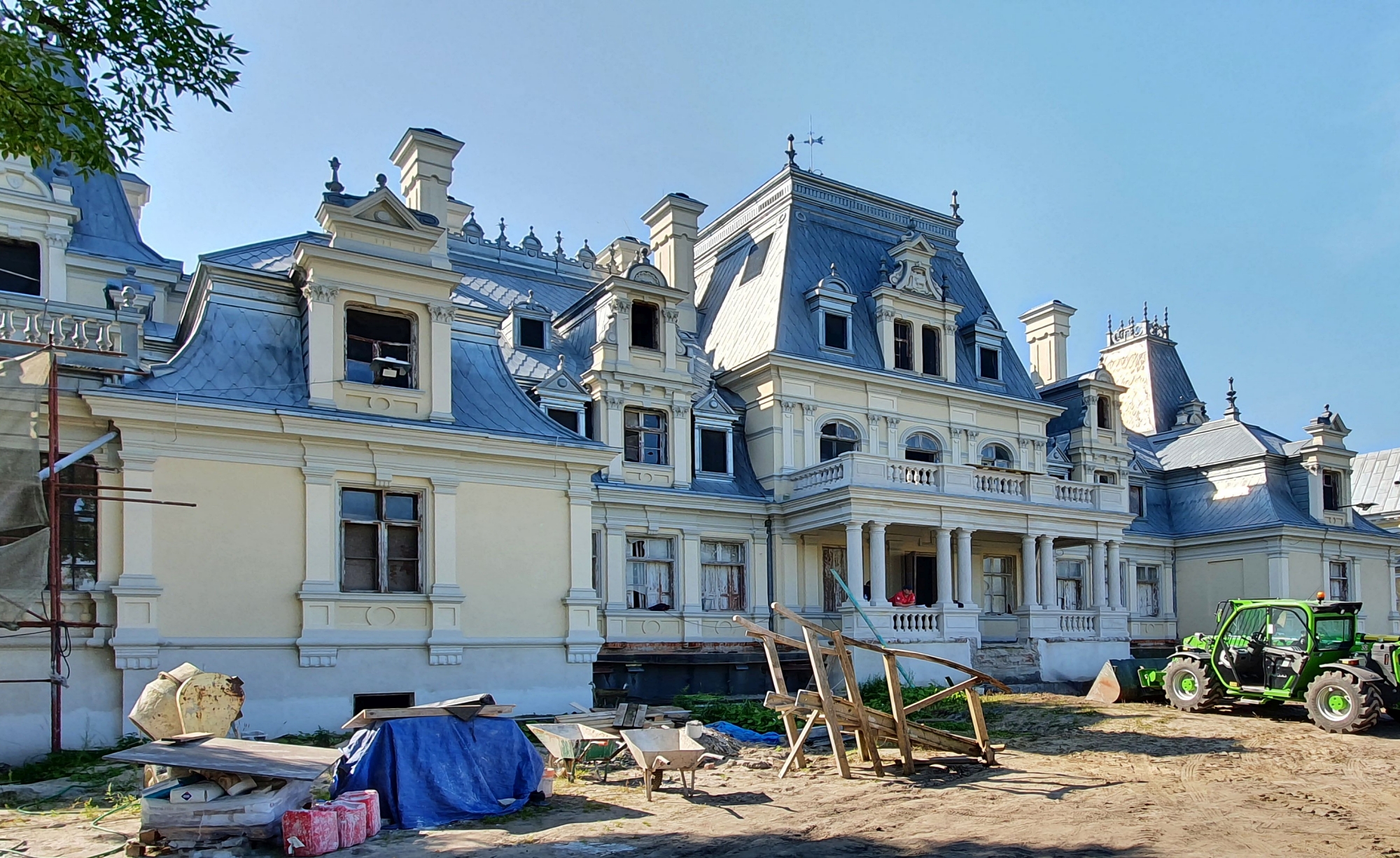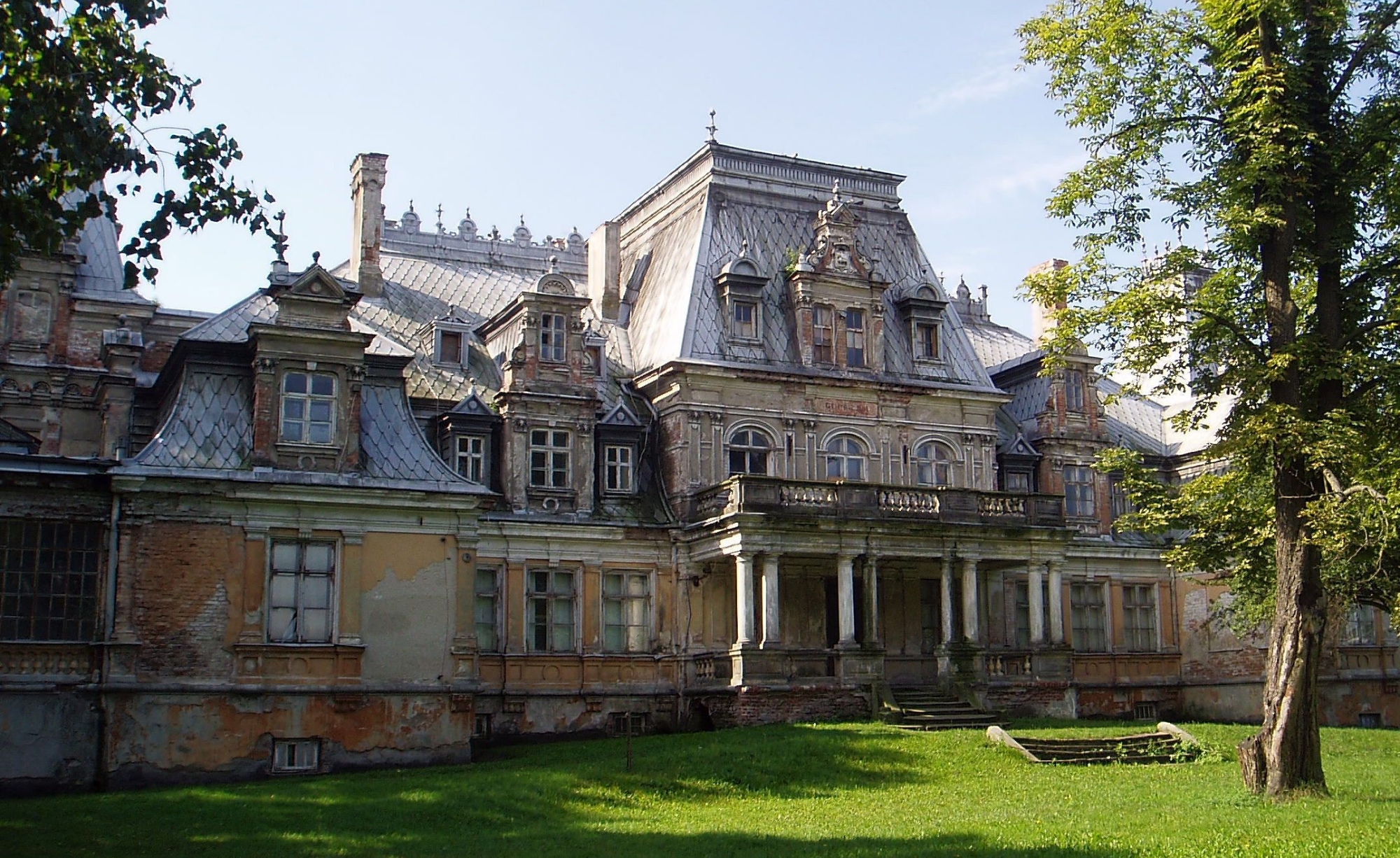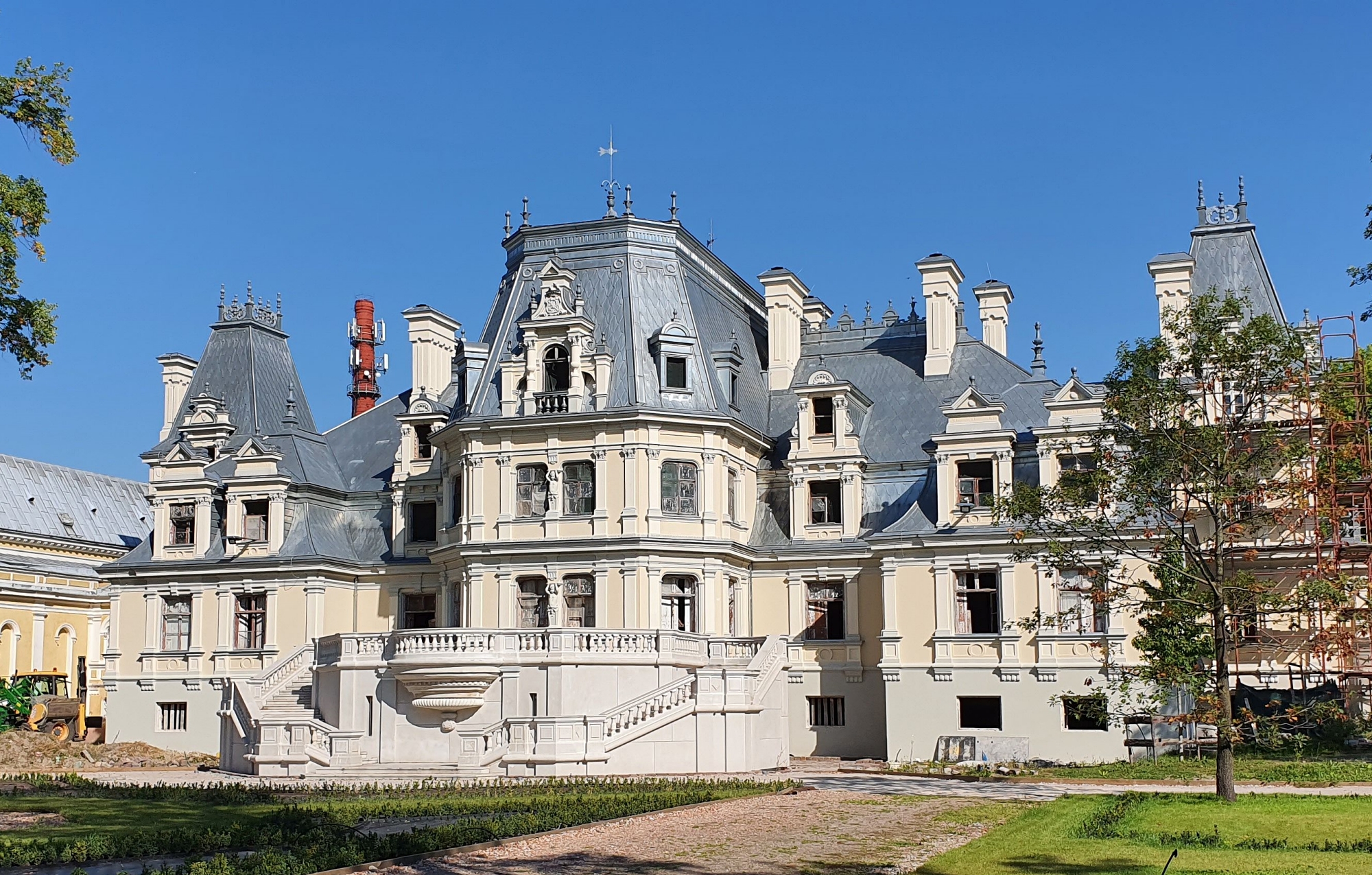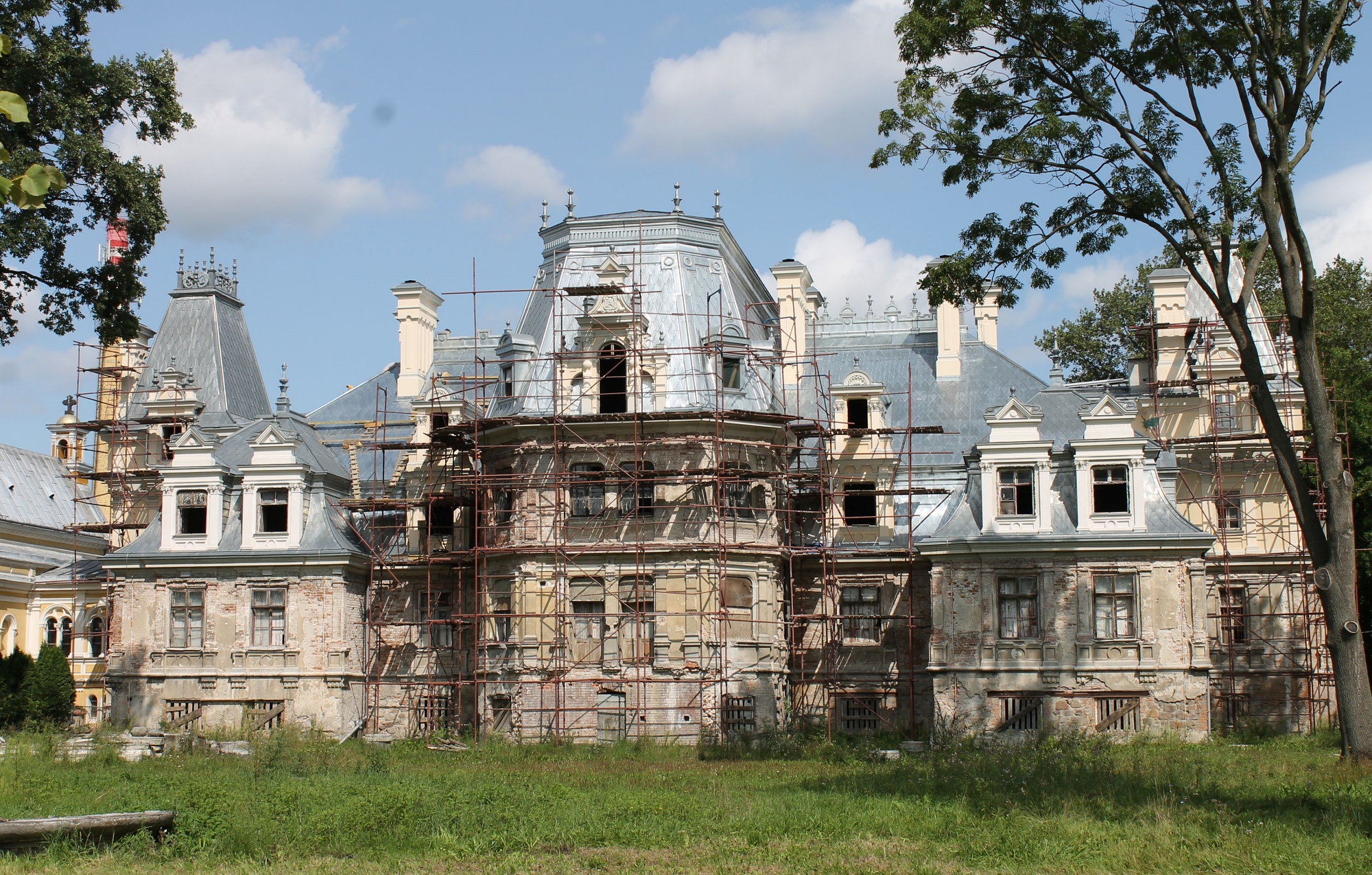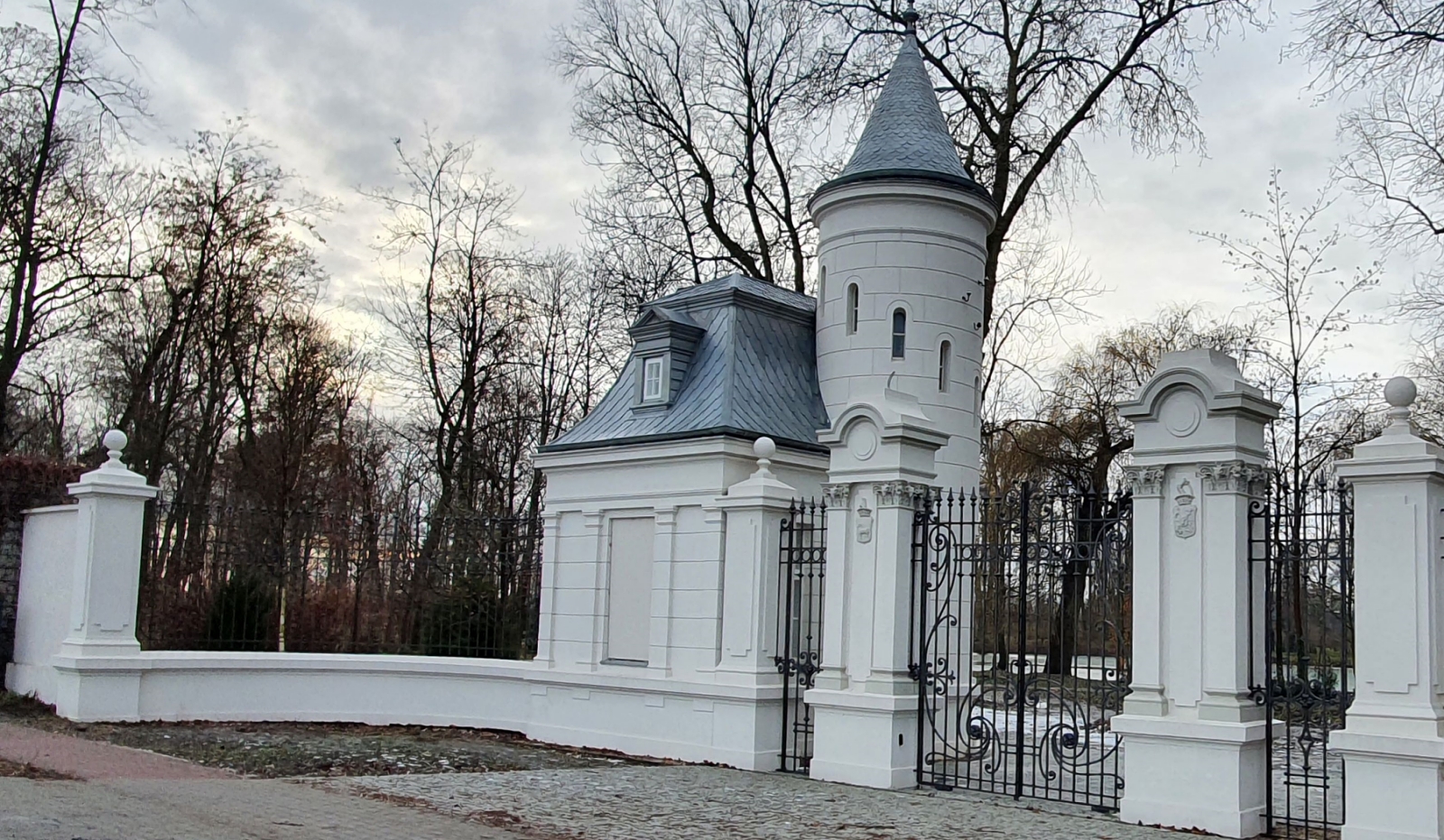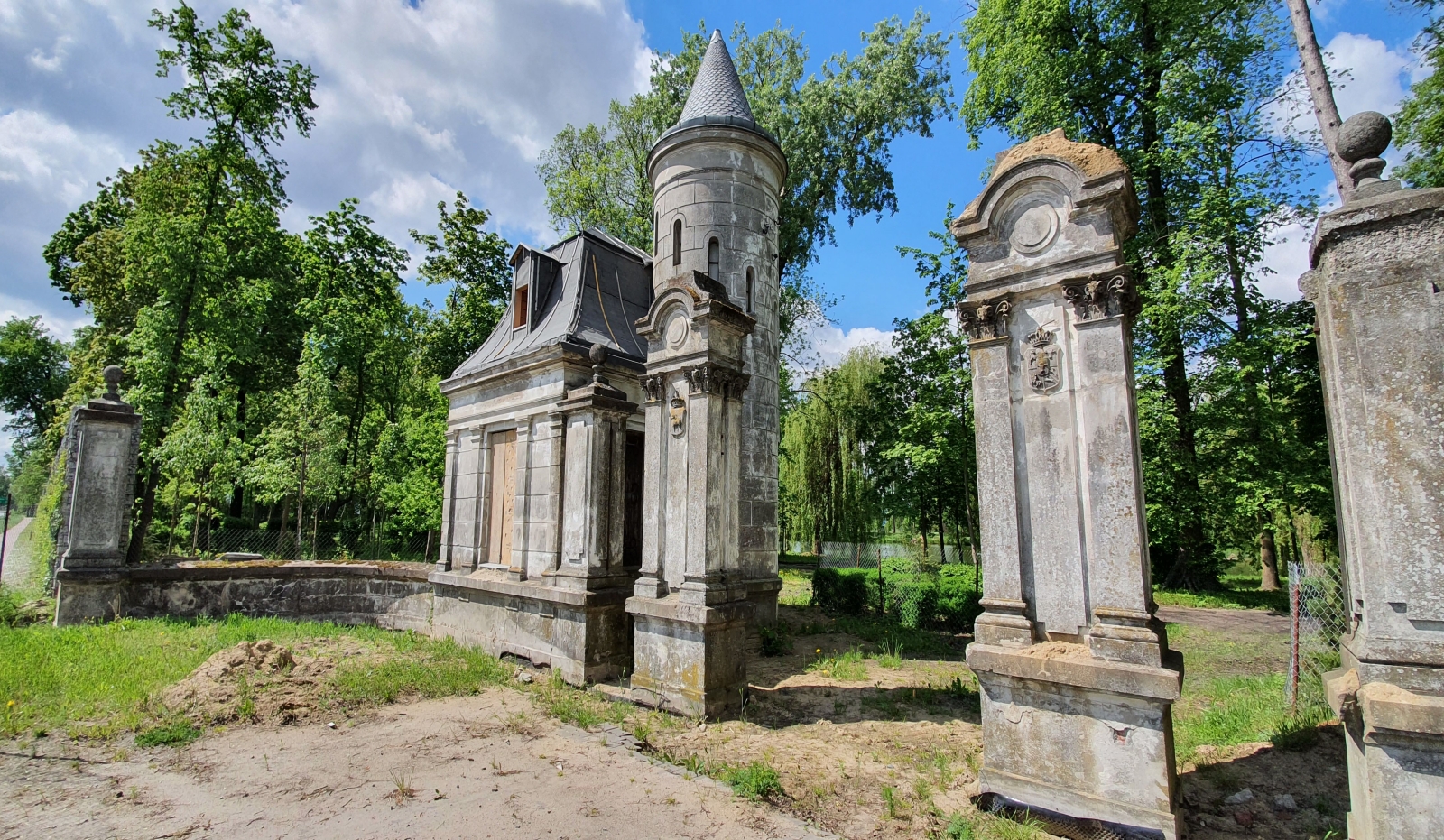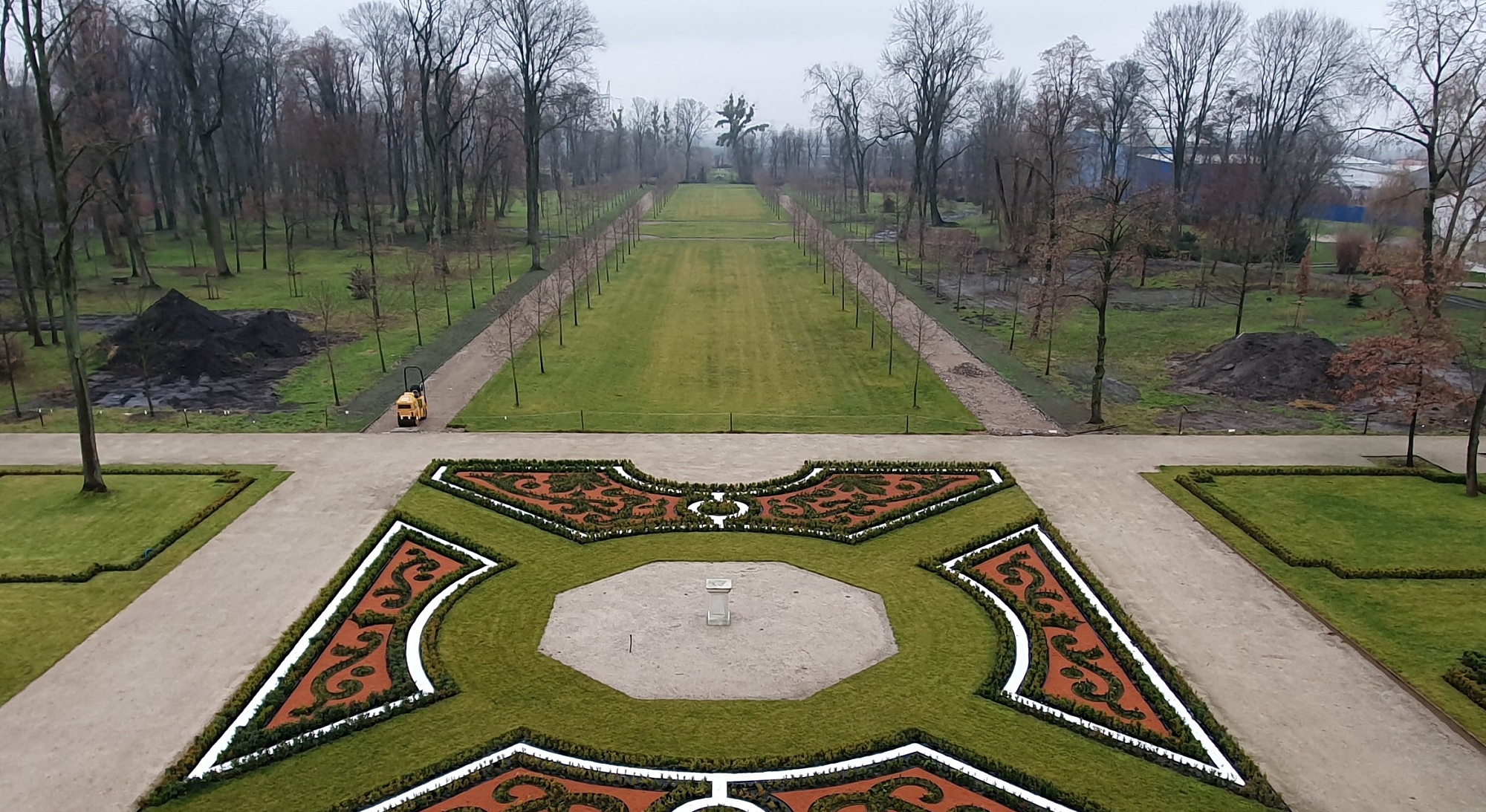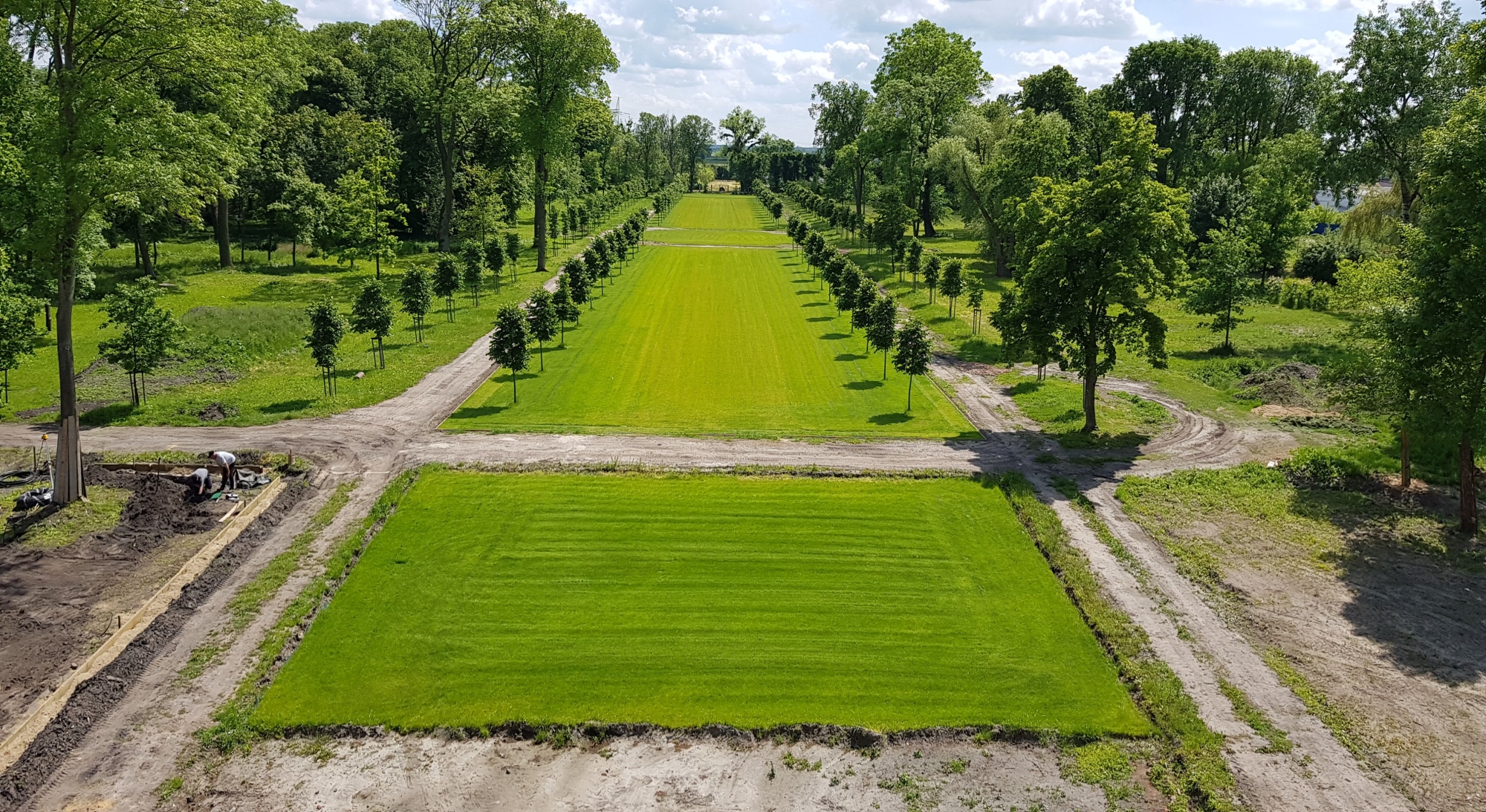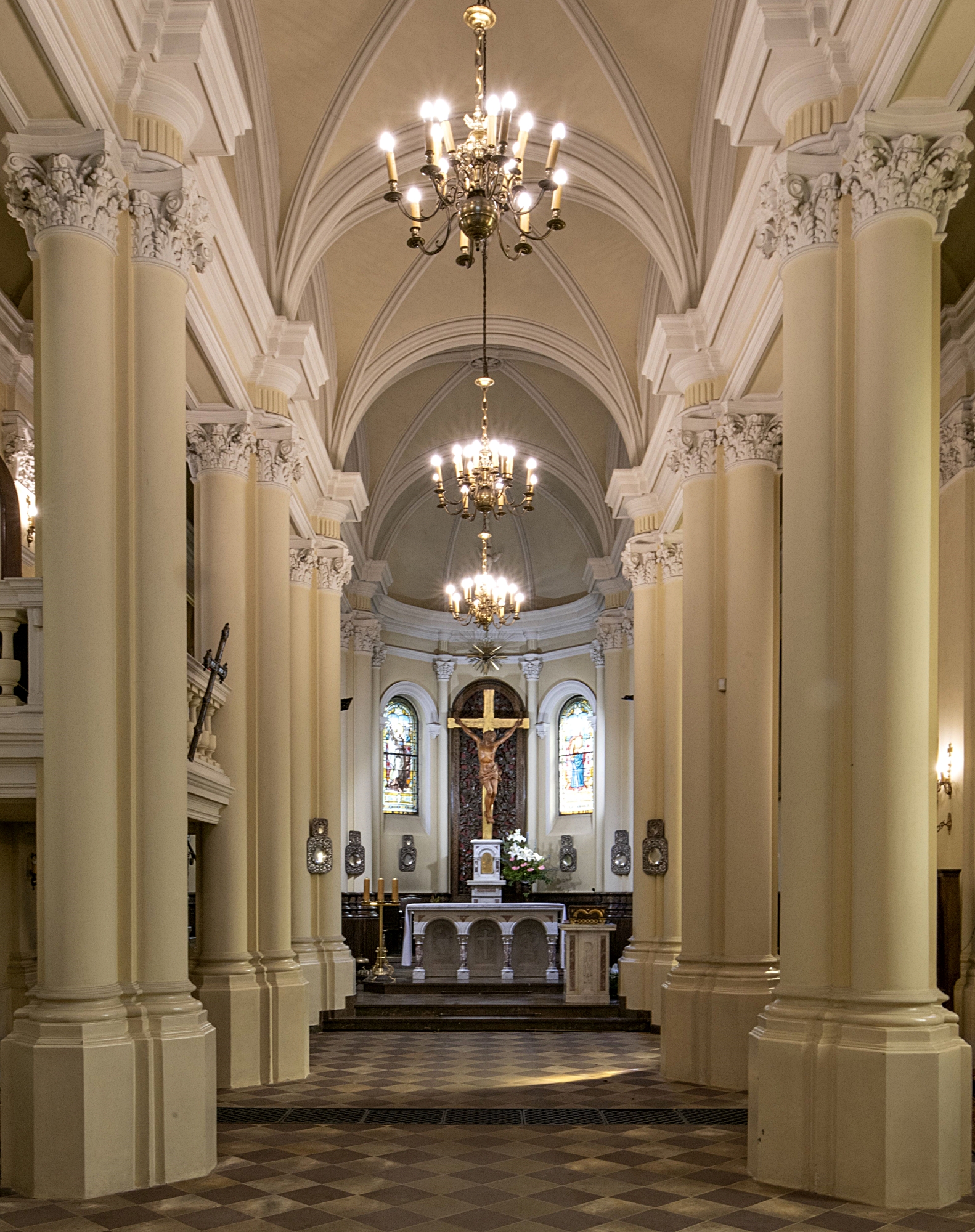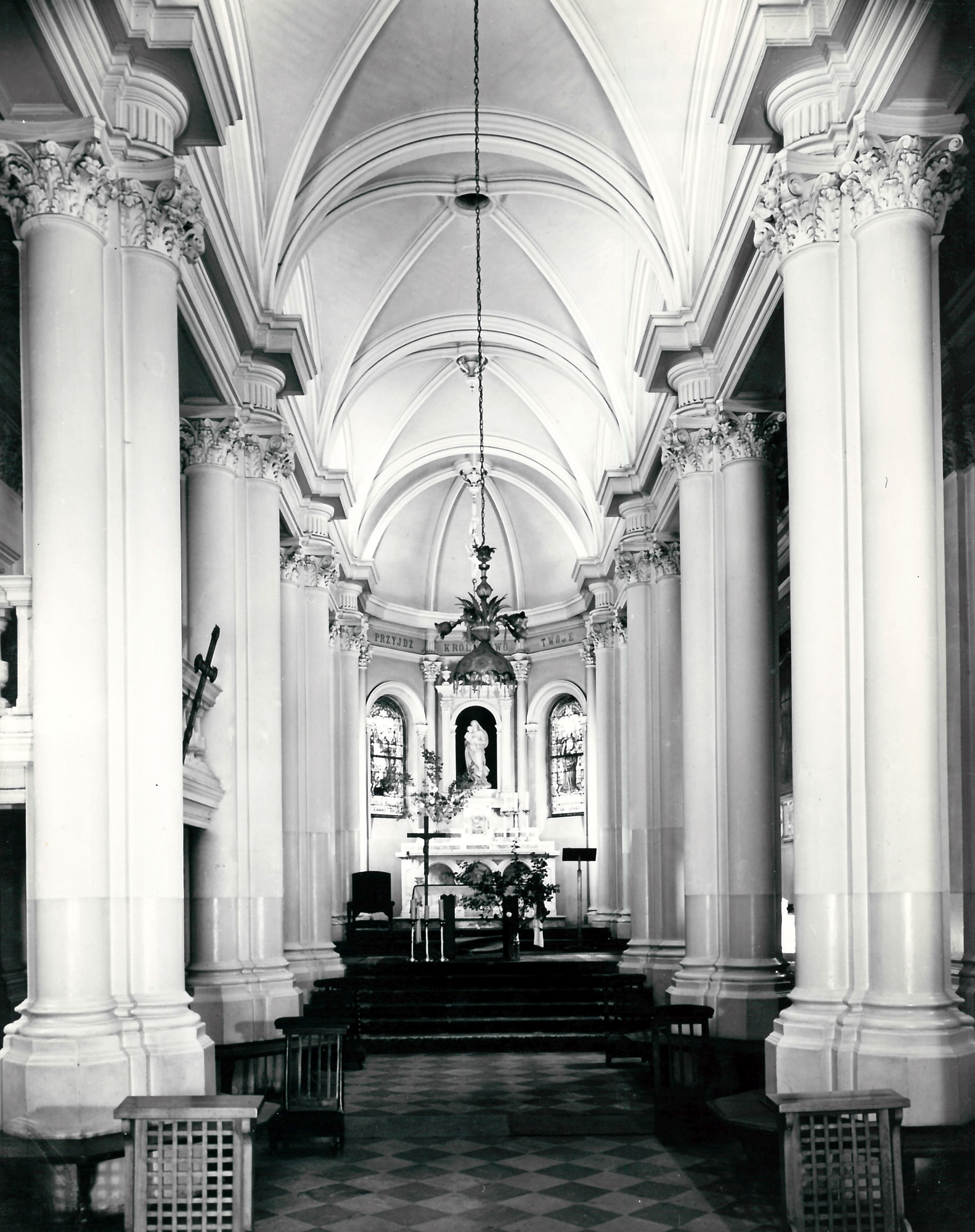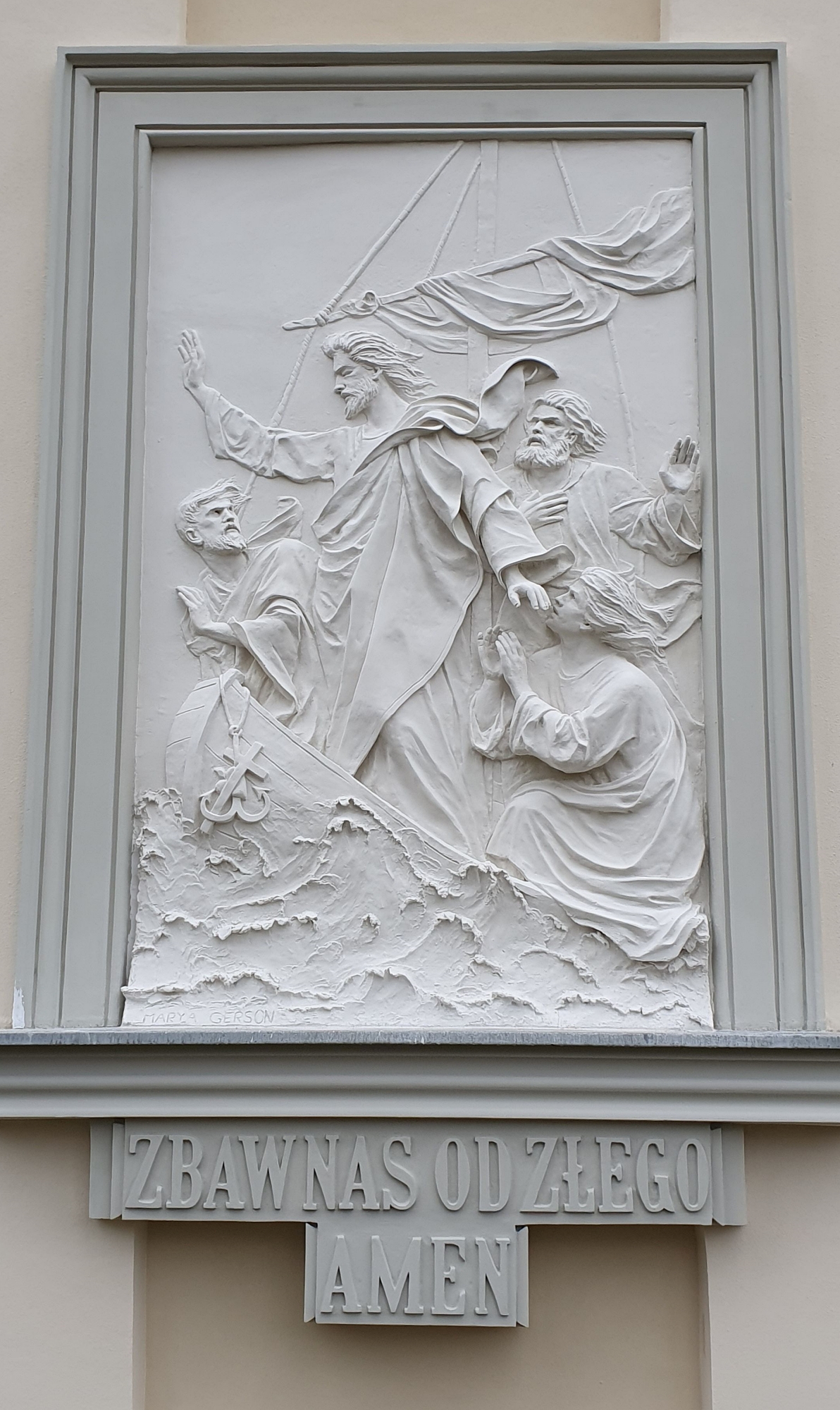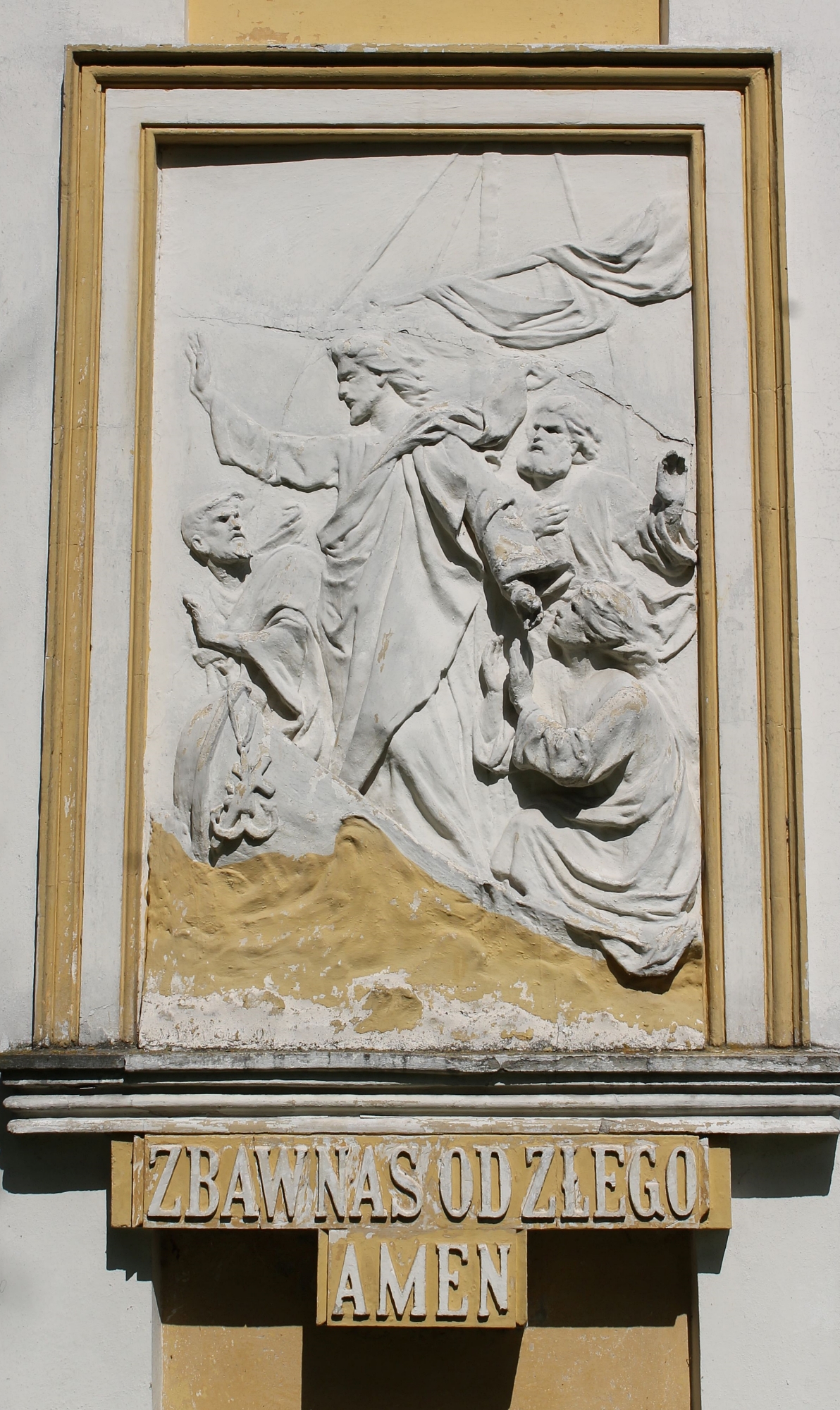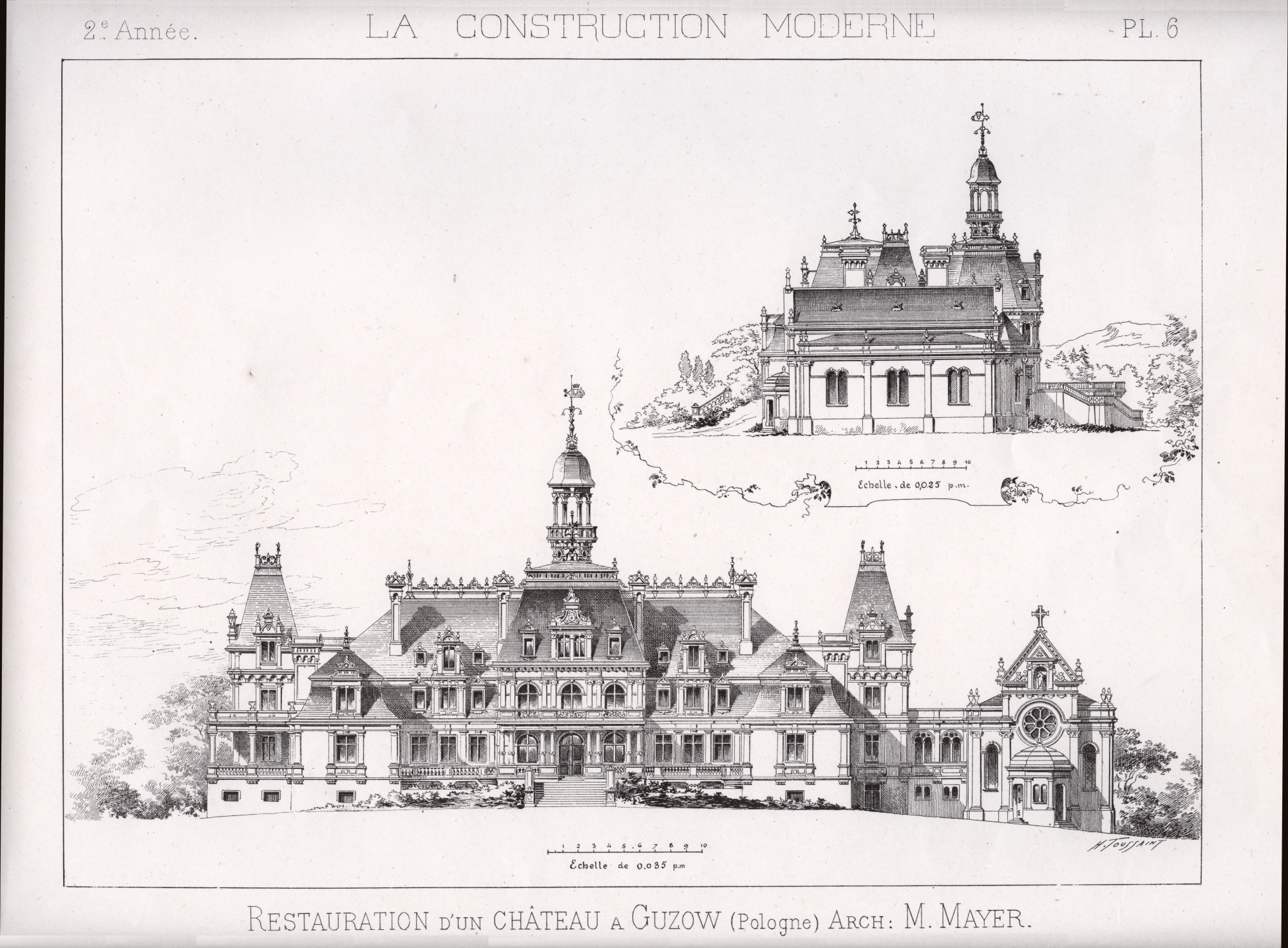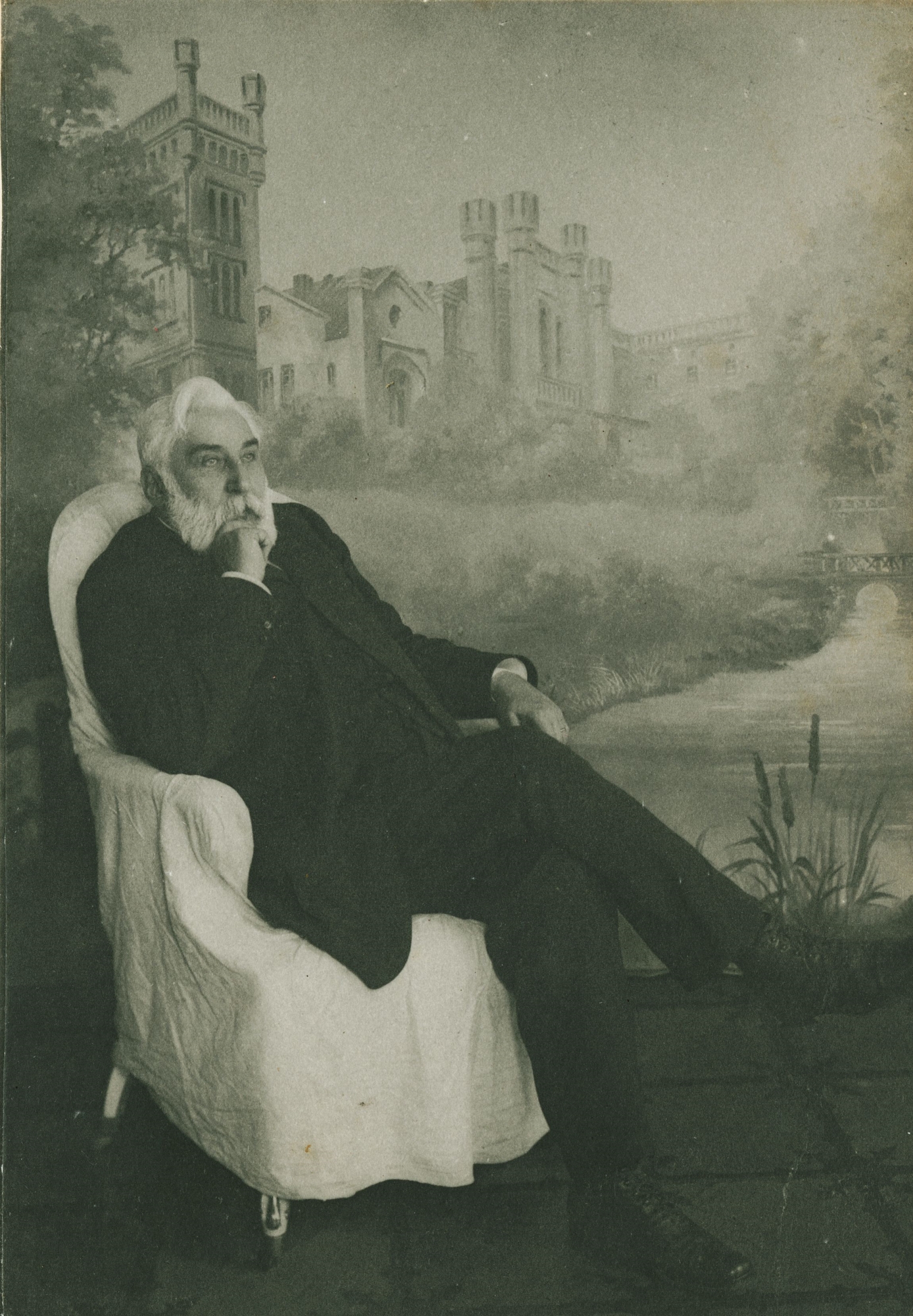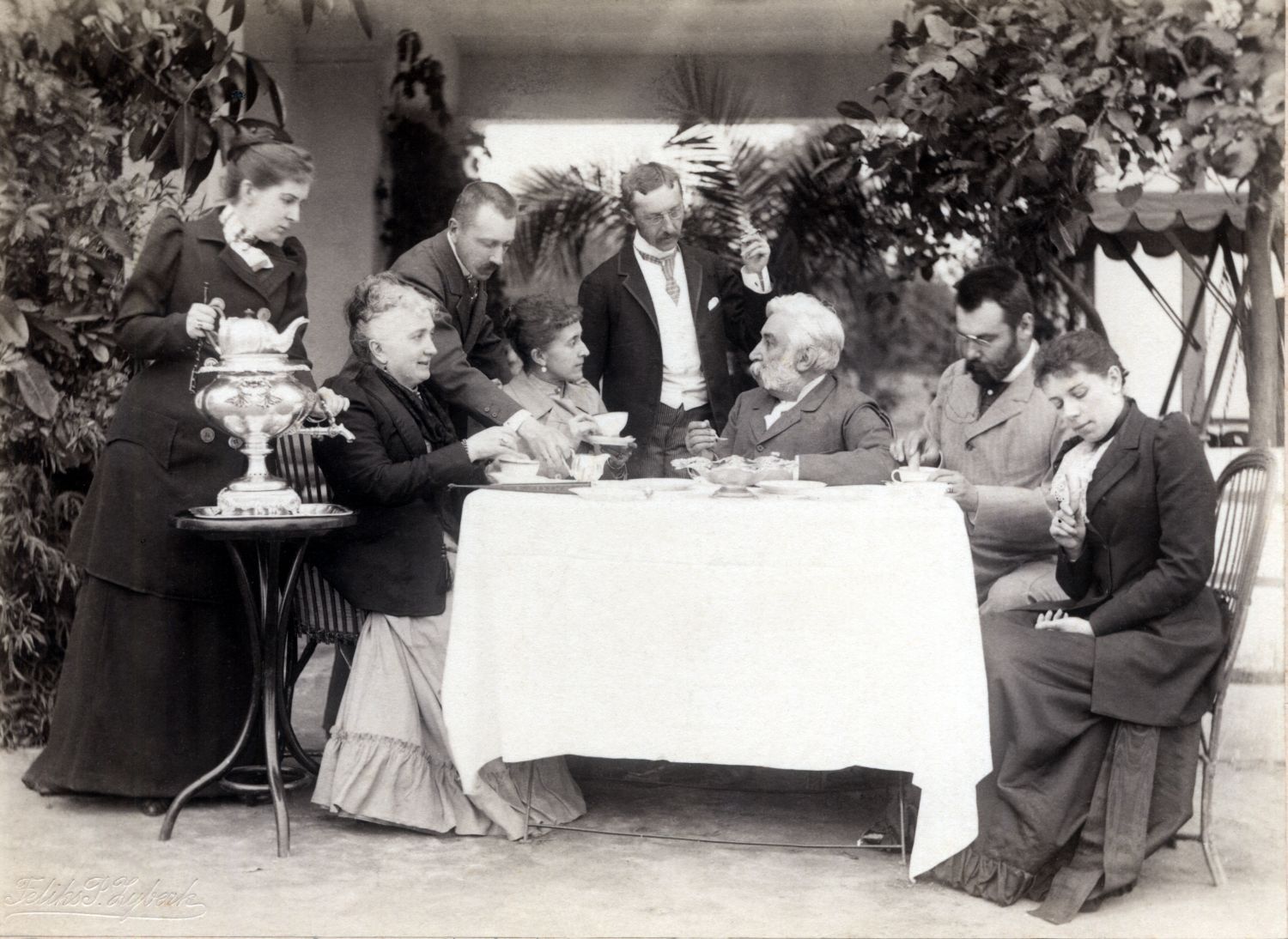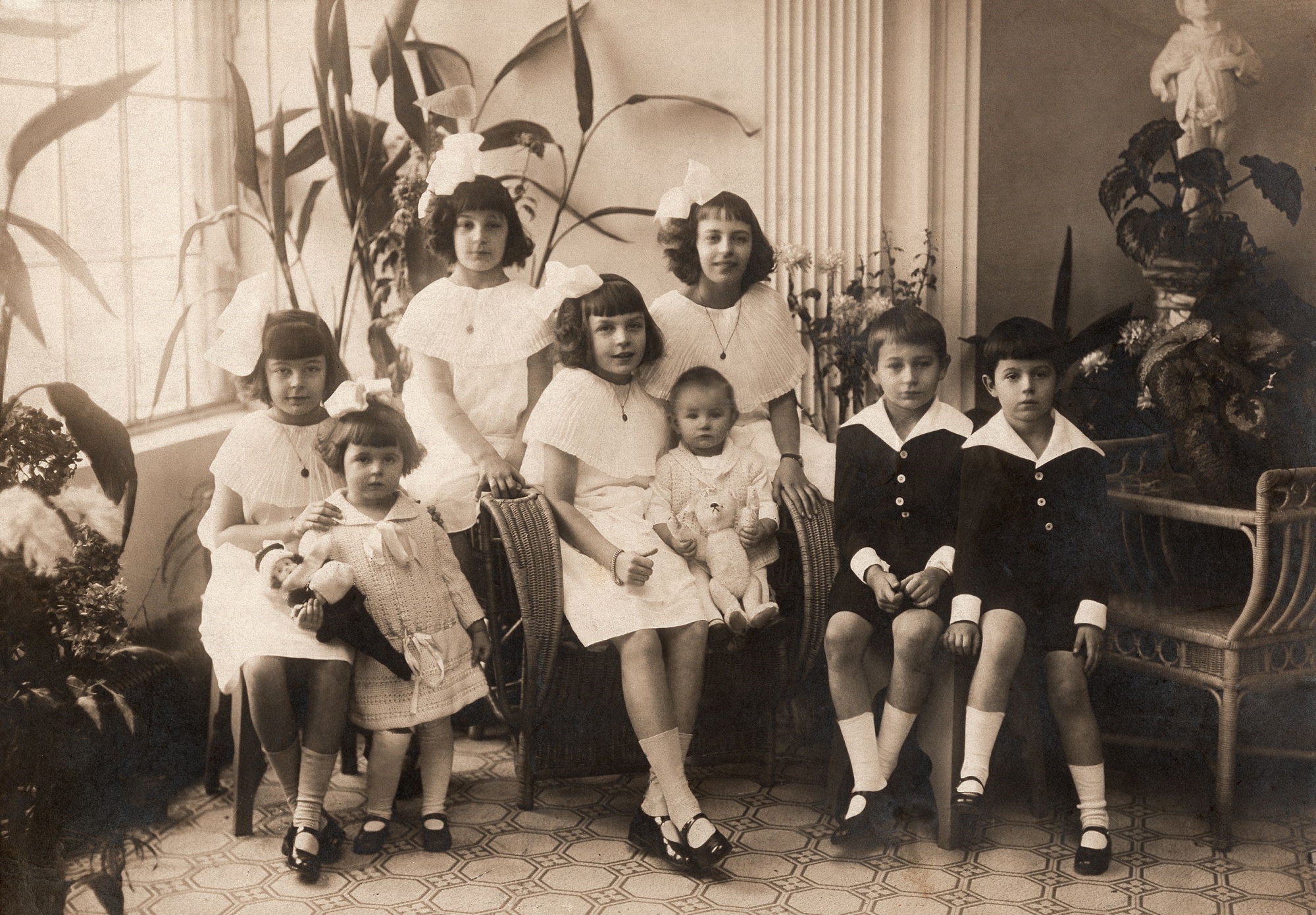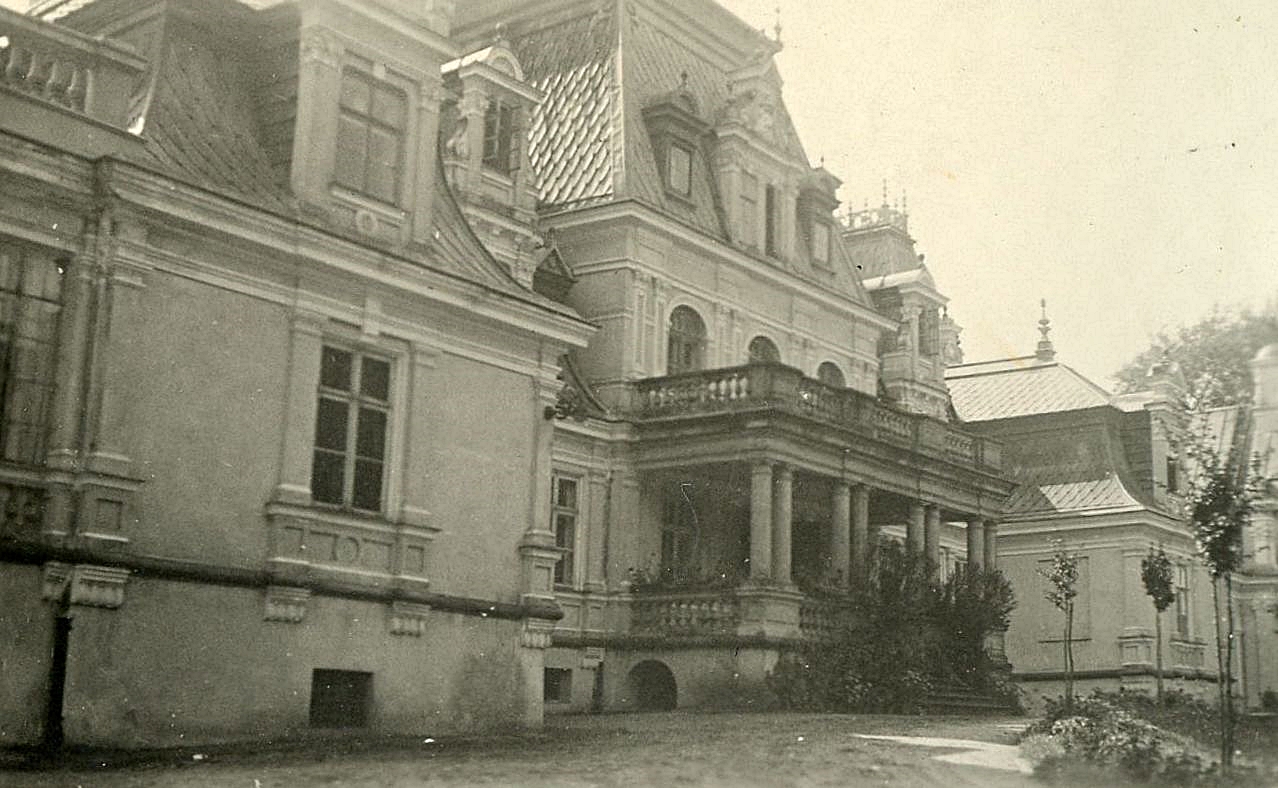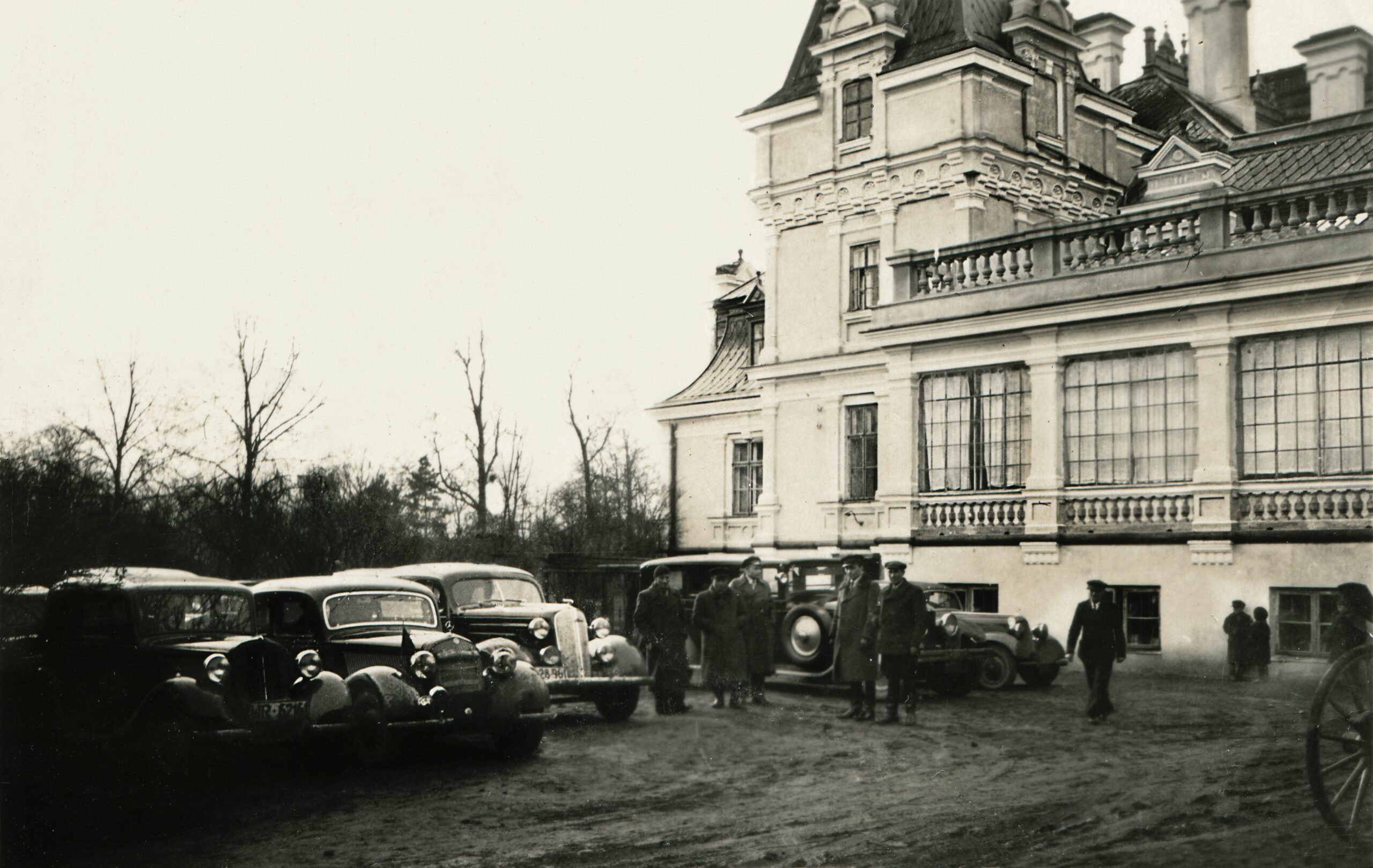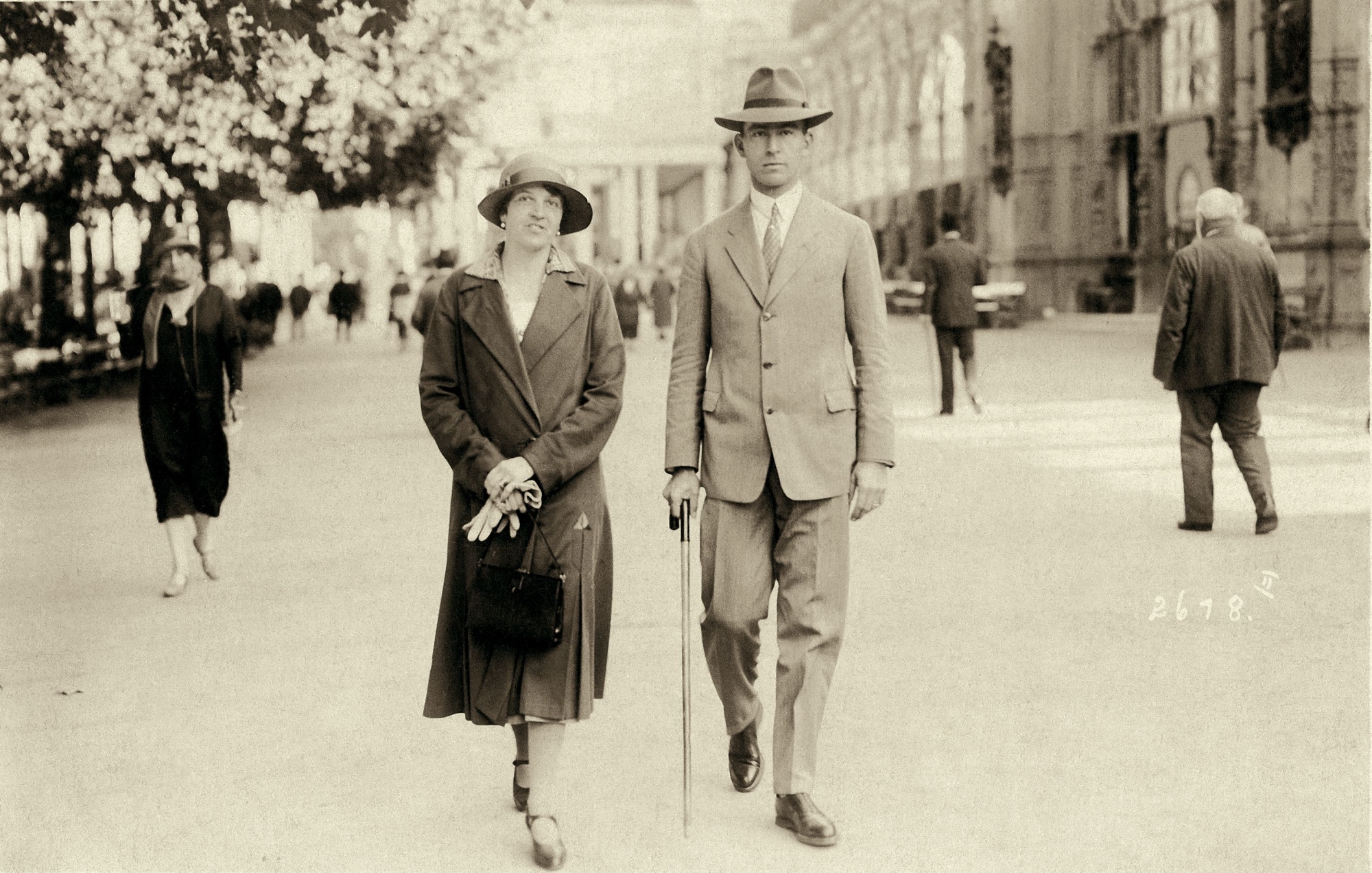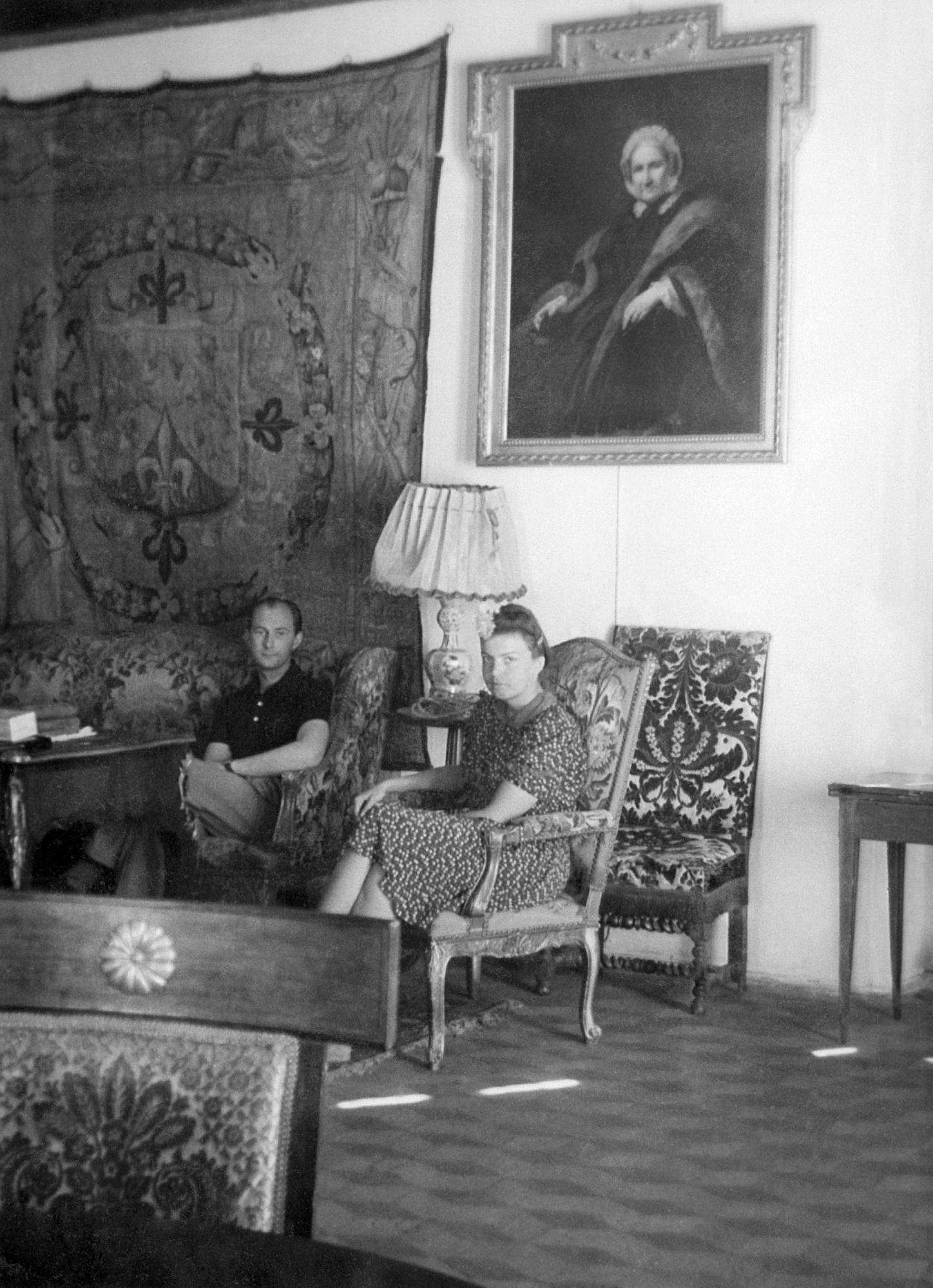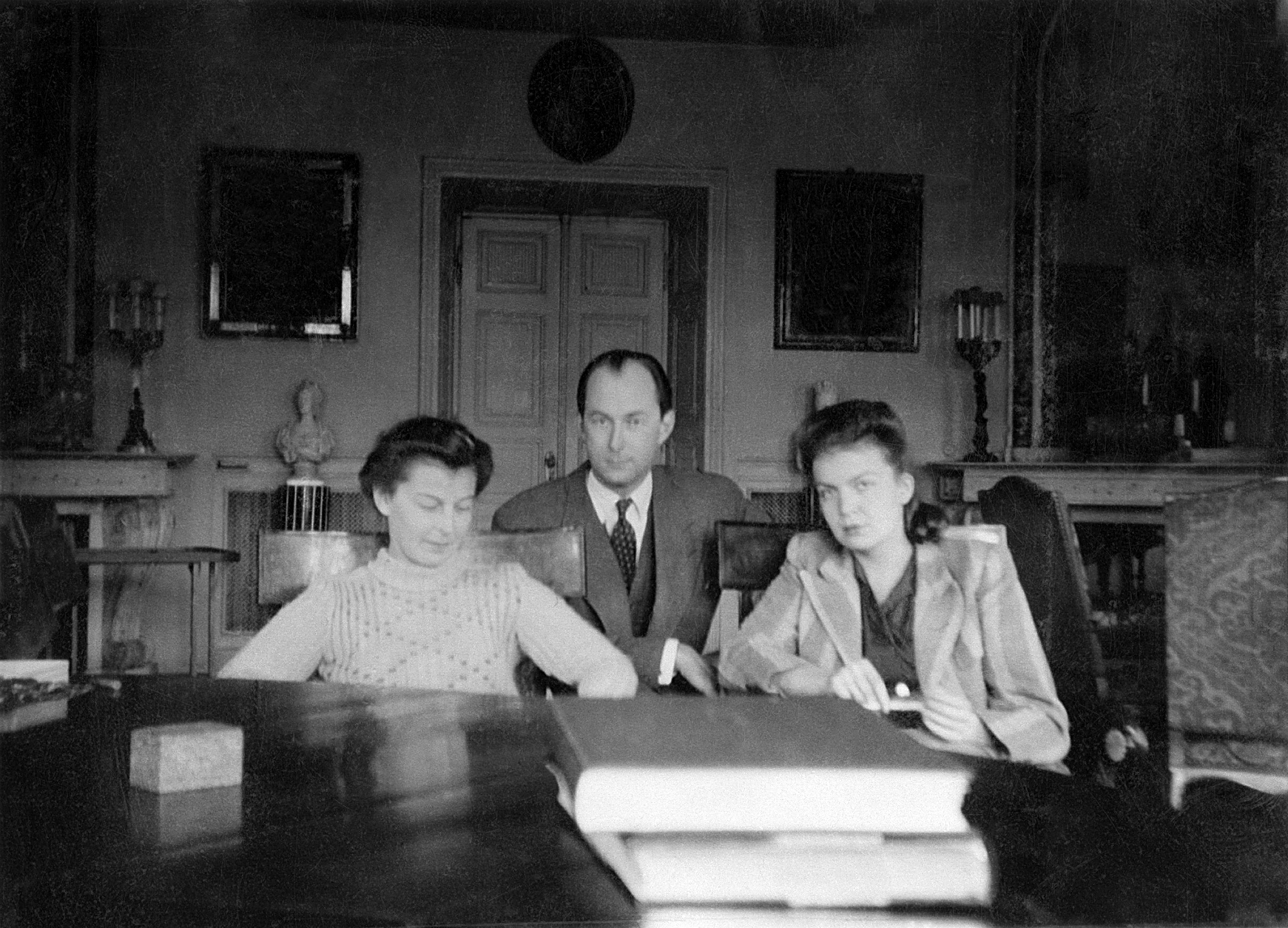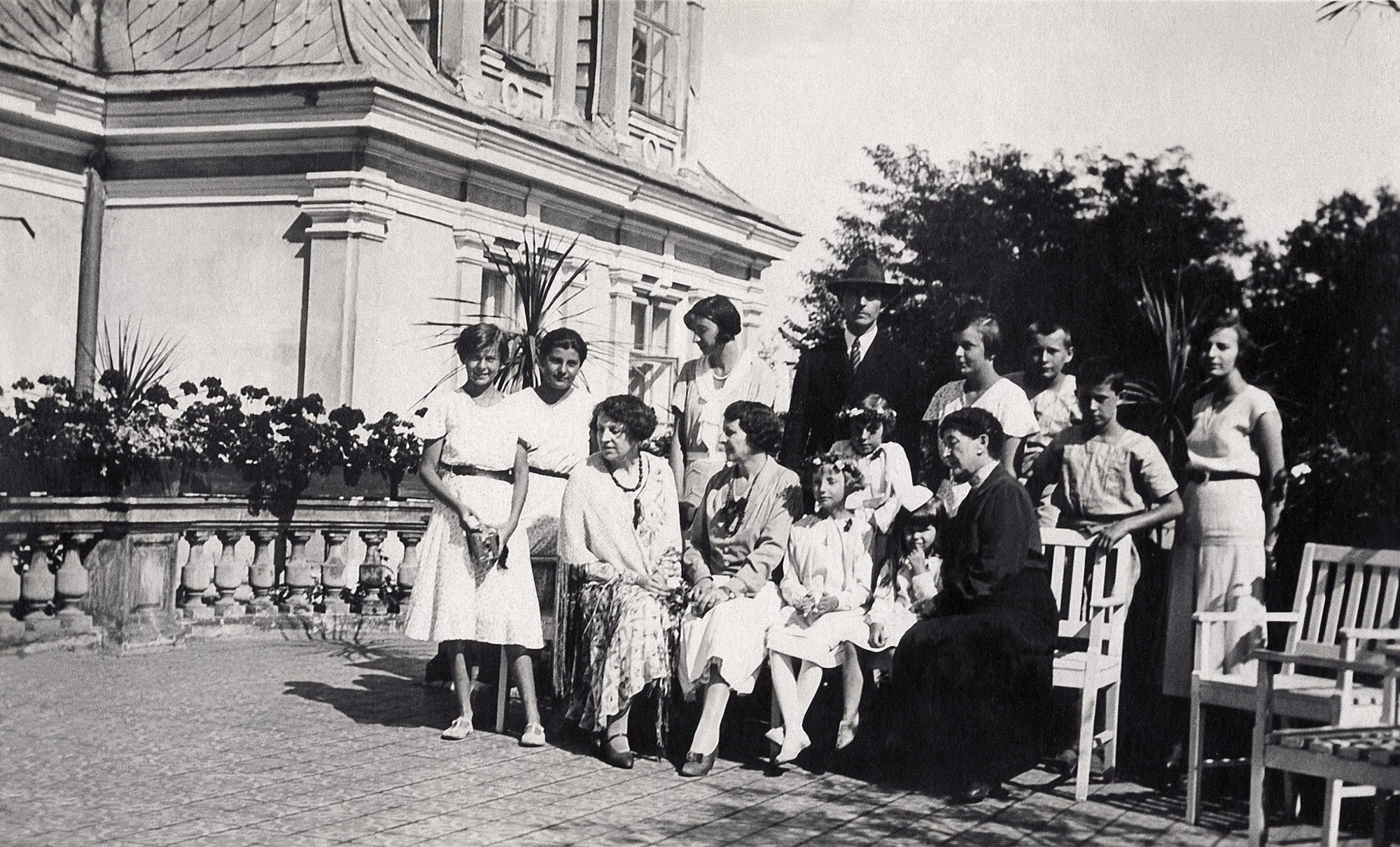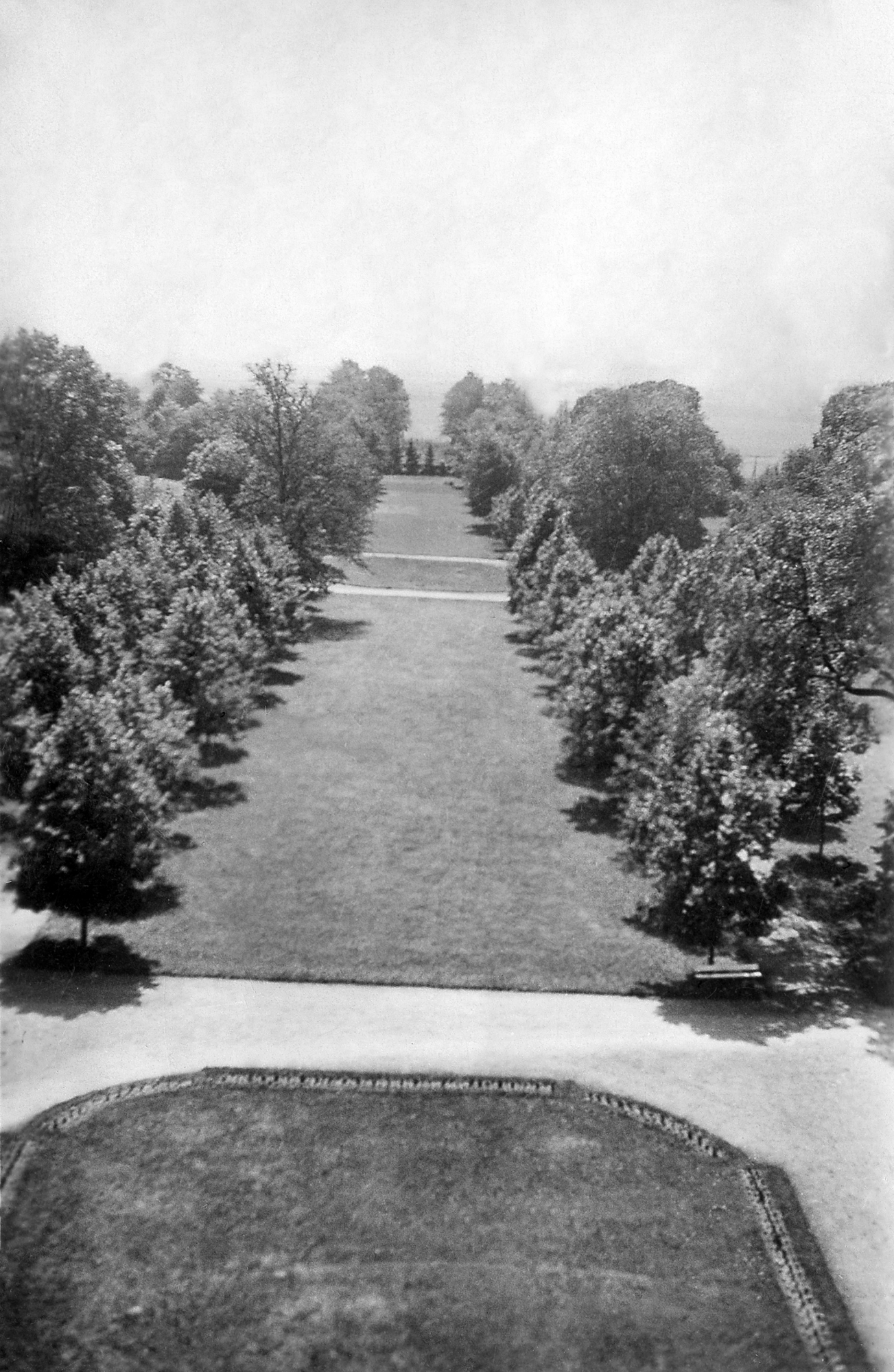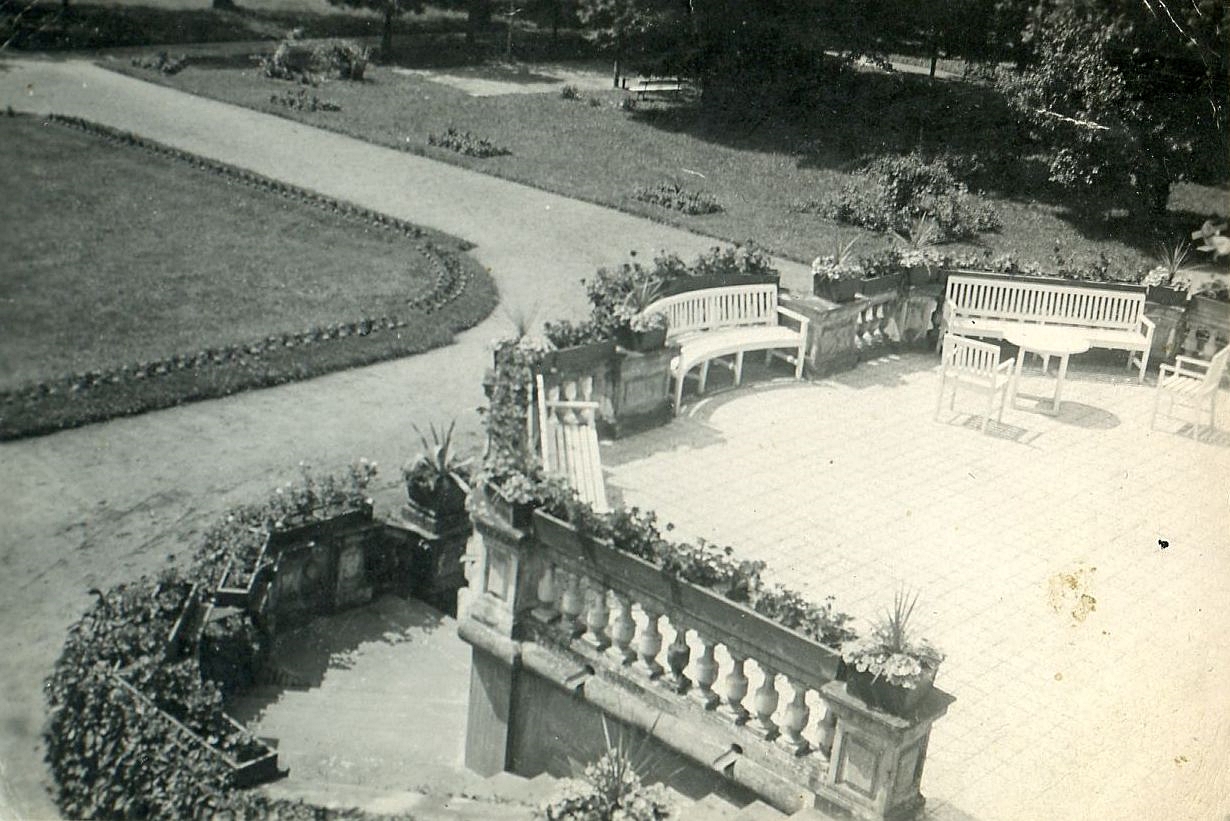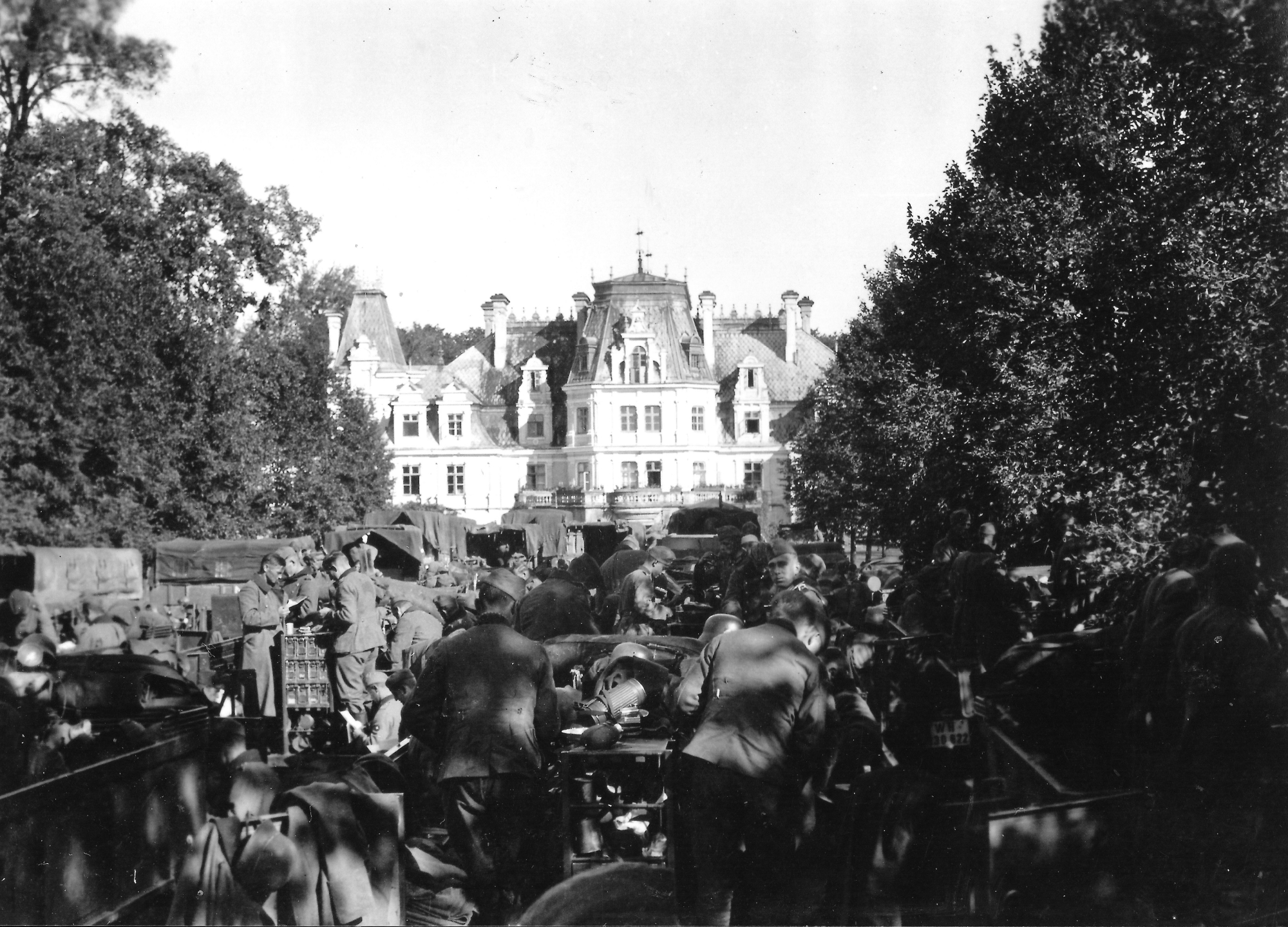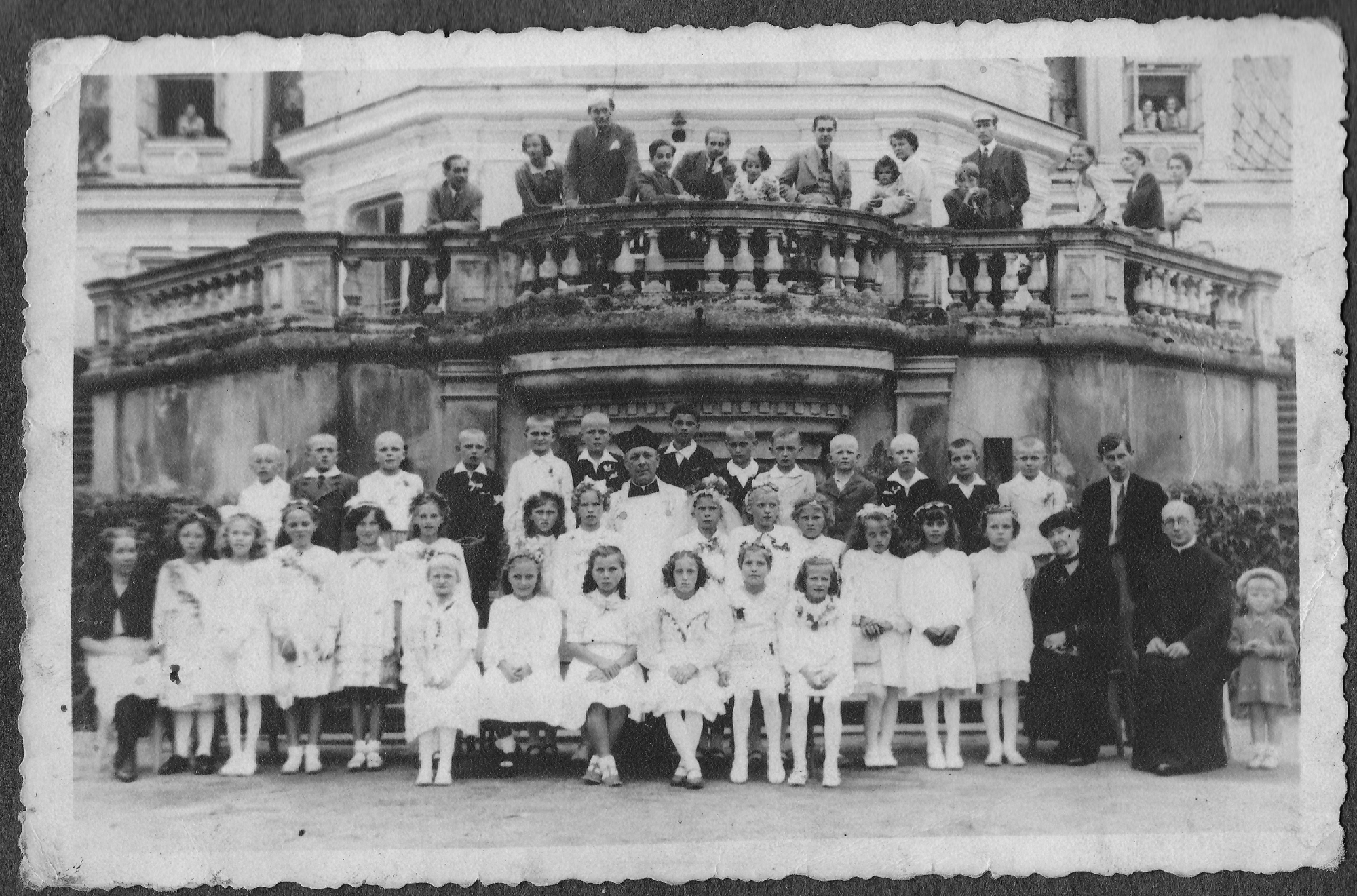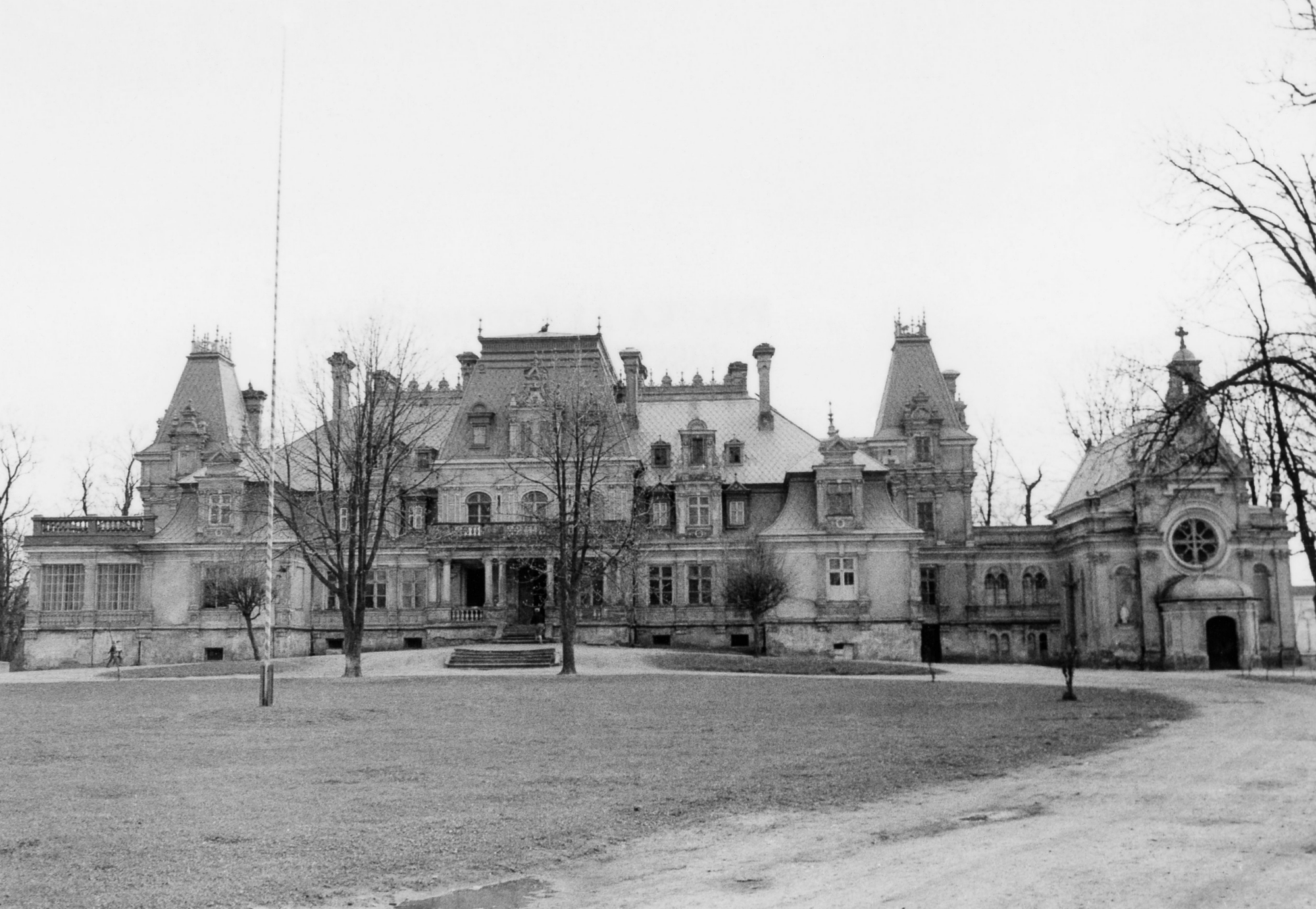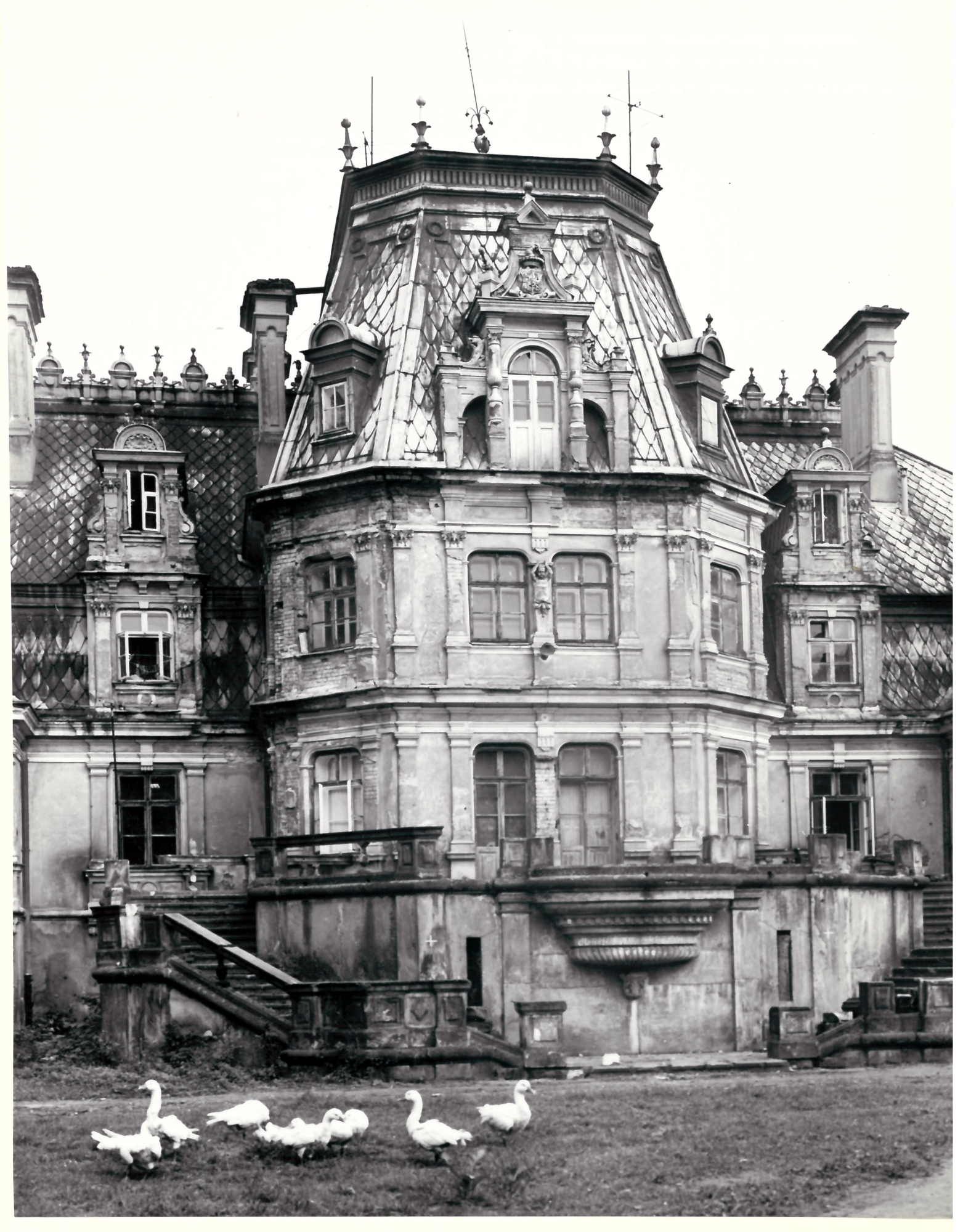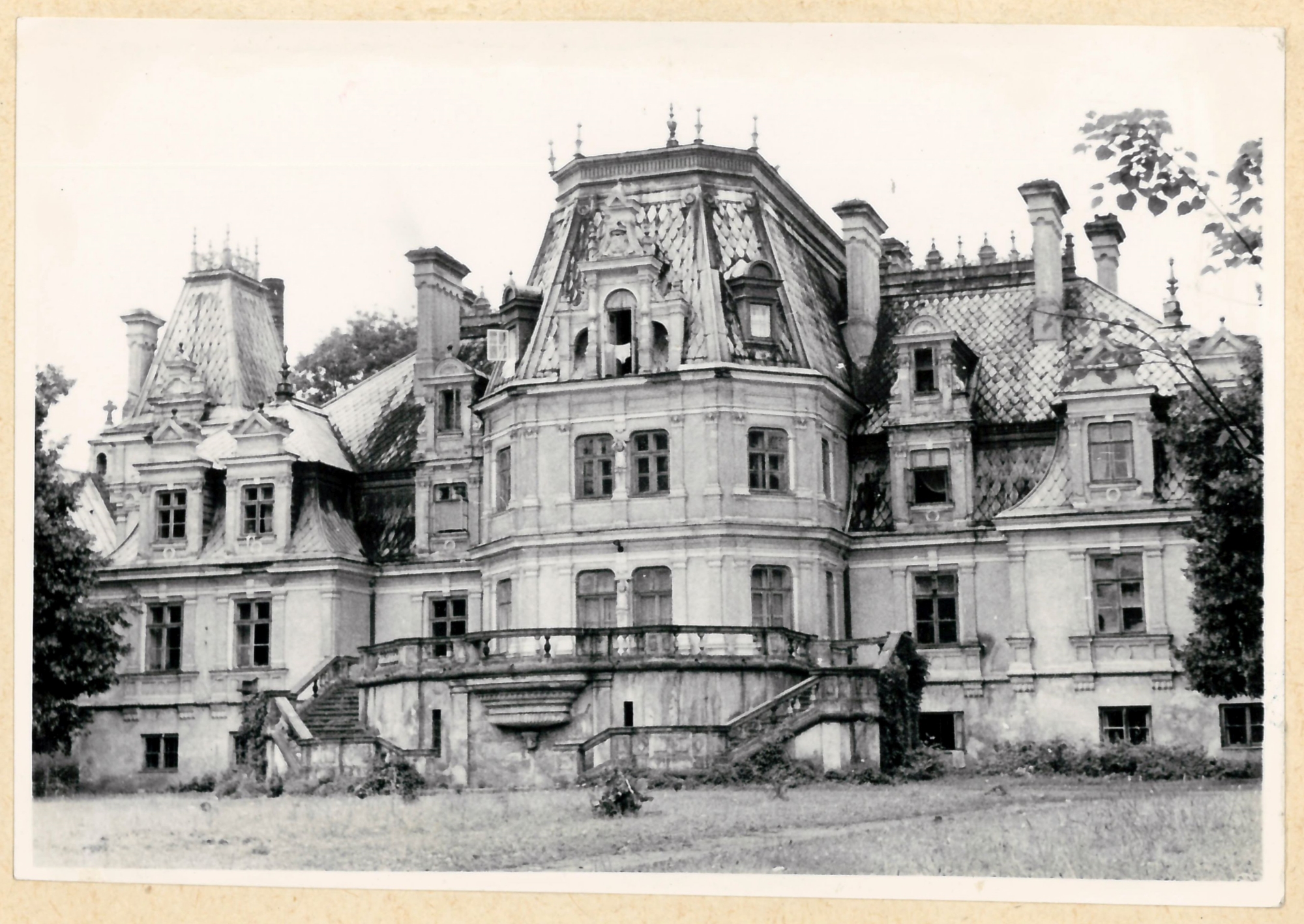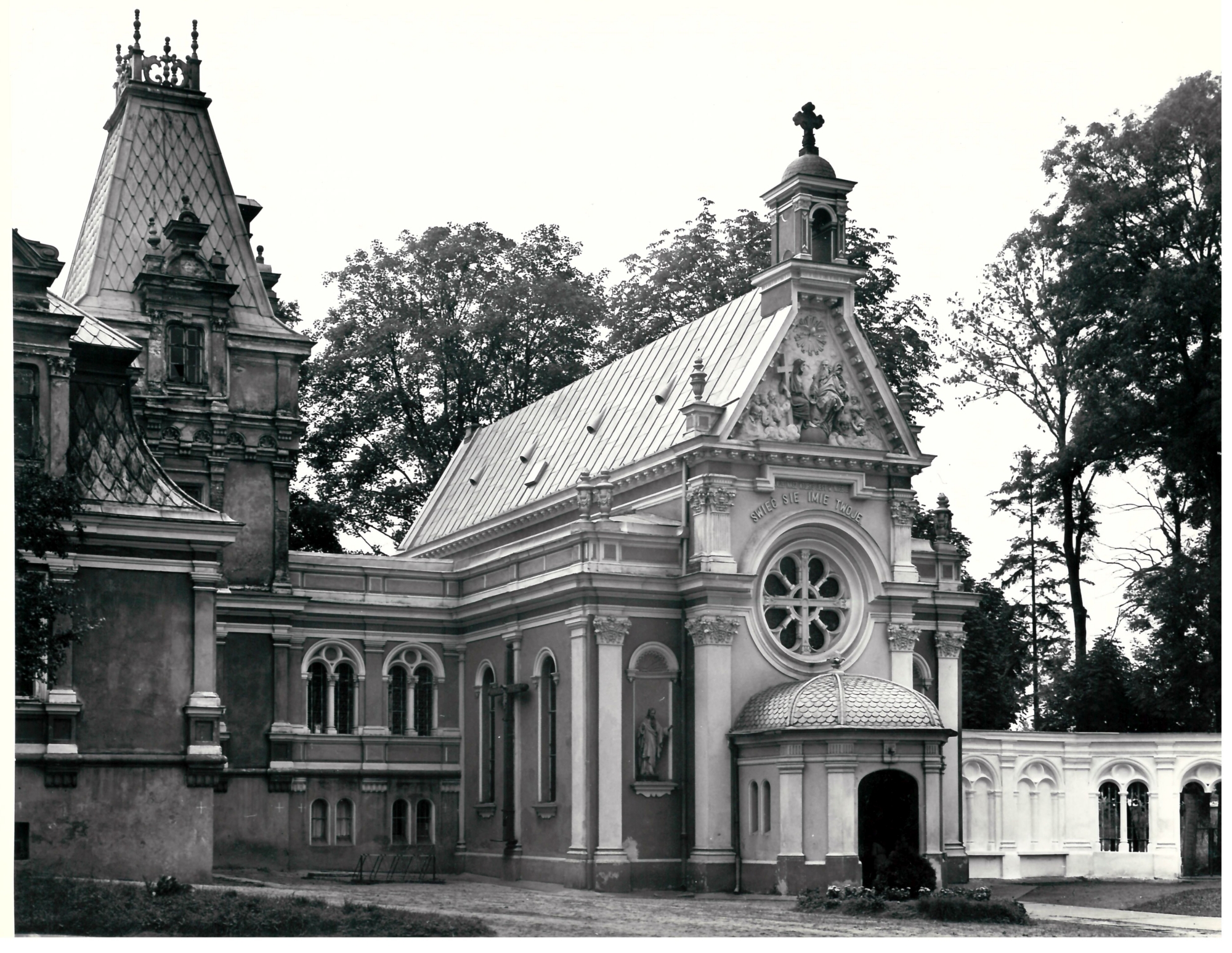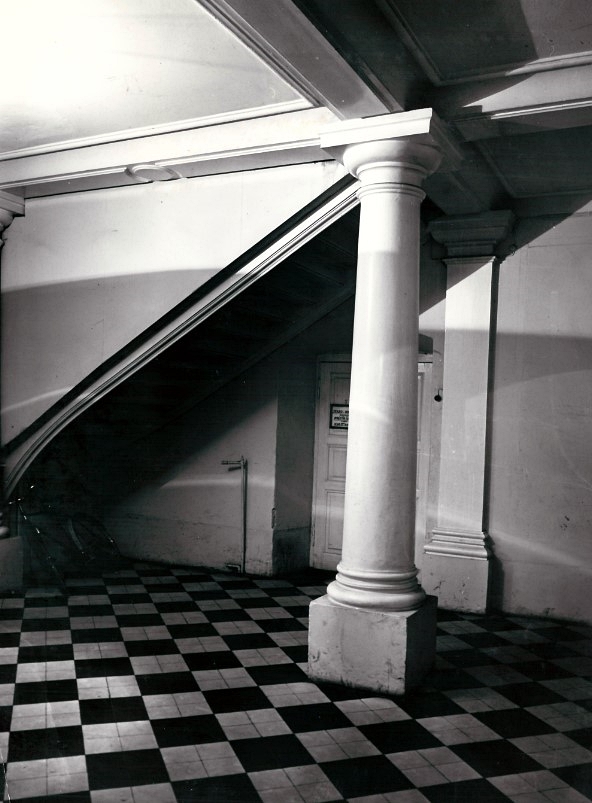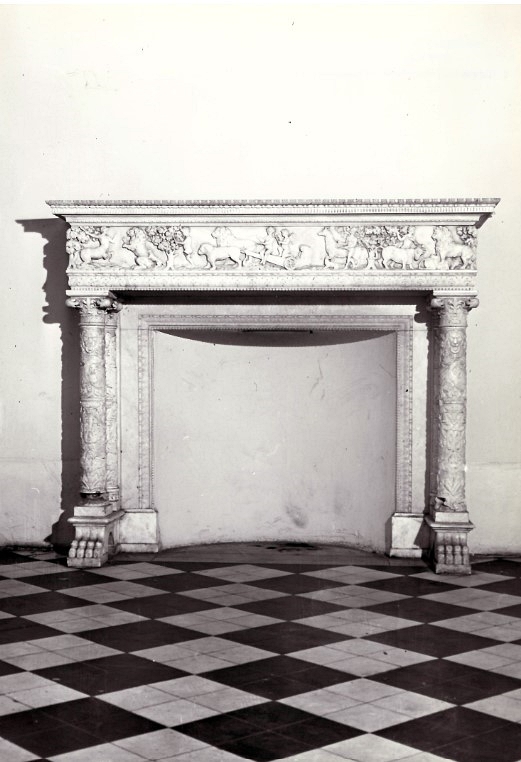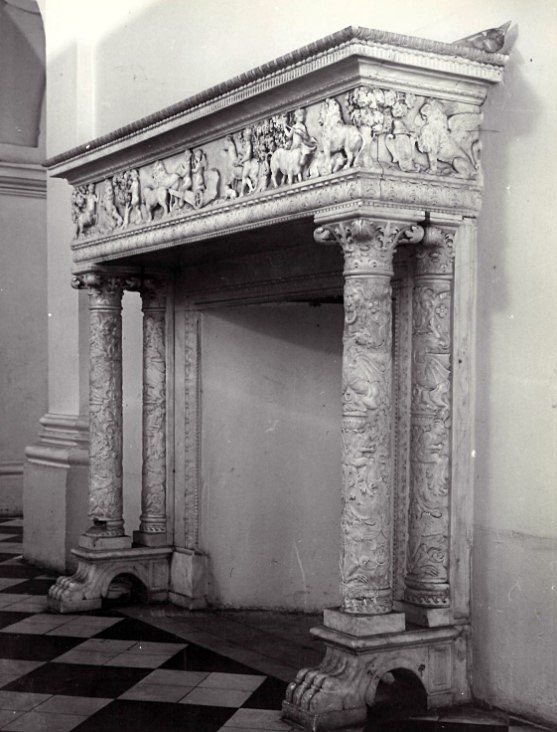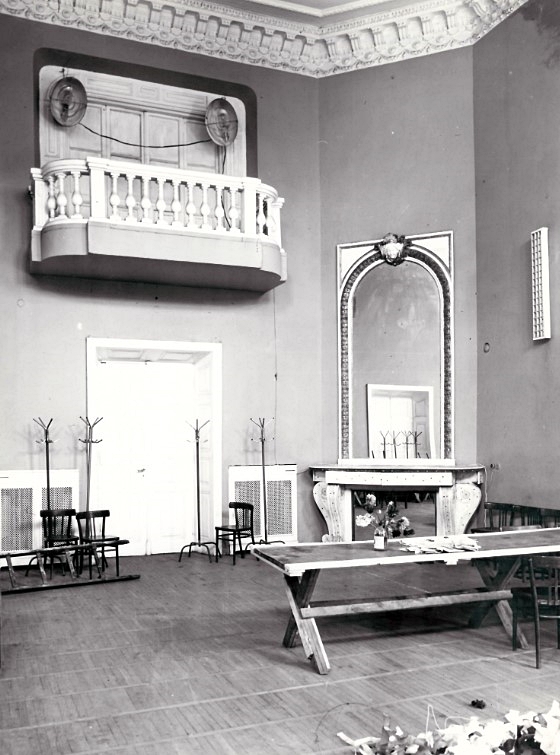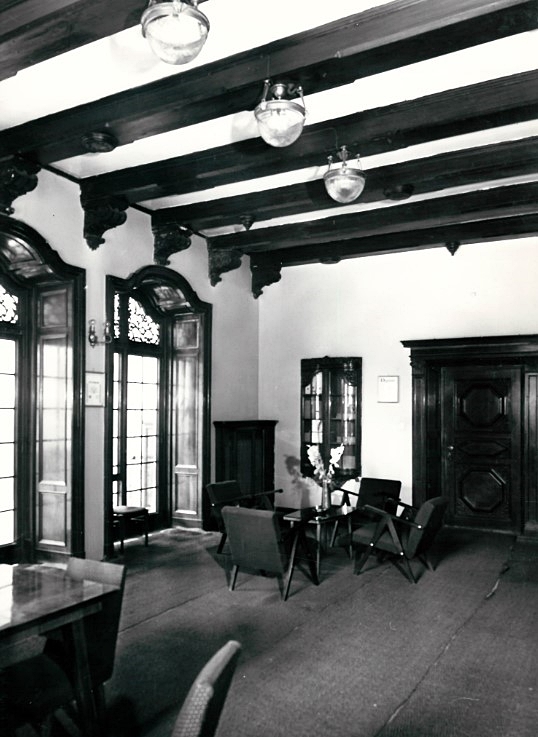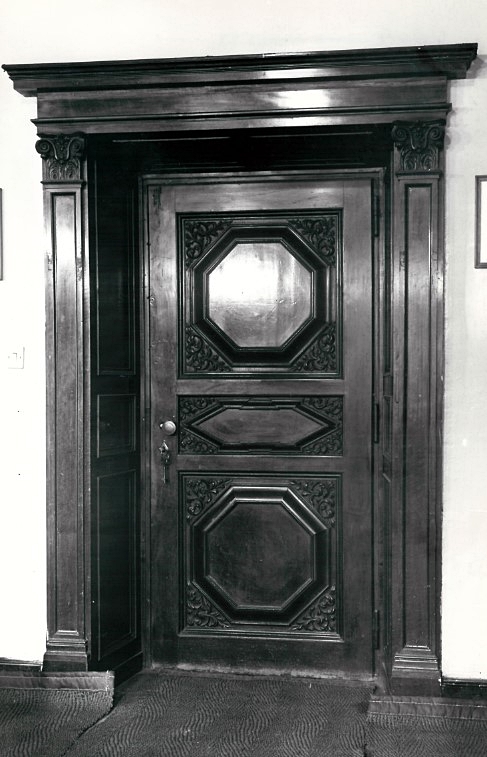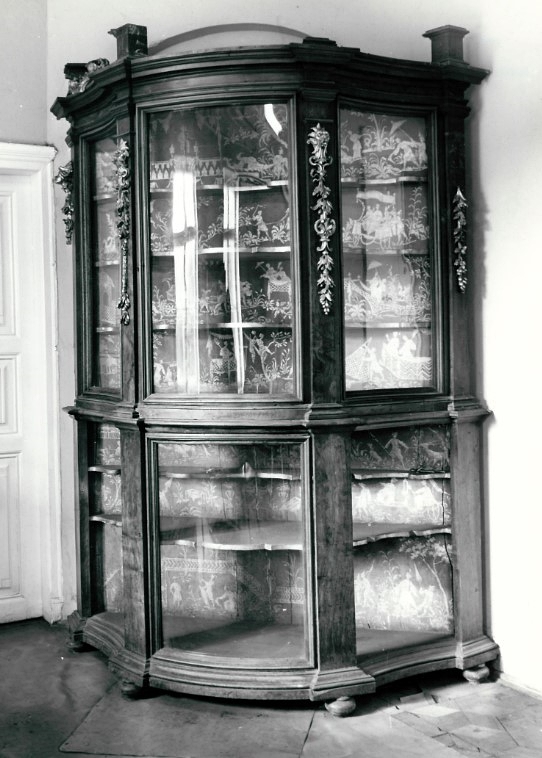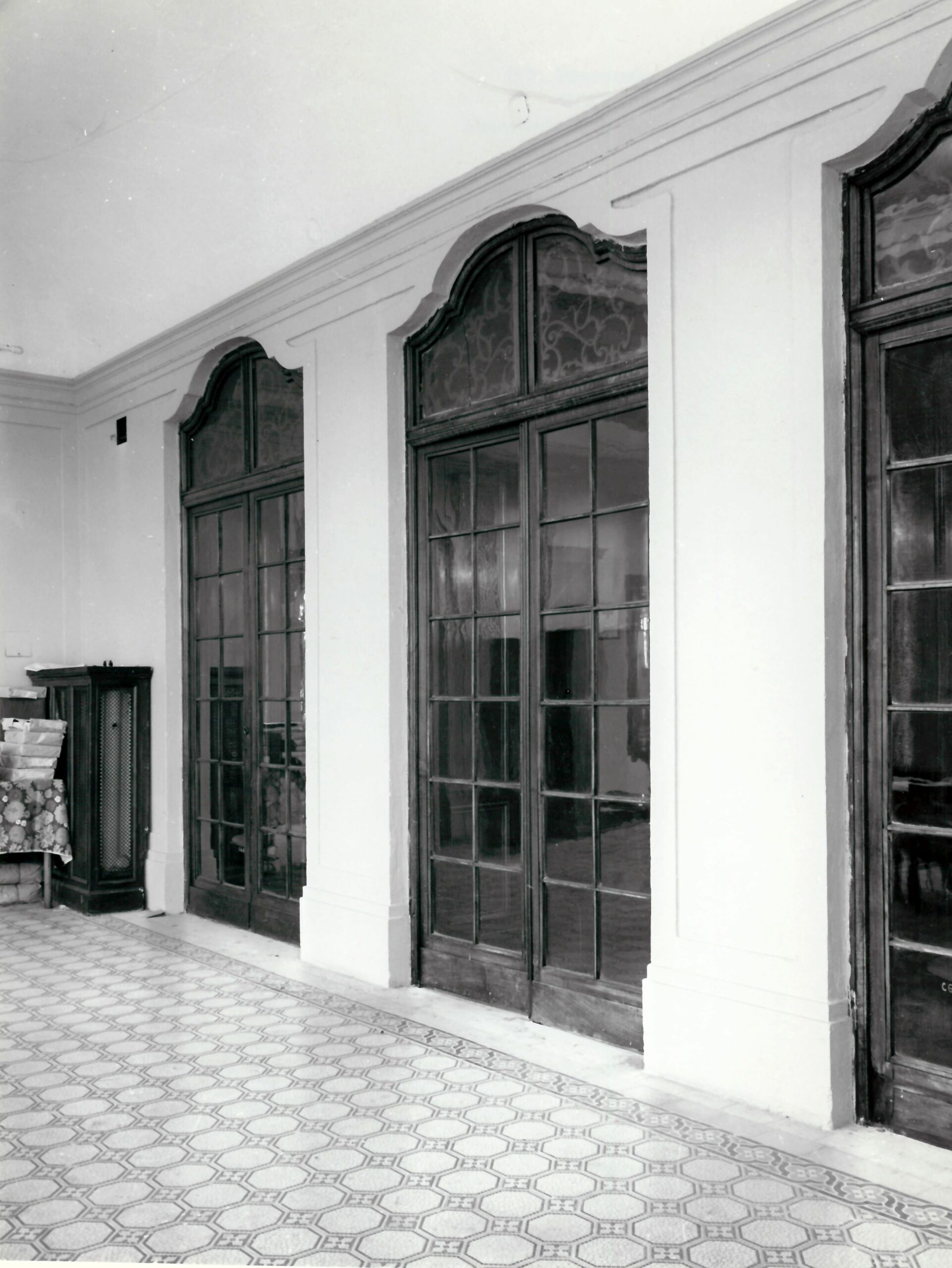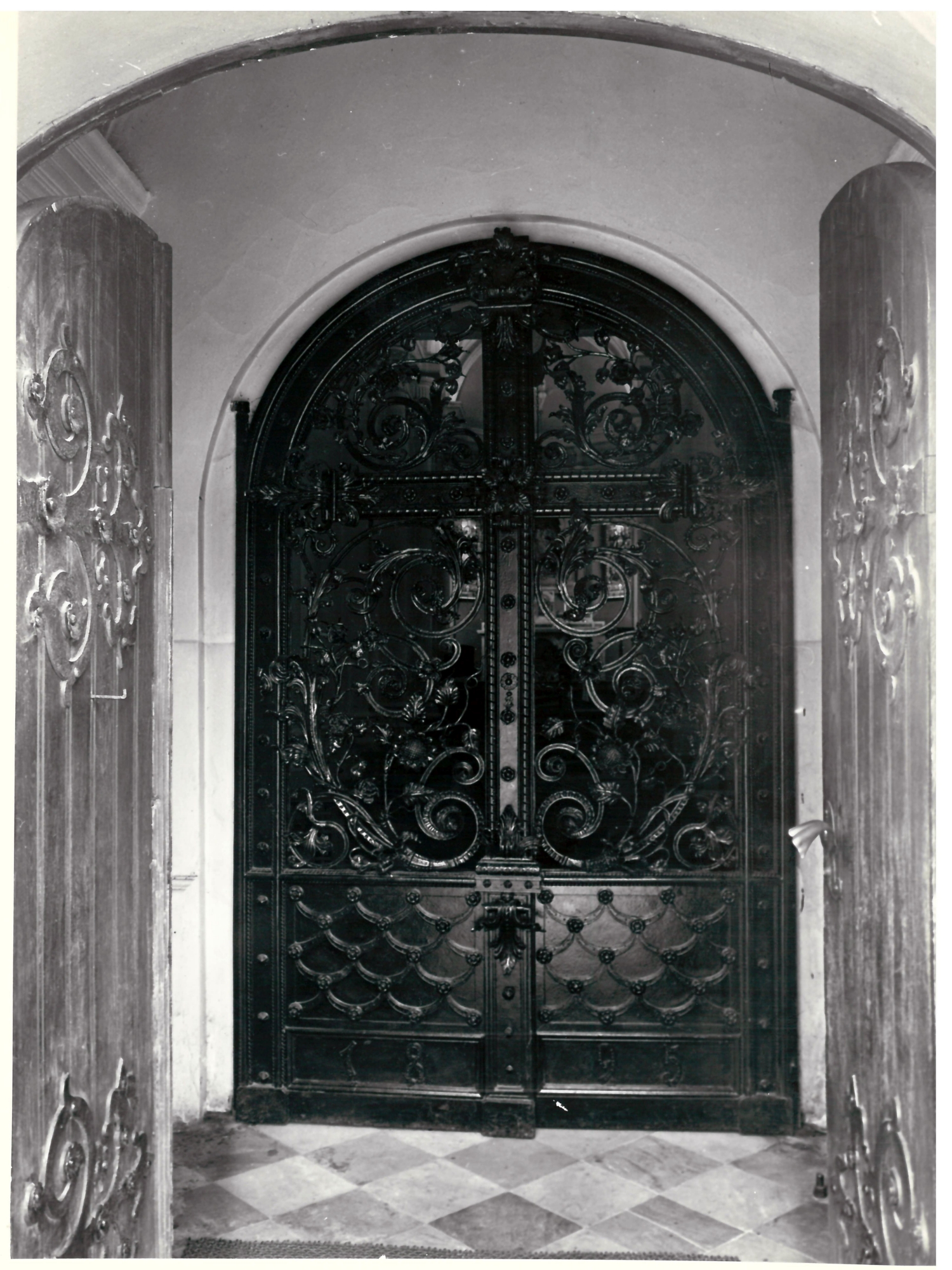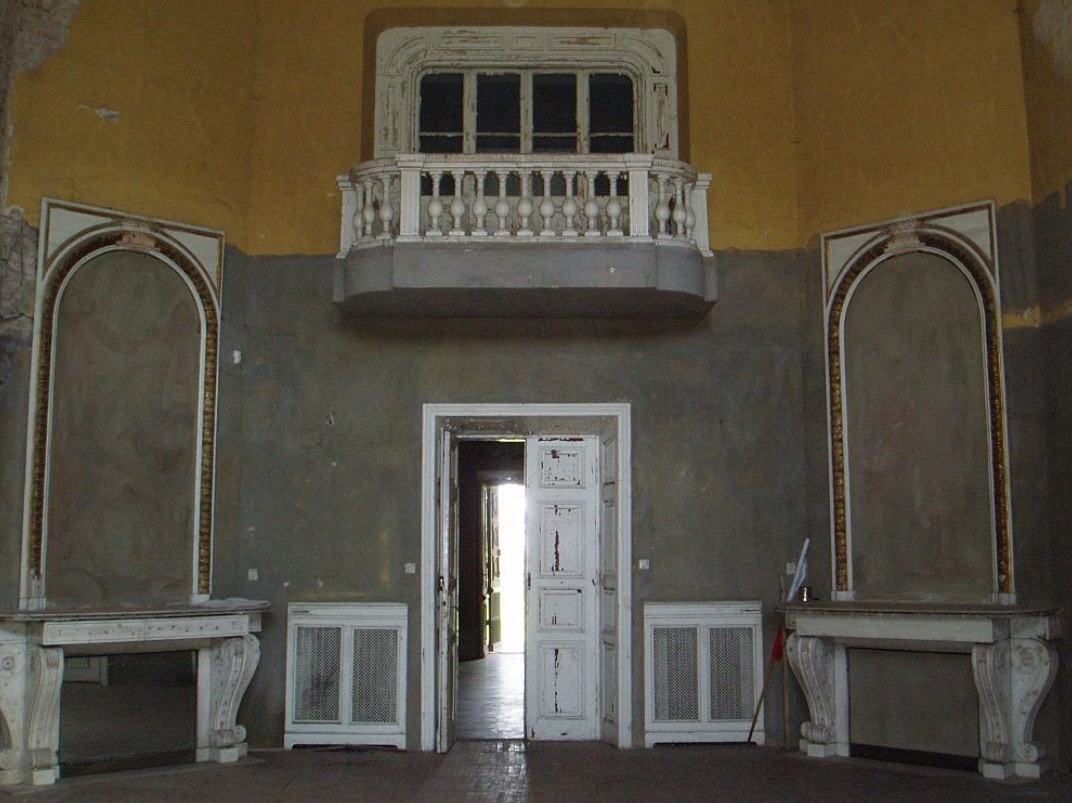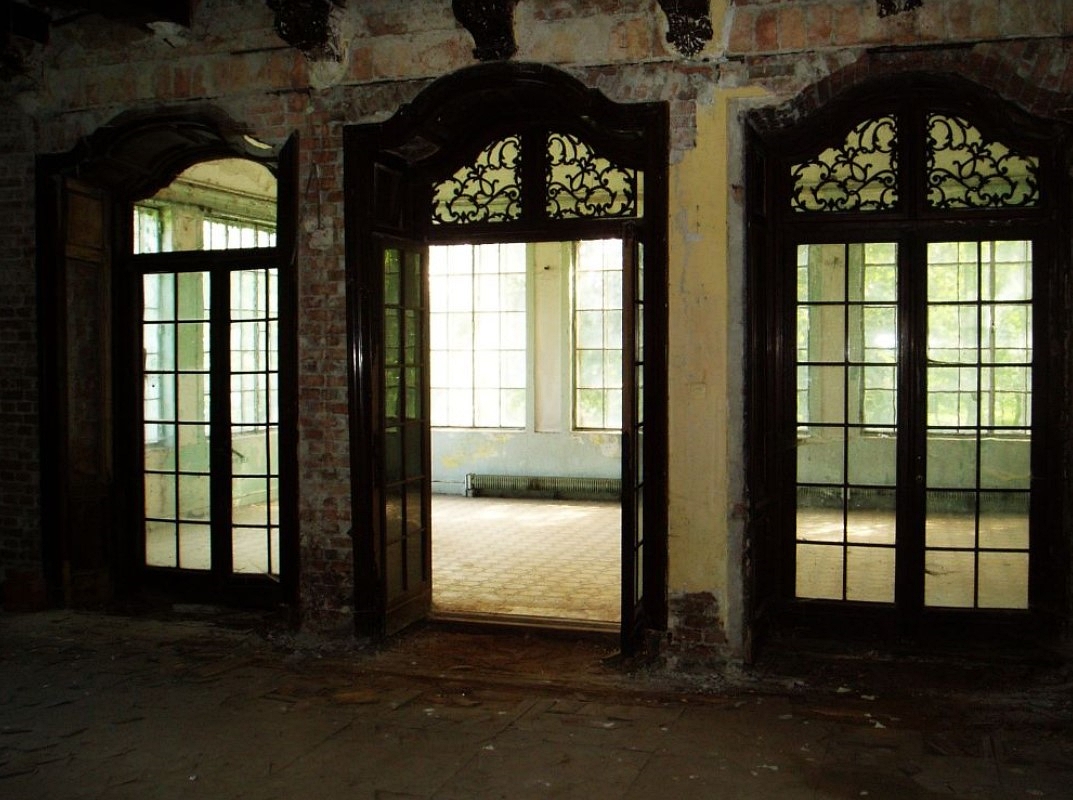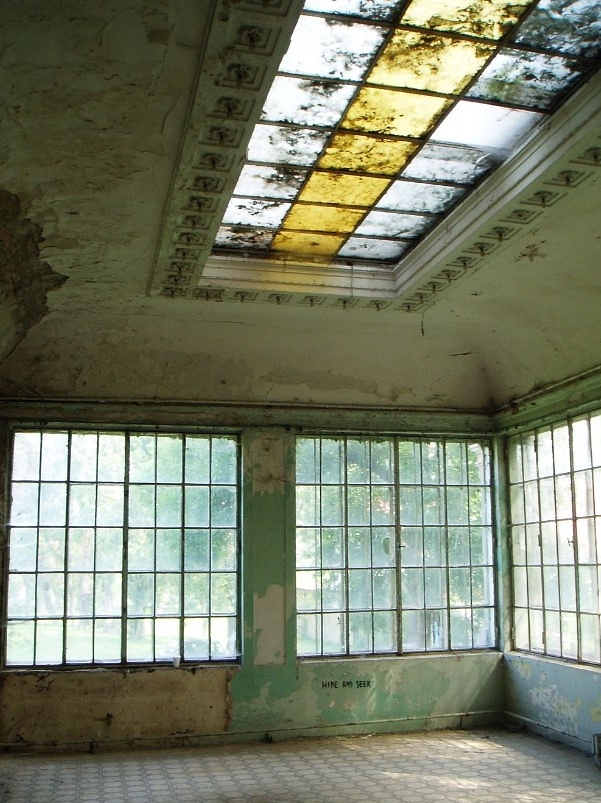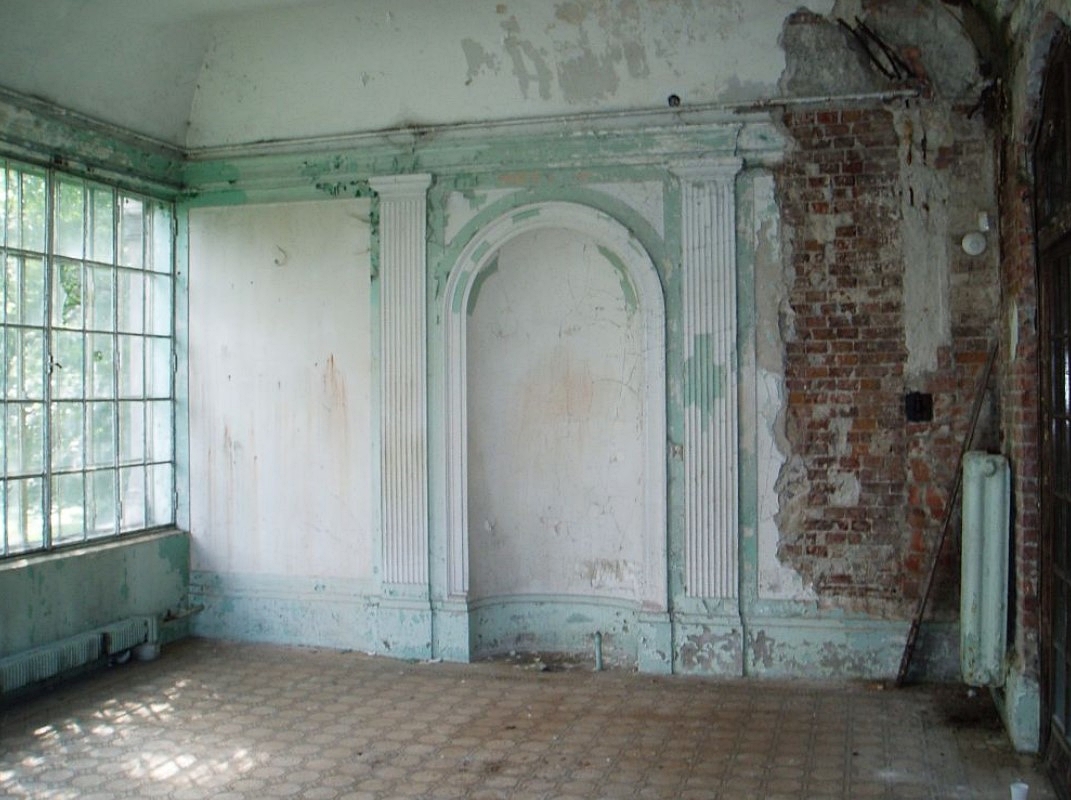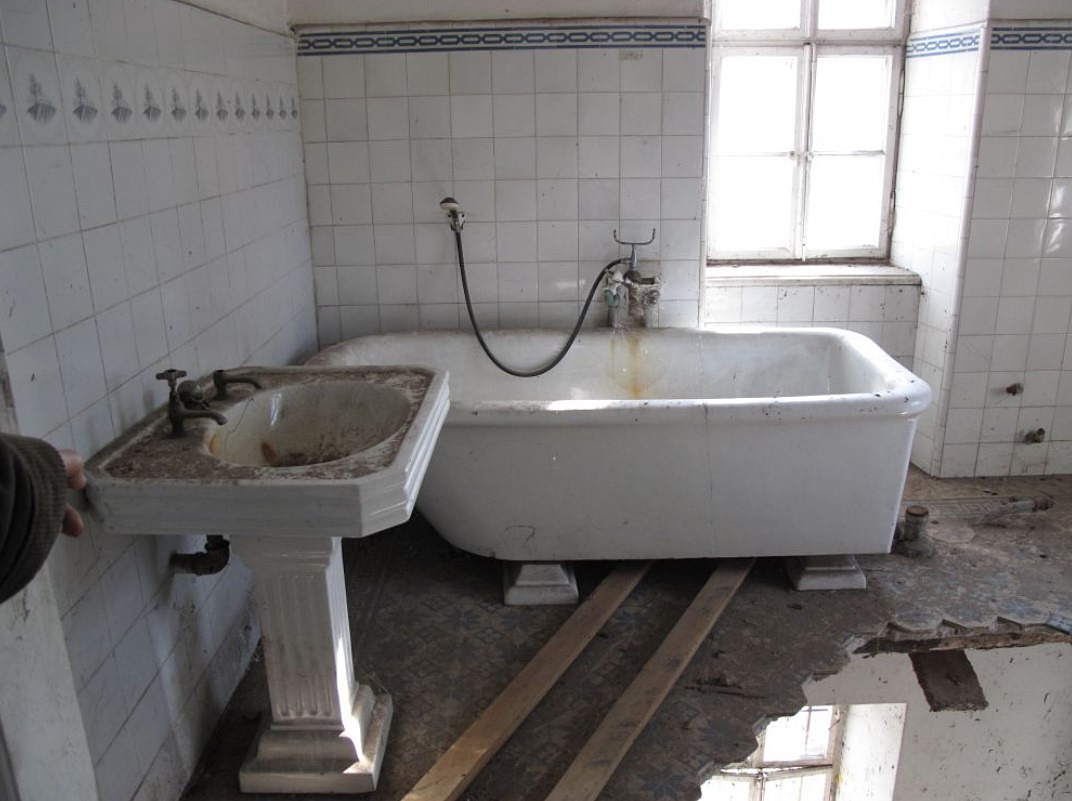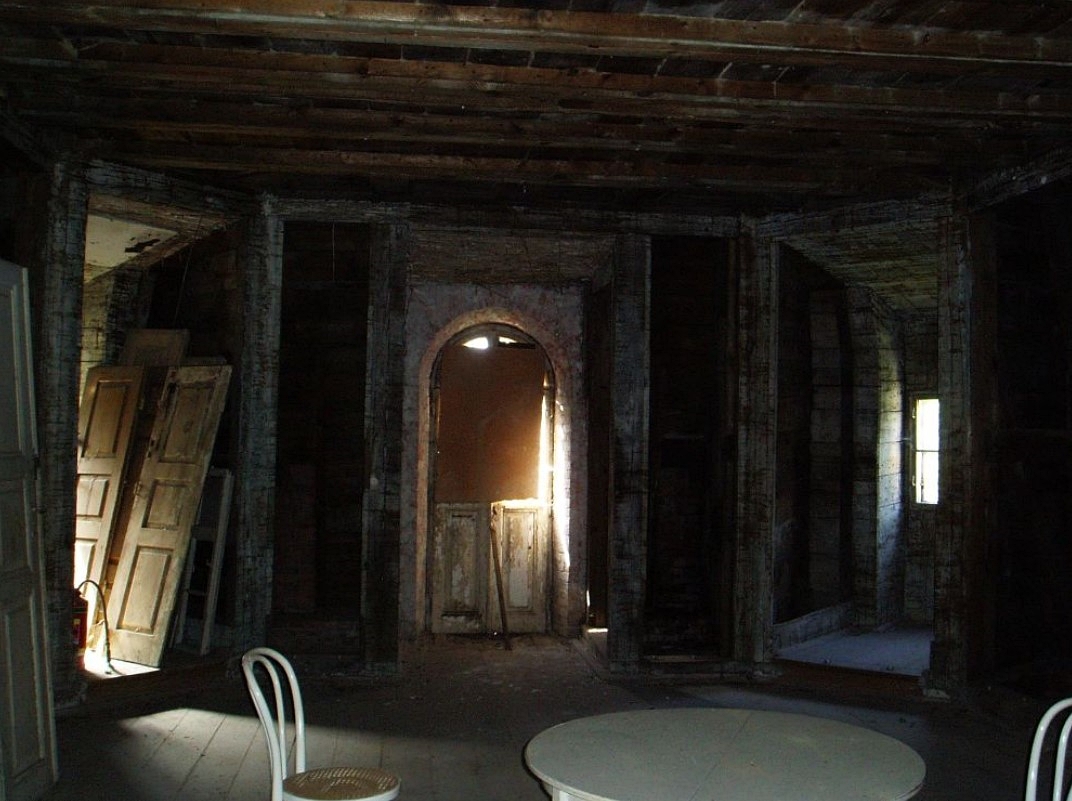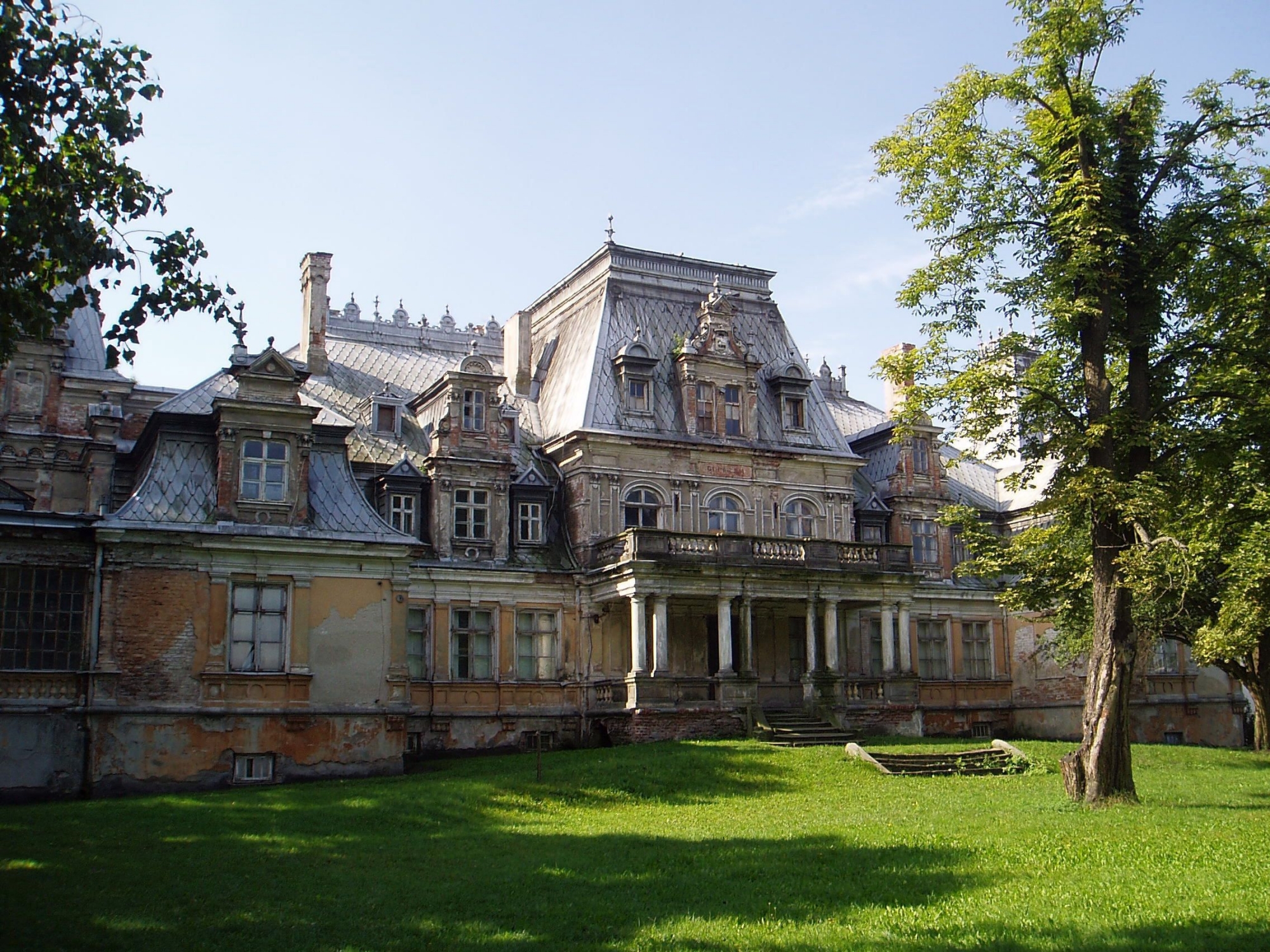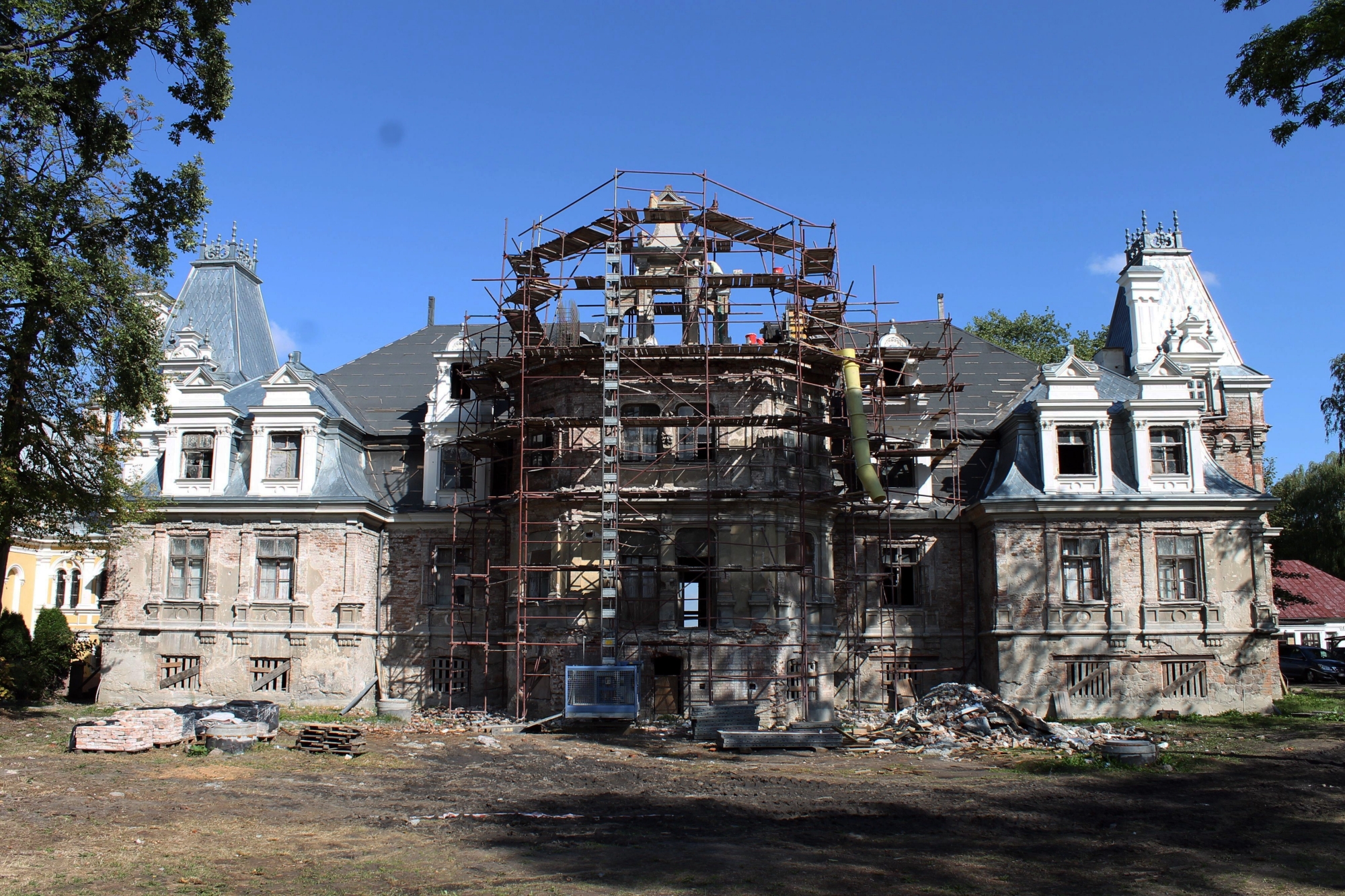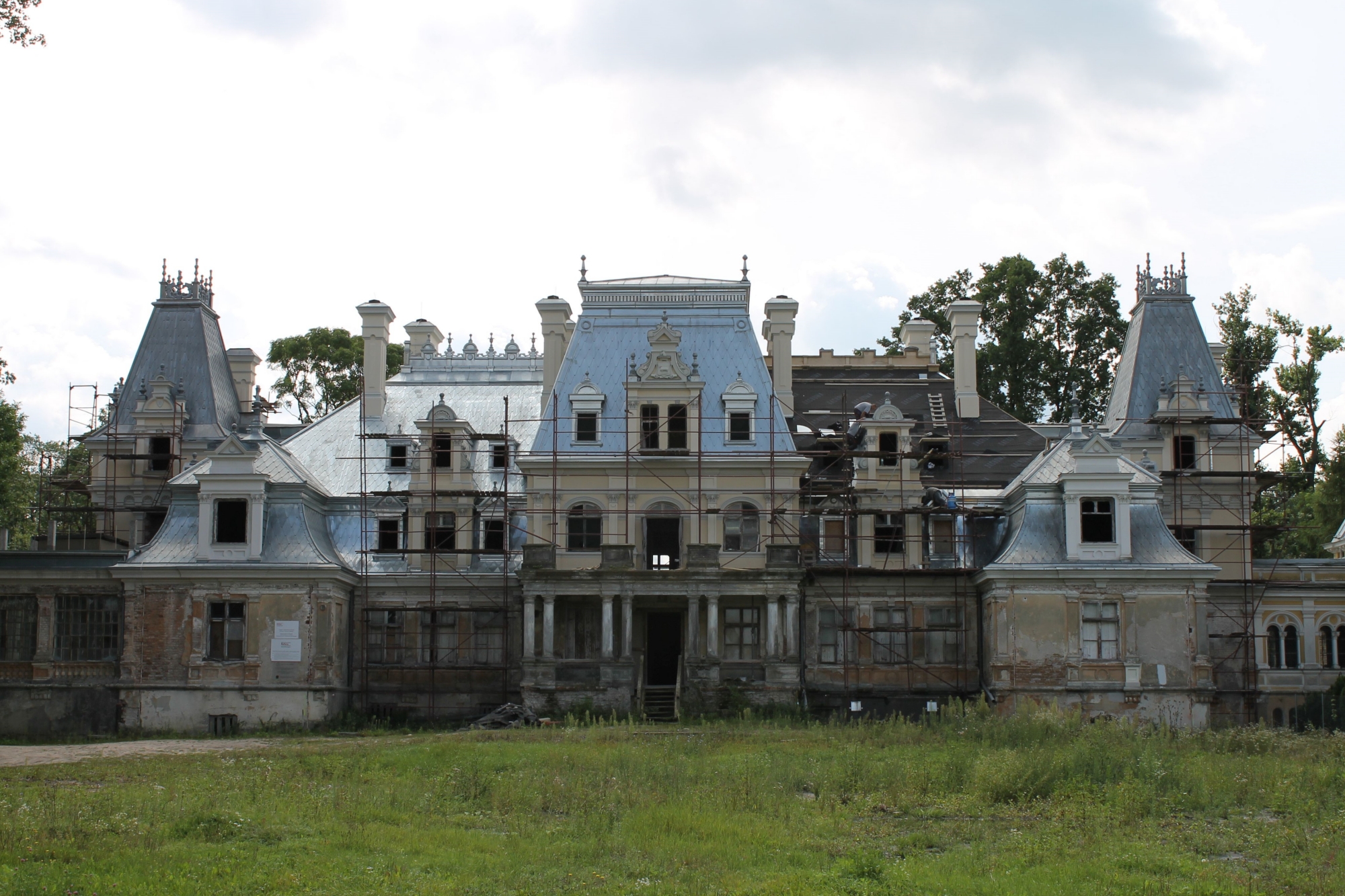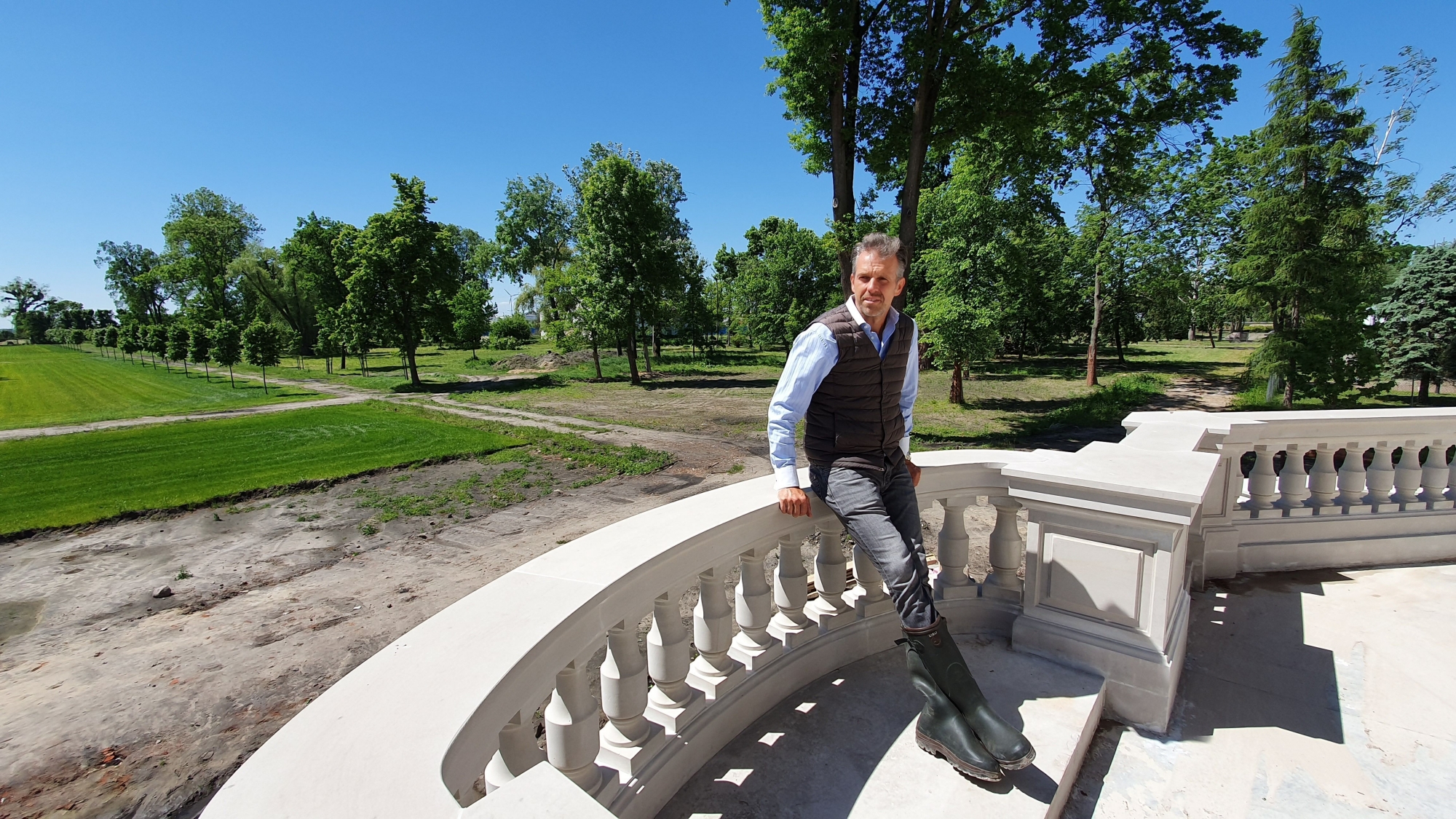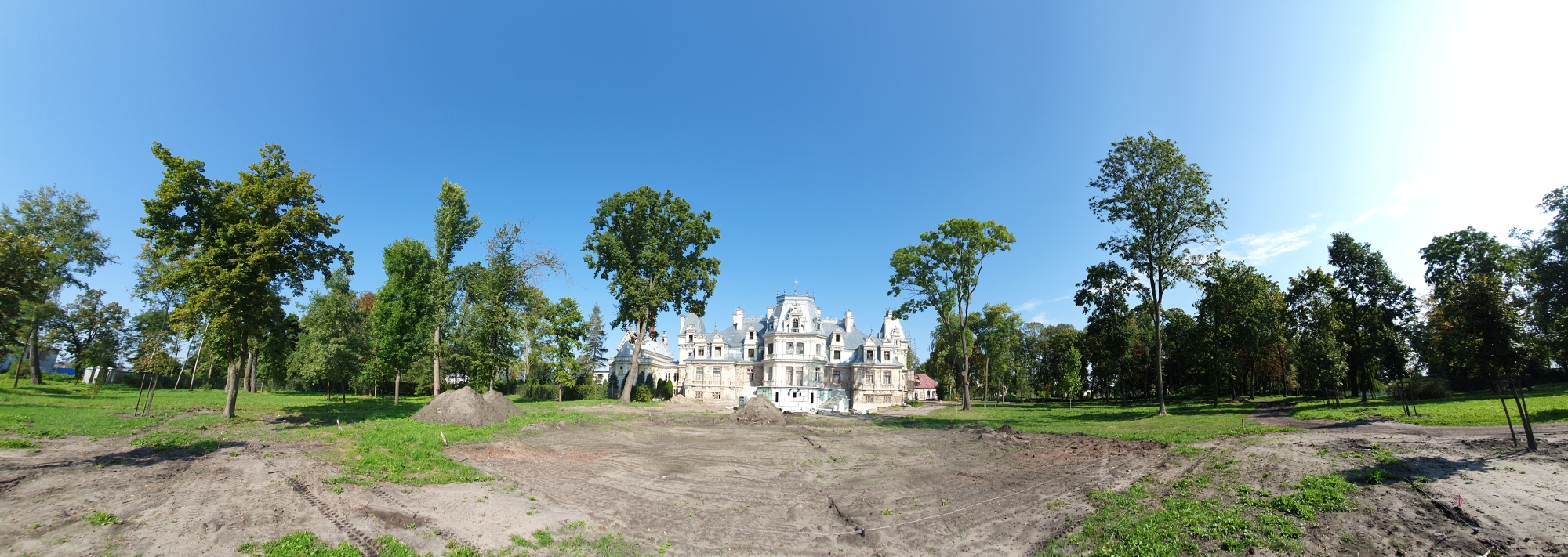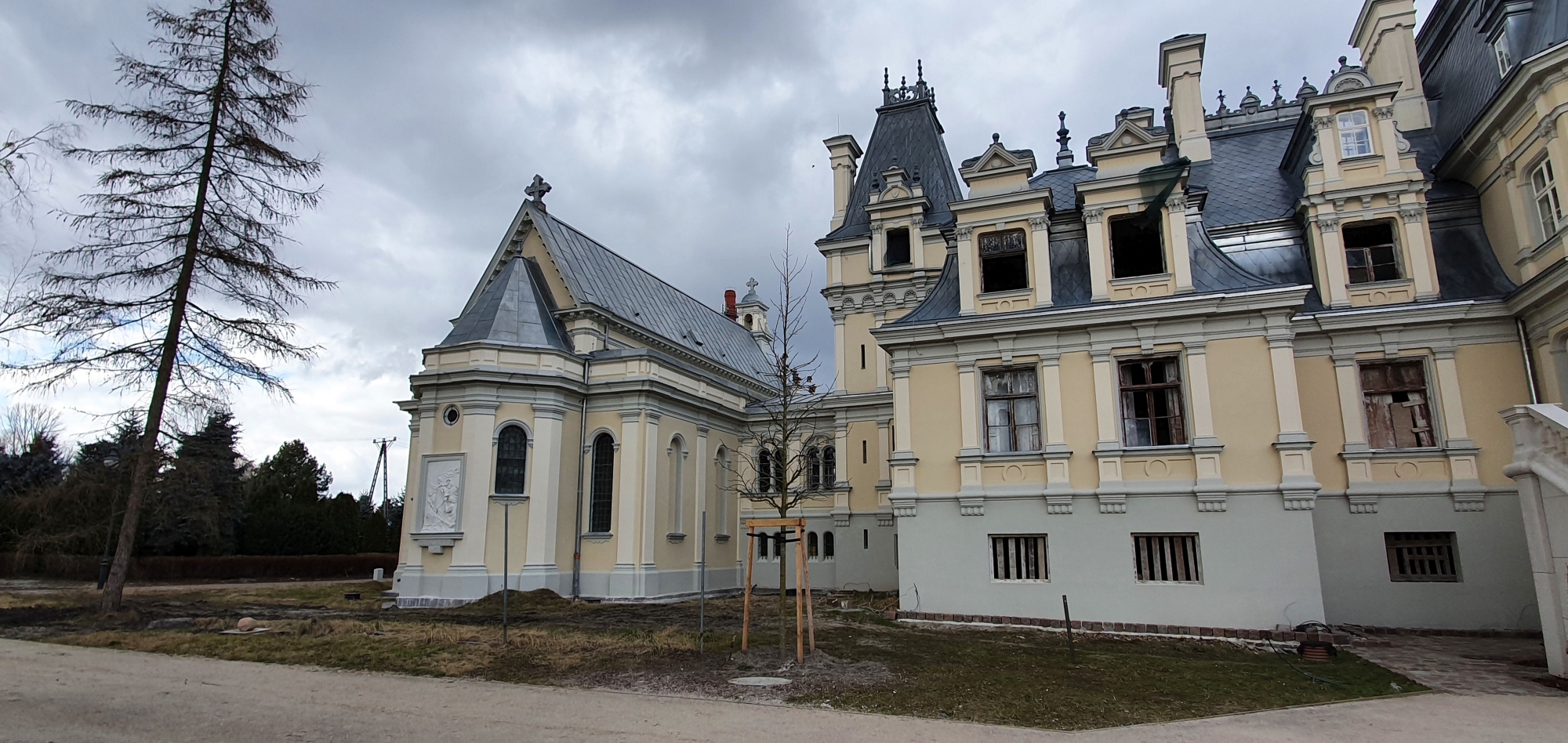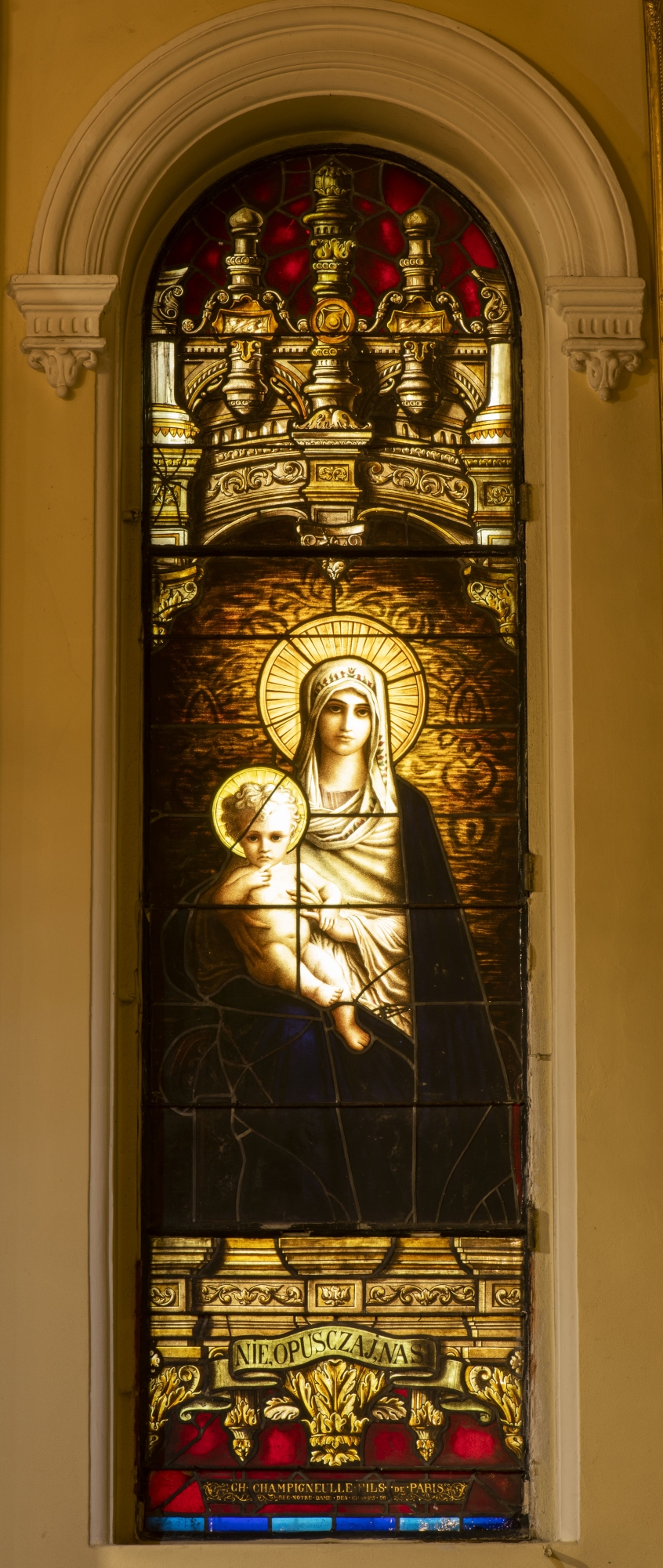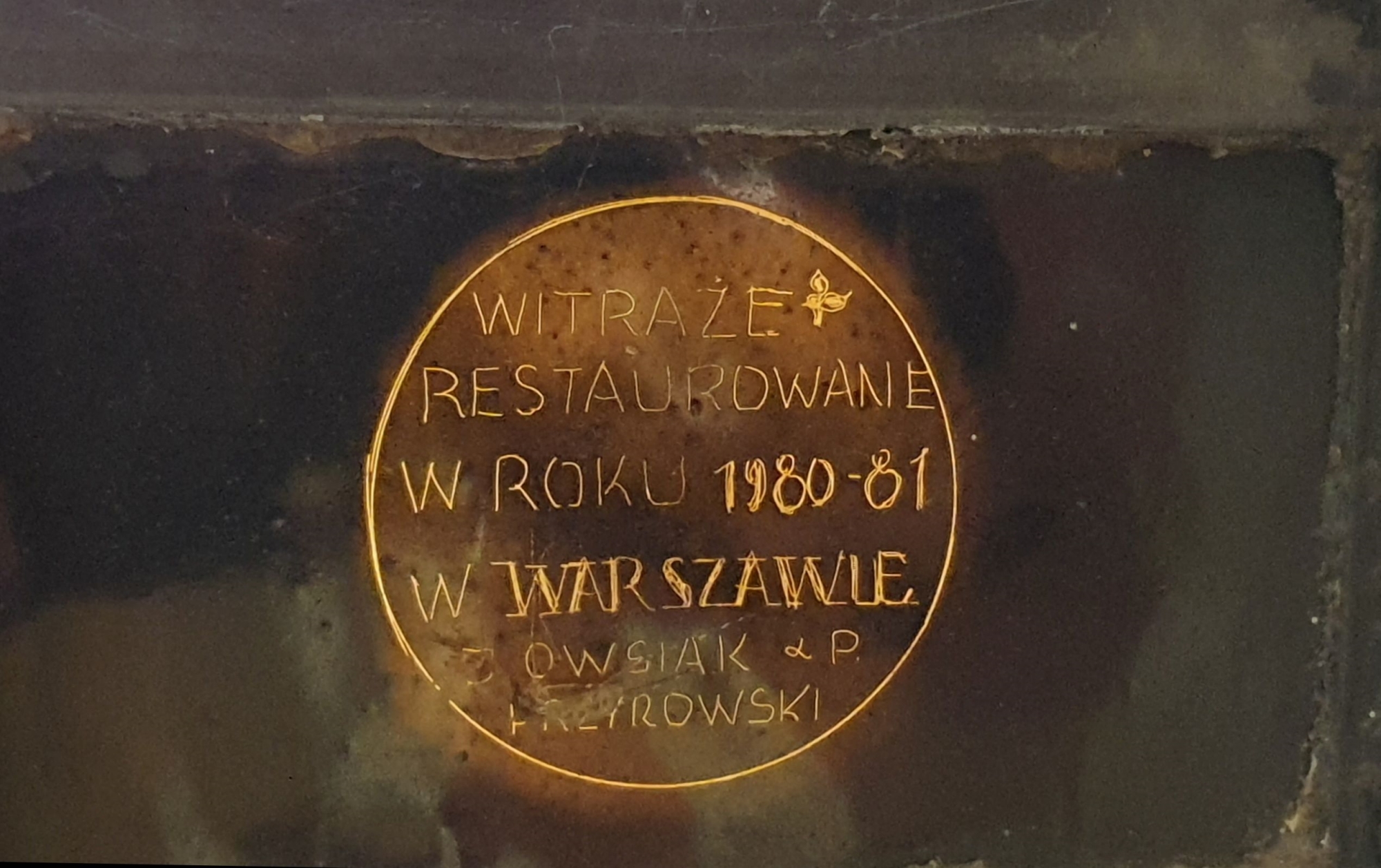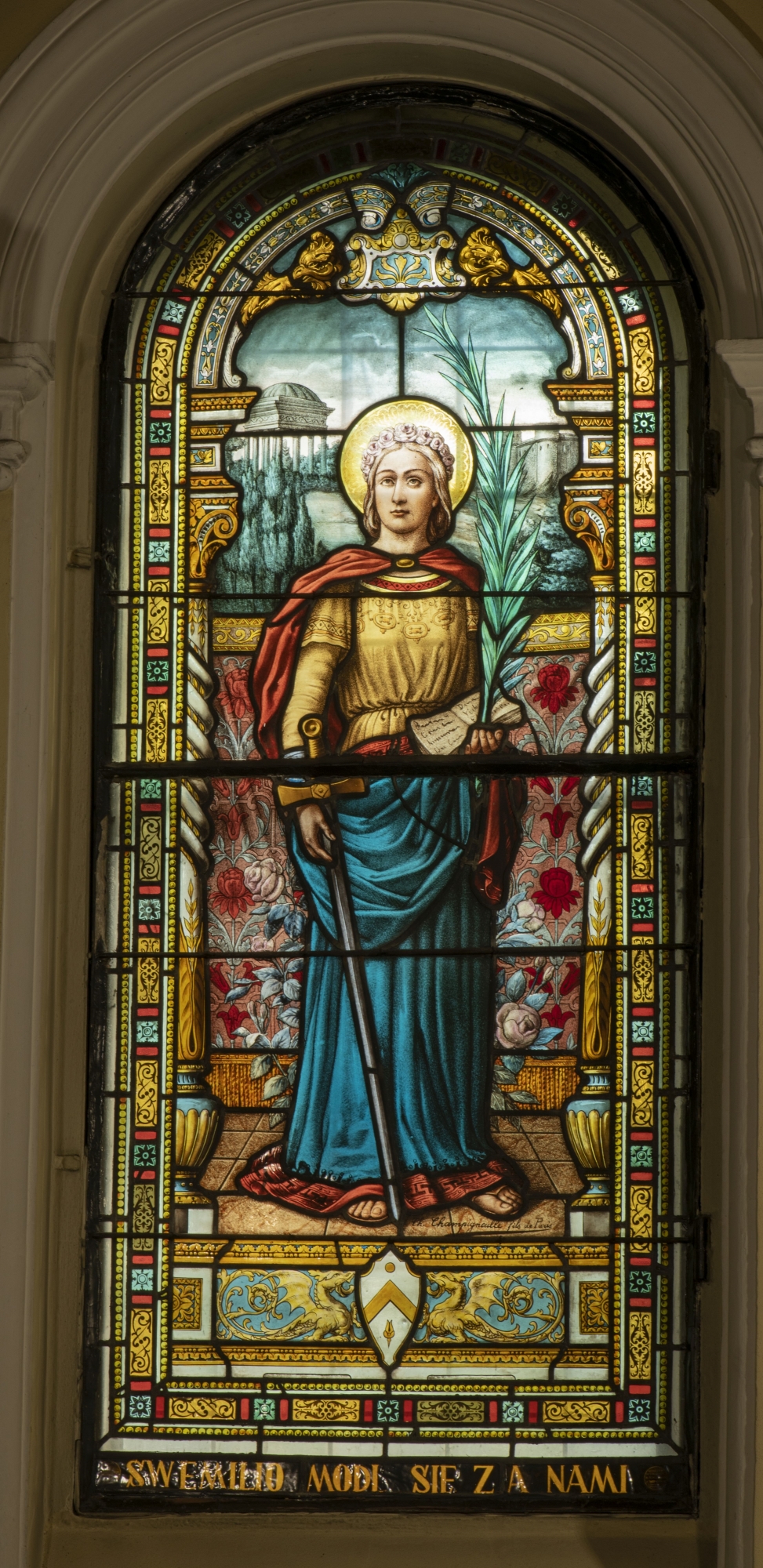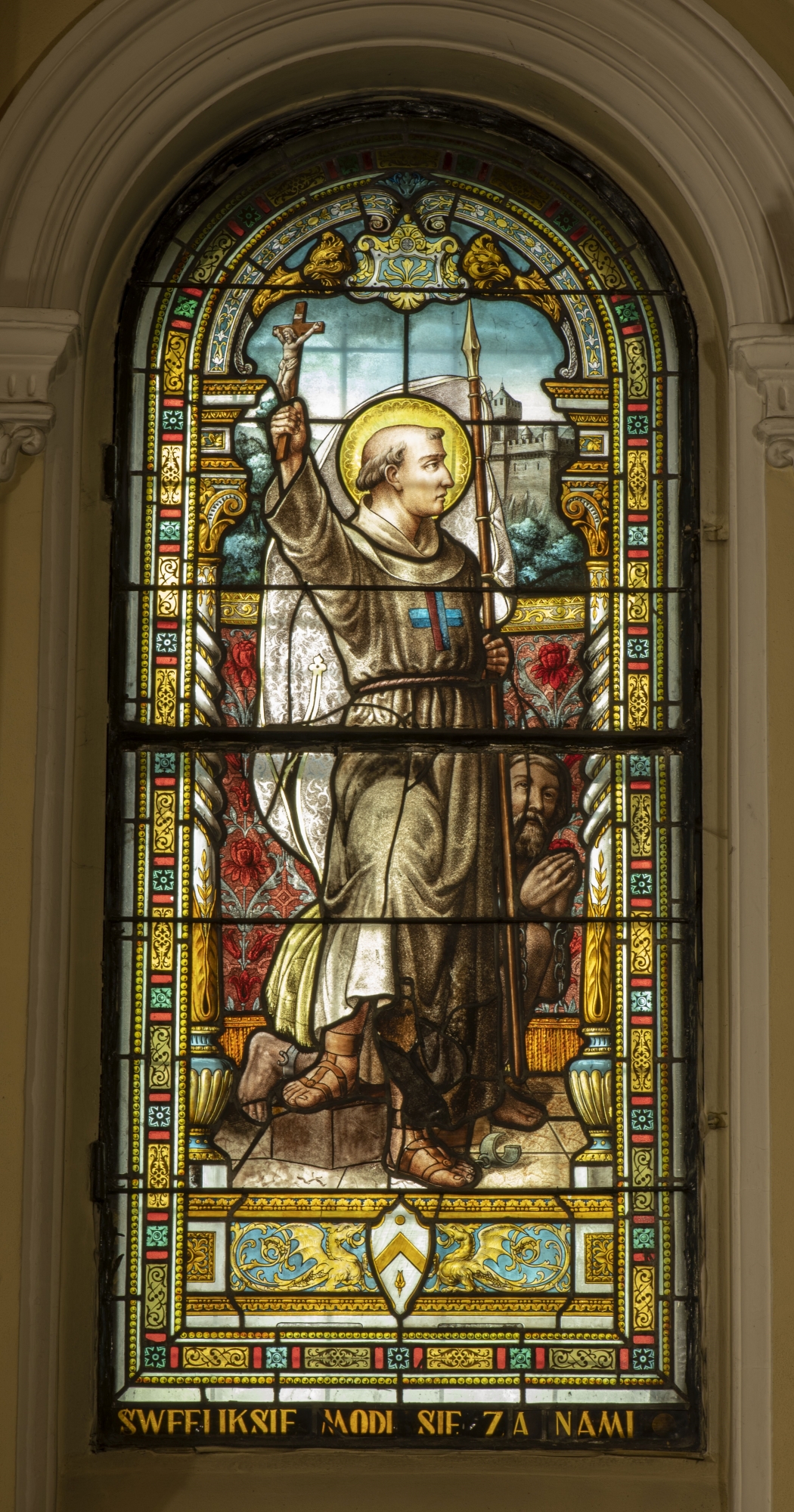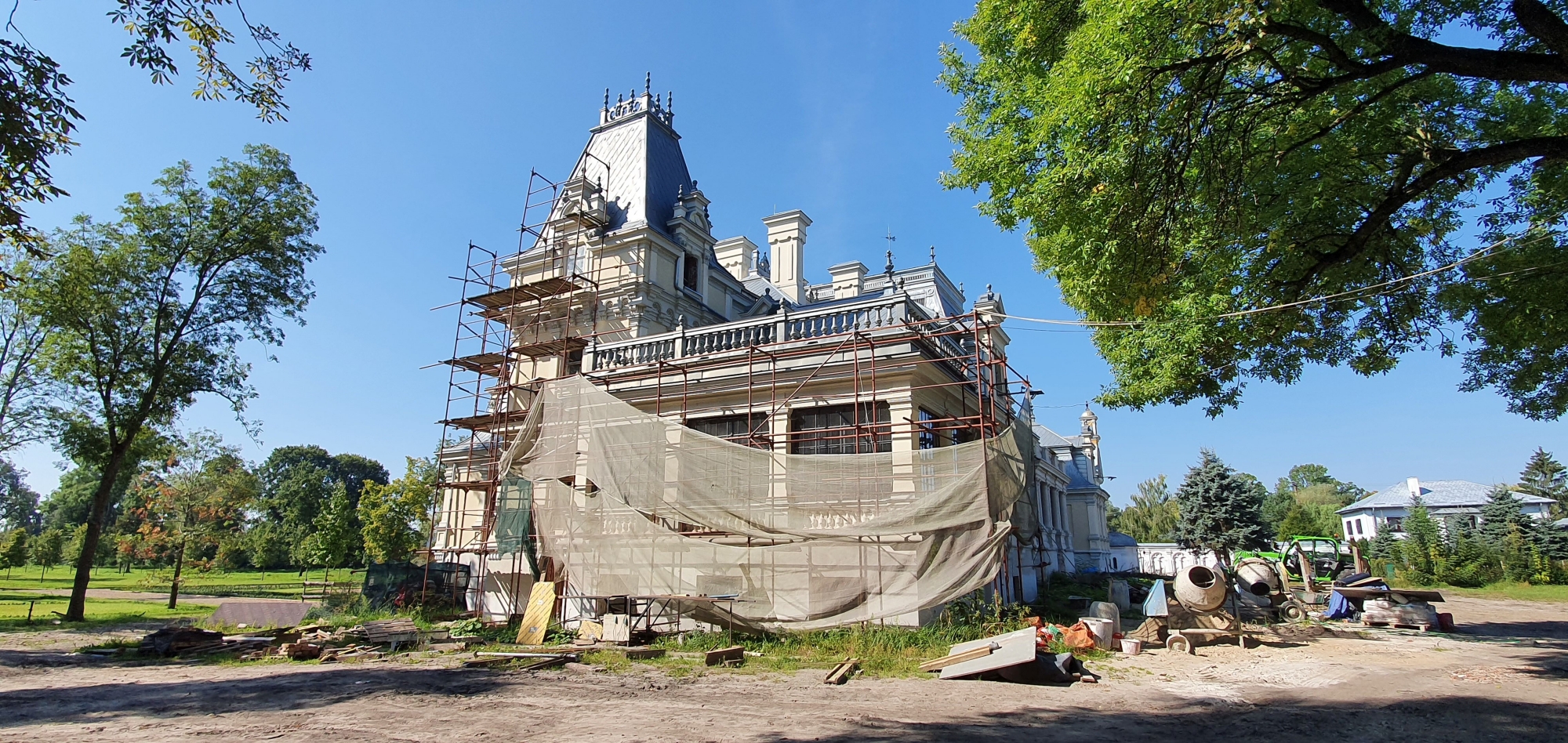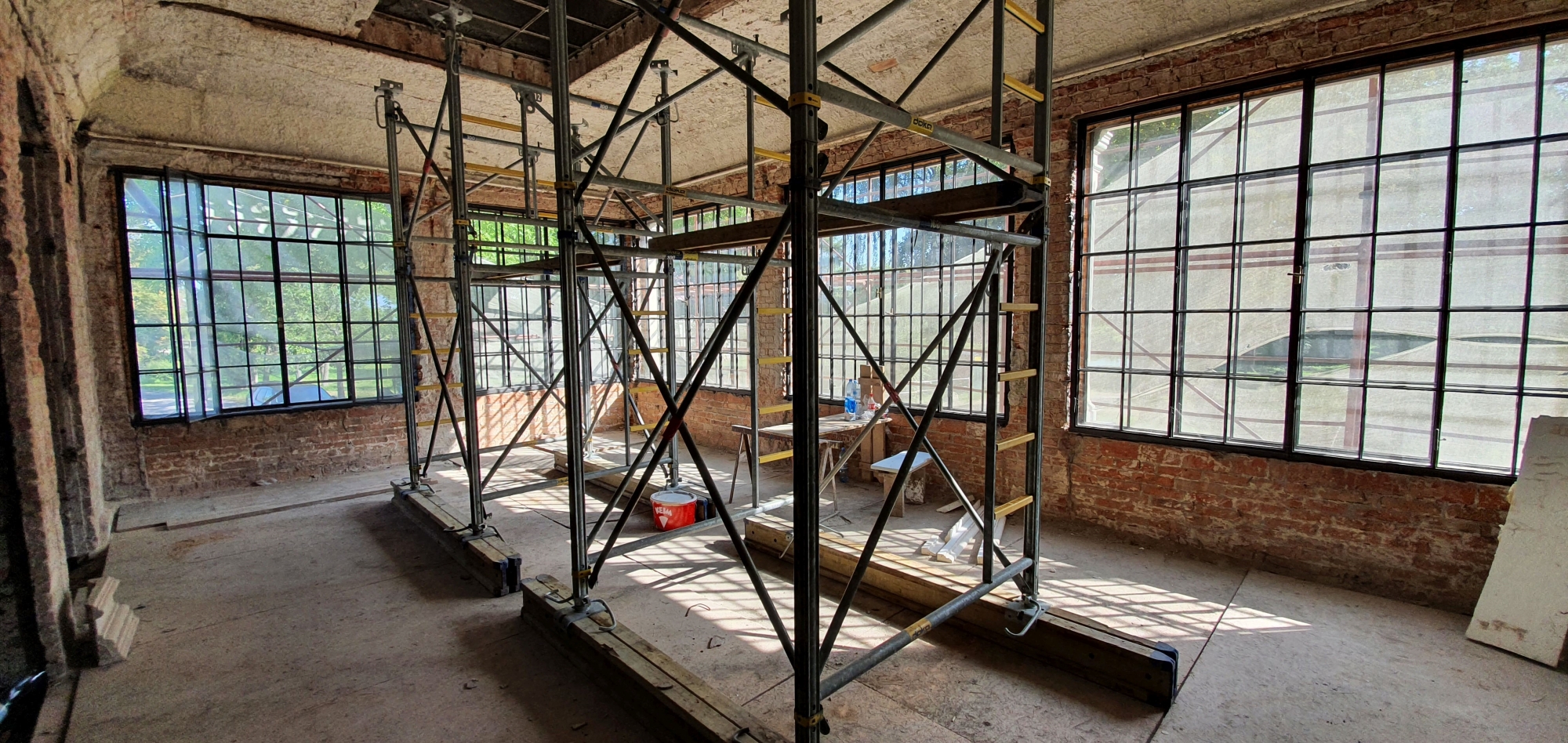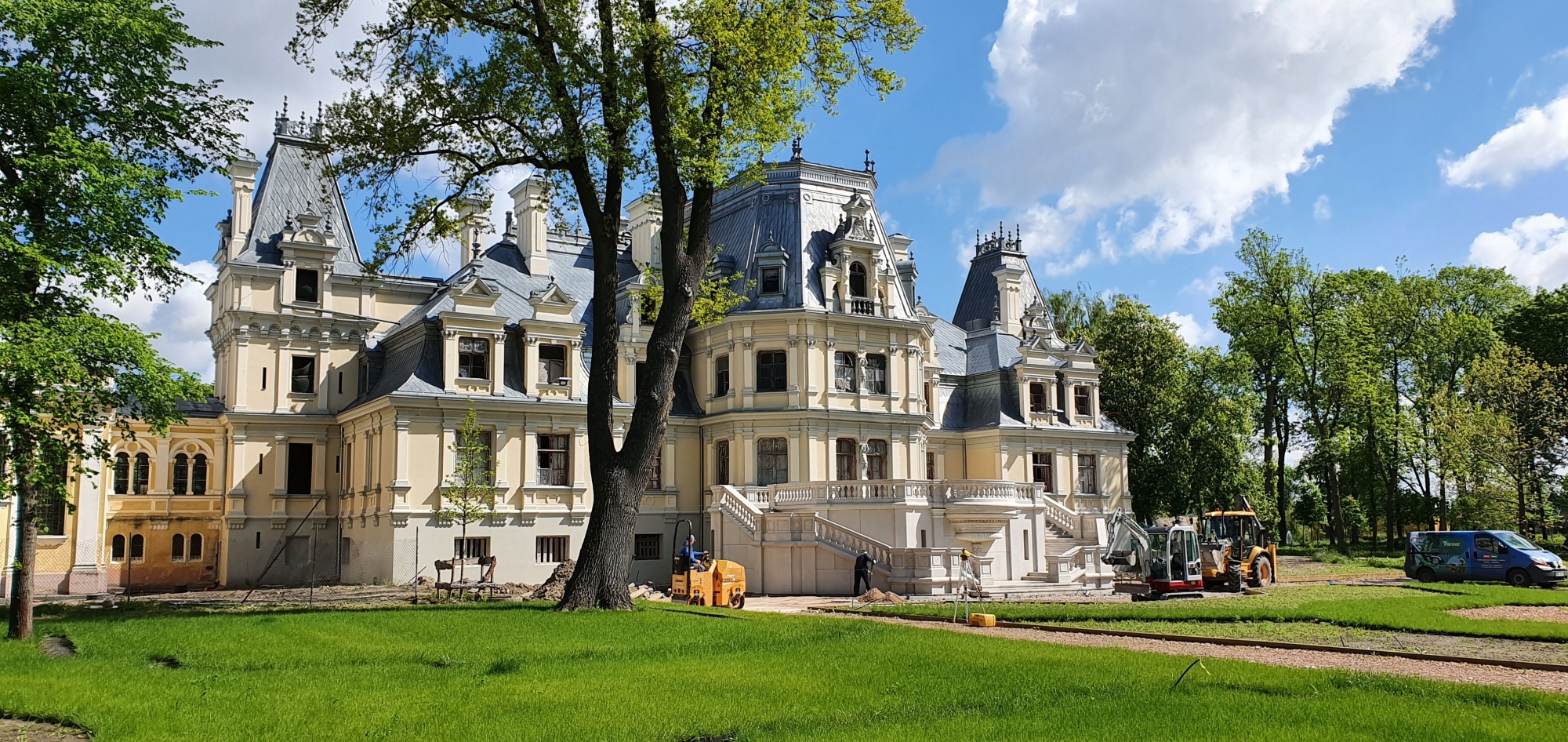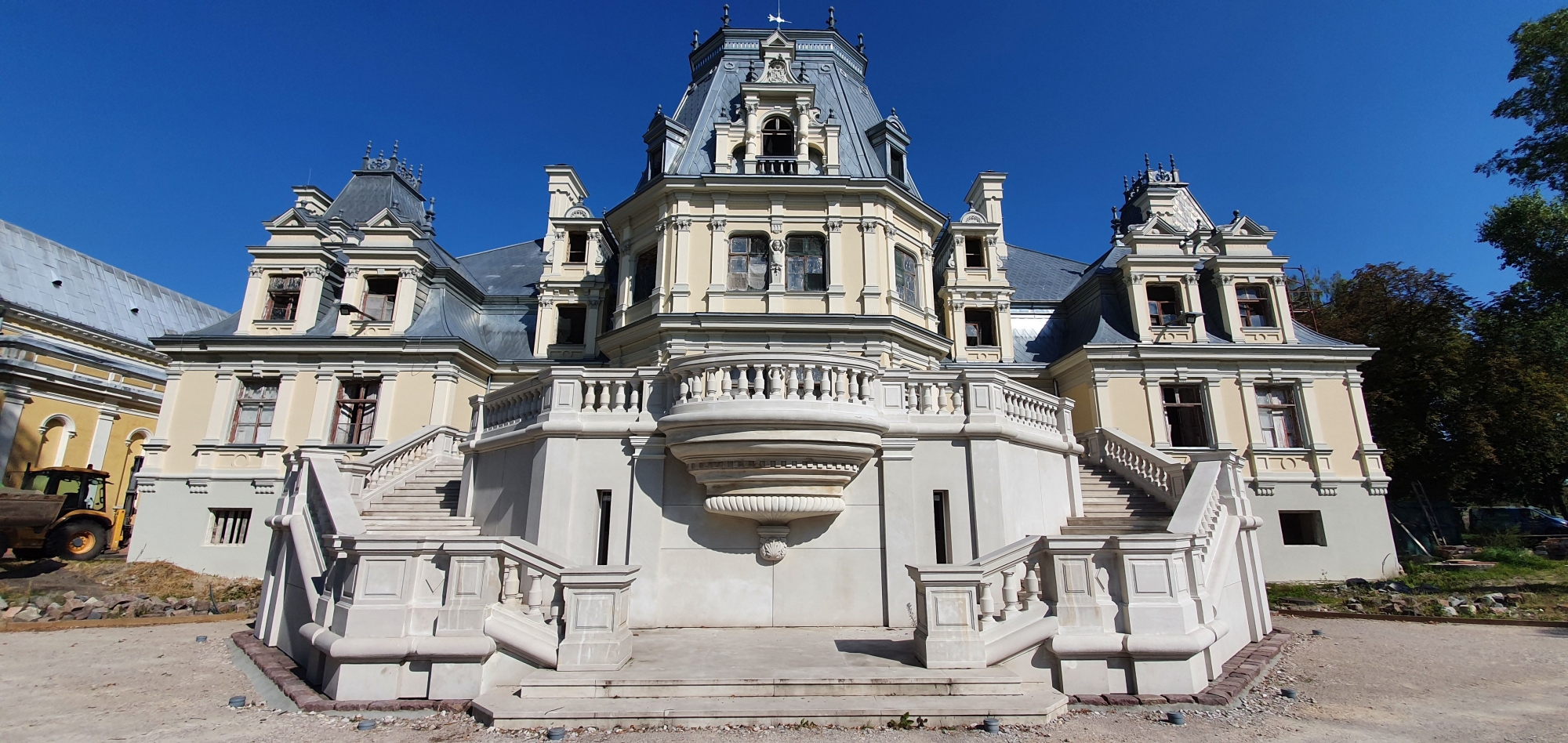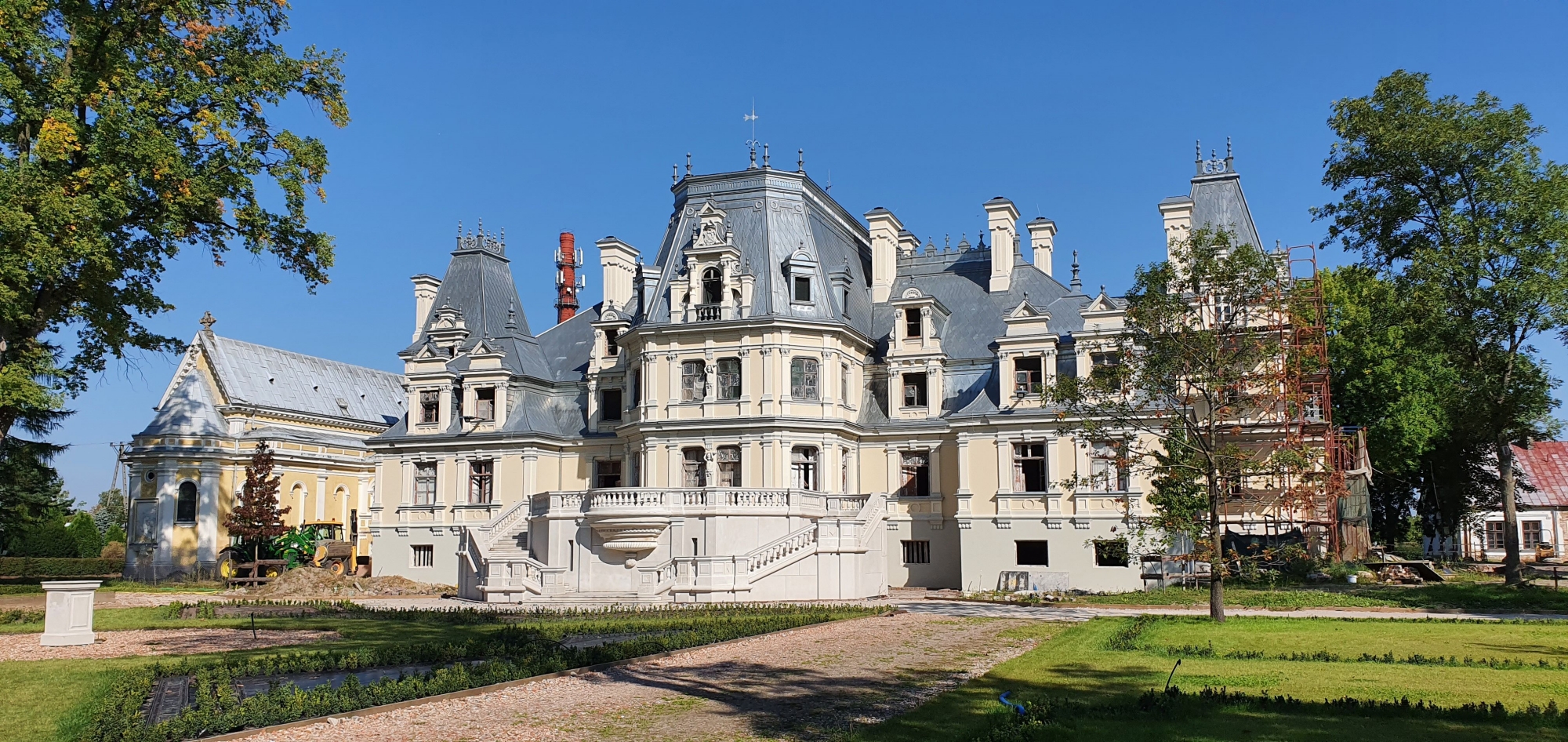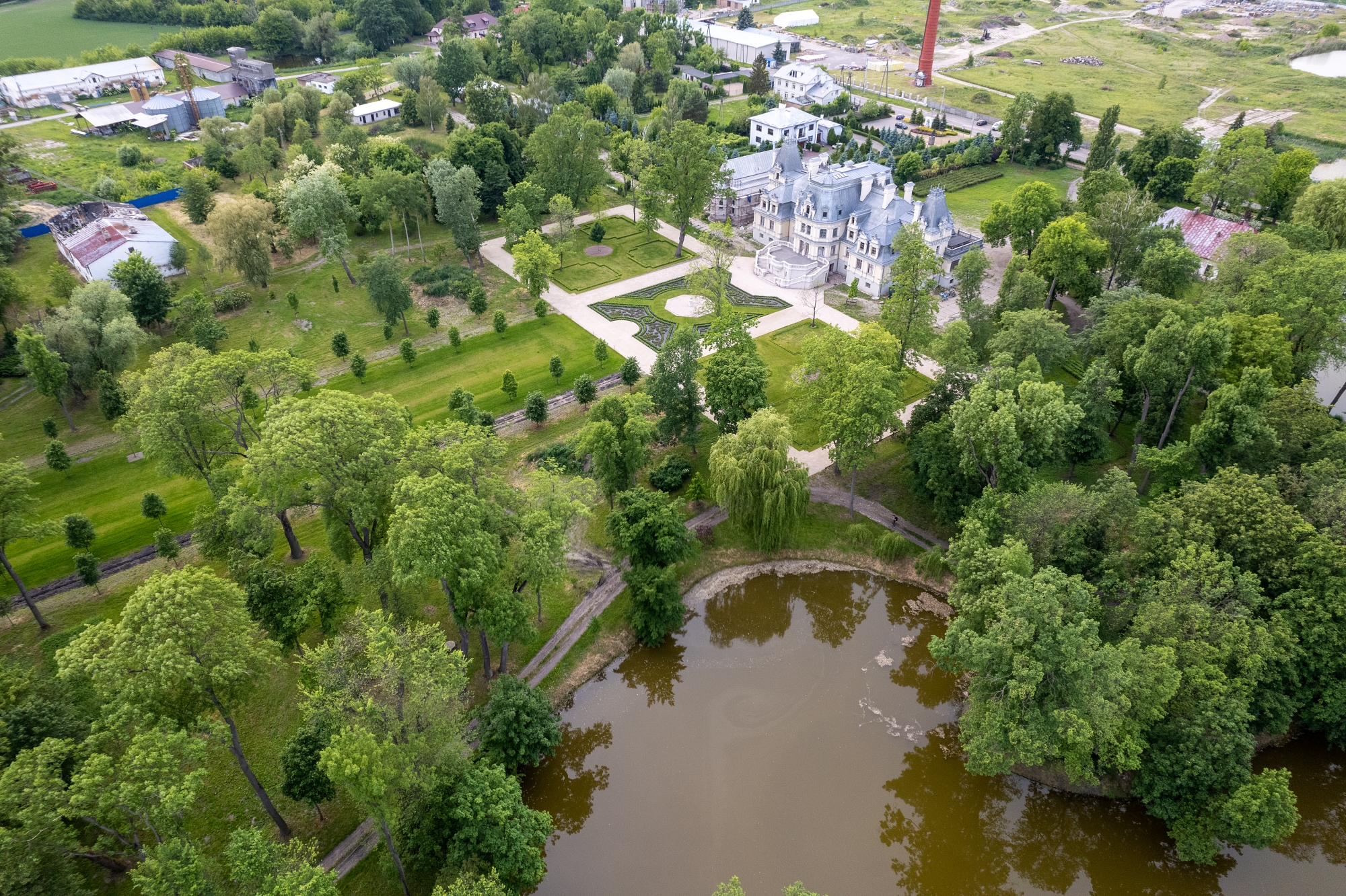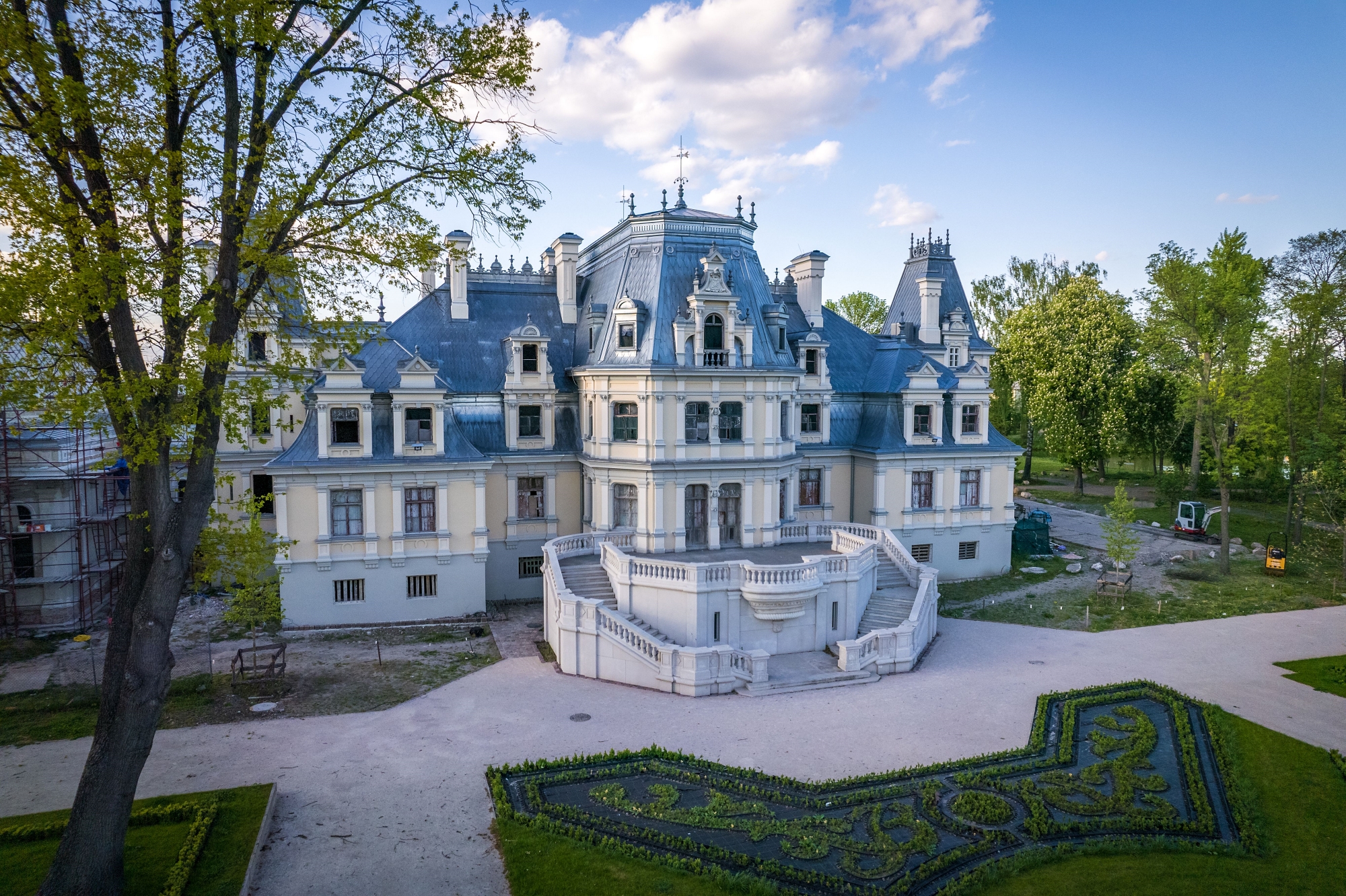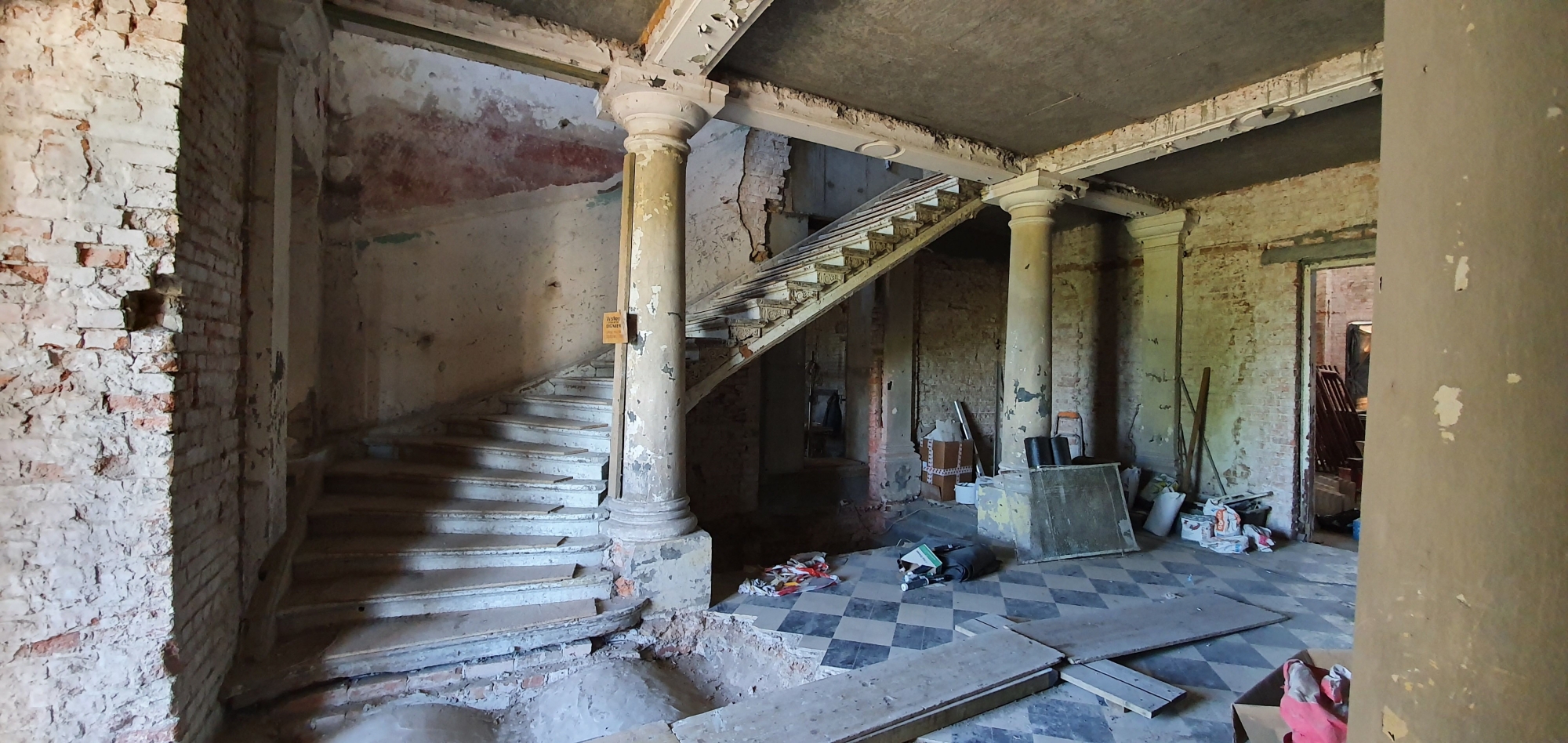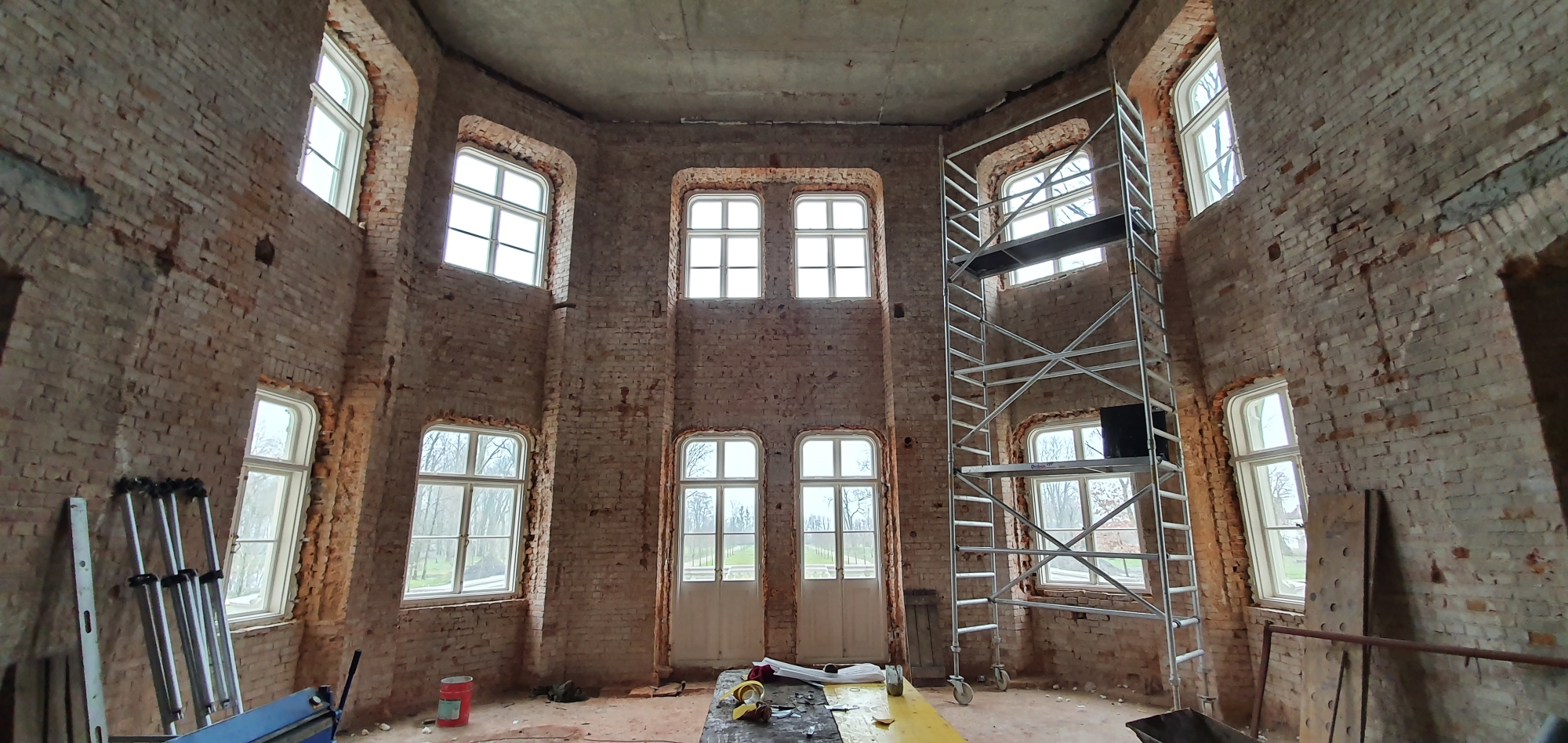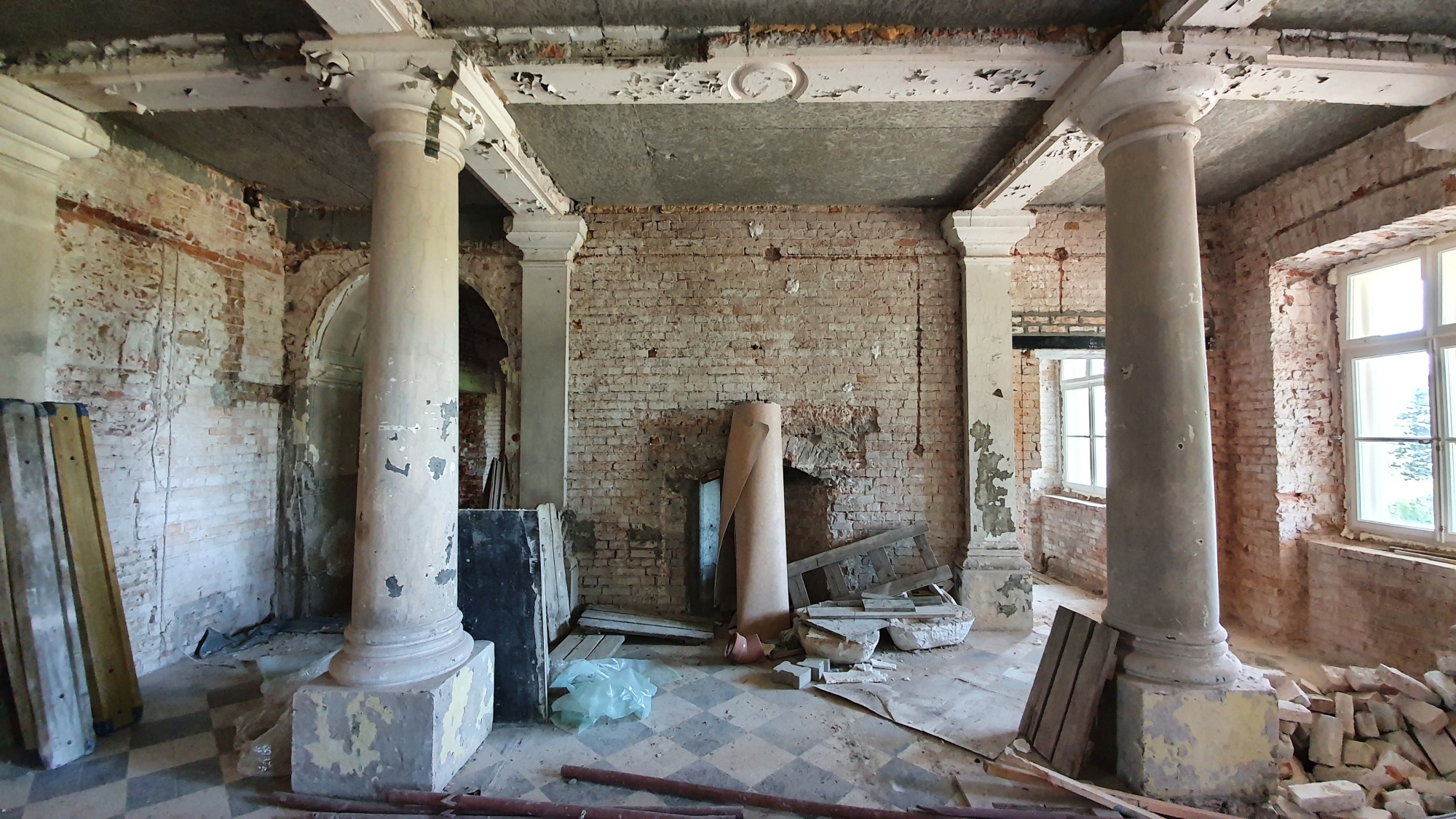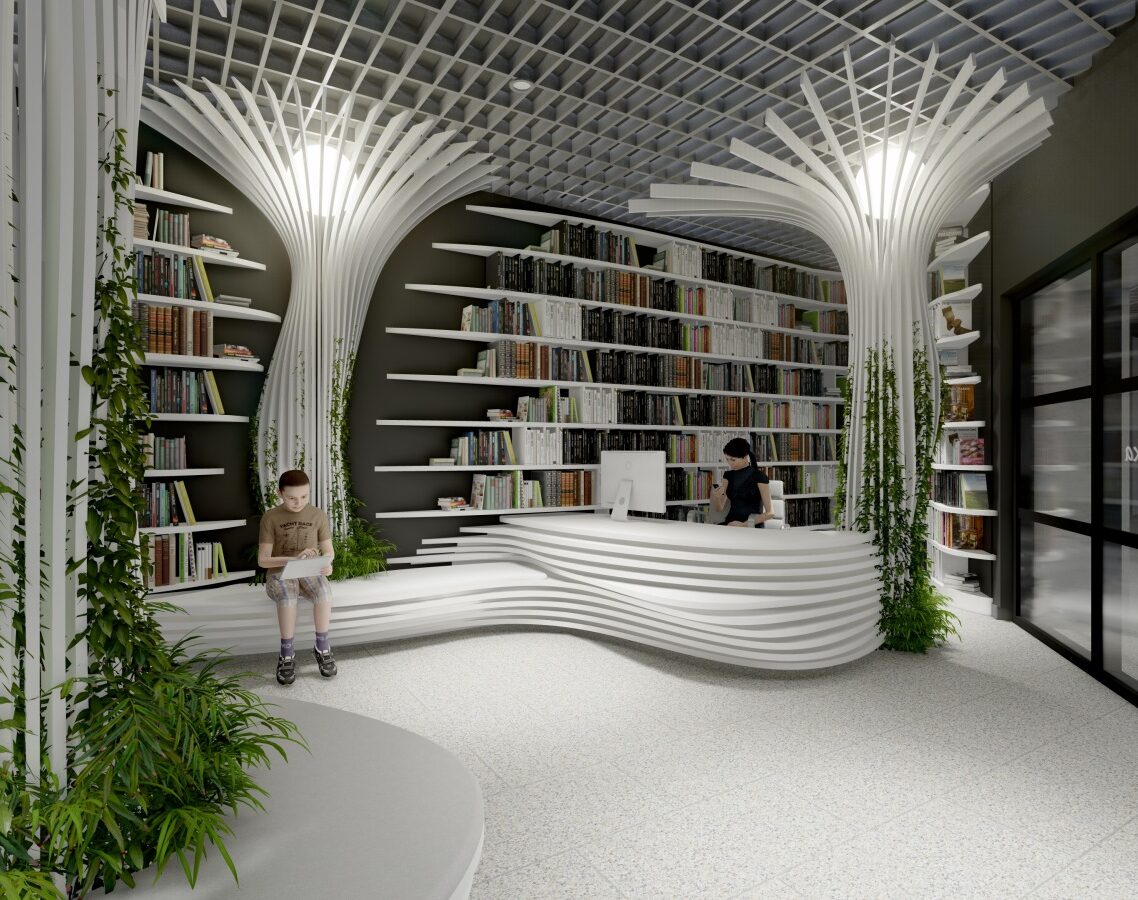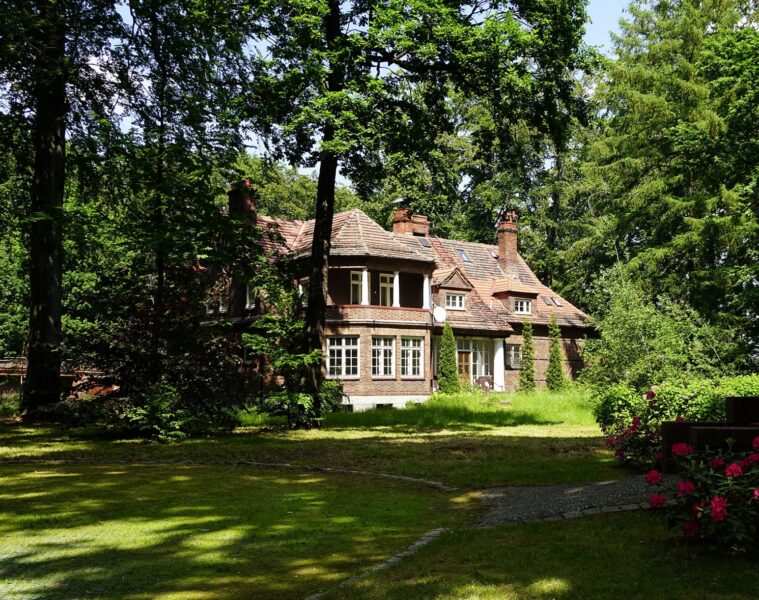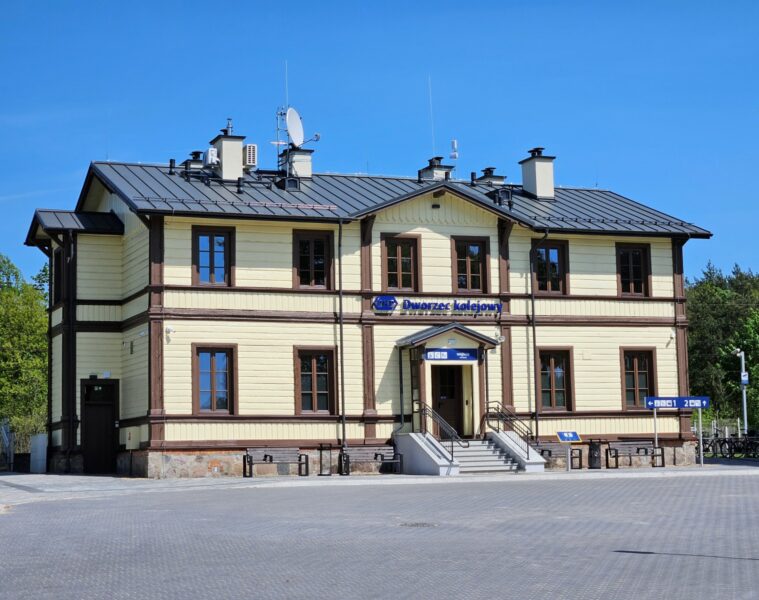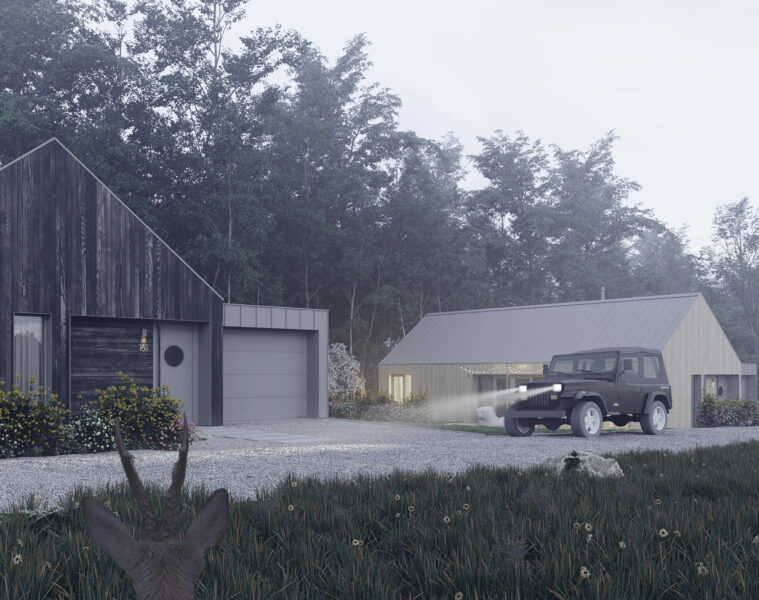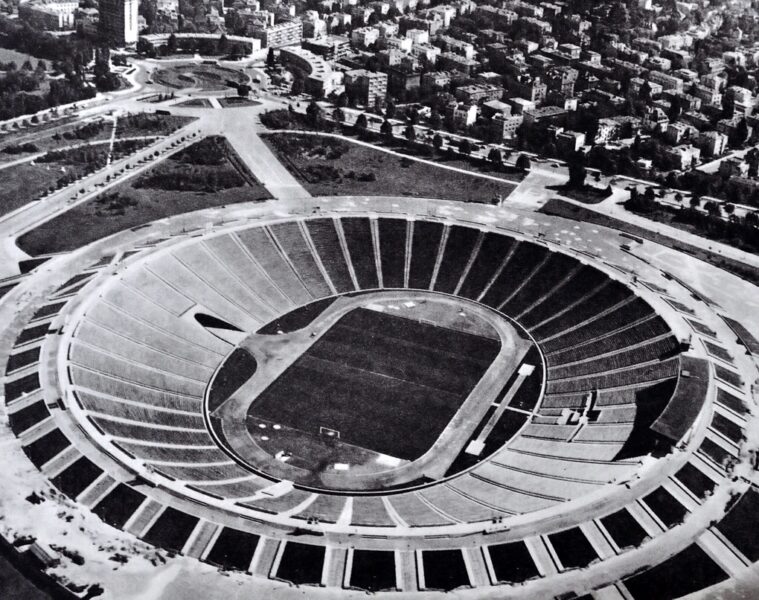Do you have to go to the Loire to admire magnificent estates? Not necessarily! In Guzów near Żyrardów, there is the Sobański Palace – a unique example of the French Neo-Renaissance in Poland. The majestic building is rising like a phoenix from the ashes thanks to the efforts of the Count Feliks Sobański Foundation. Ultimately, the palace is to become a luxury hotel and conference centre
The history of Guzów is intertwined with the history of three great families: Oginskis, Łubieńskis and Sobanski, who built and transformed the Guzów residence over the centuries. A document dated 1602 mentions a modest wooden manor house, situated near three ponds. Eighteenth-century documents give more elaborate descriptions. In 1789, a brick, two-storey palace stood in Guzów, consisting of a dozen or so rooms, dressing rooms and halls. It was not only the reconstruction of the manor house that was the work of Troki voivode Andrzej Ks. Oginski. The estate was also modernised.
Guzów from the side of the park in 2022. Photo: Adrian Ardziejewski
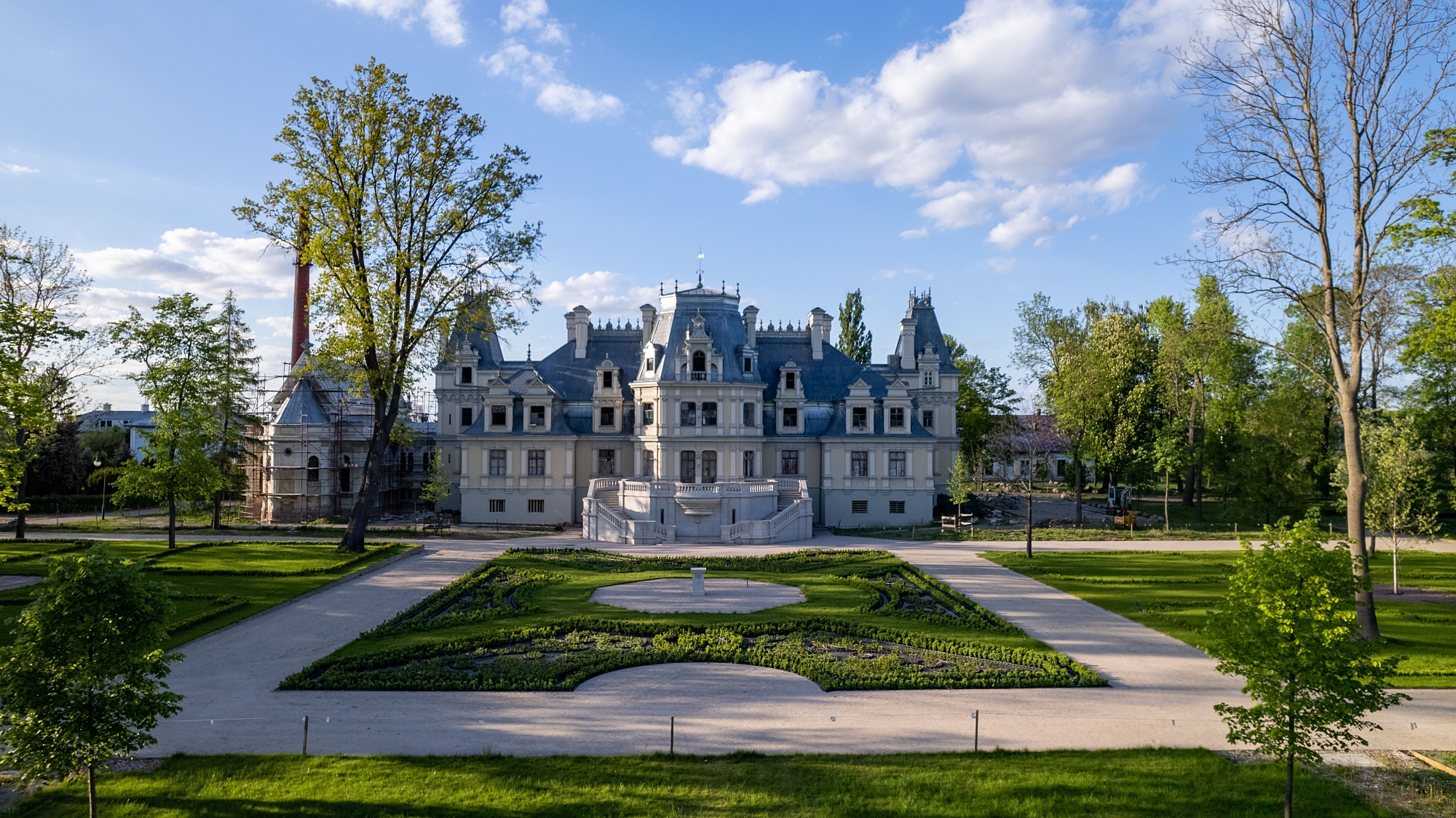
After the governor’s death, the estate became the property of his widow, Paula née Szembek, and her son Michał Kleofas ks. Ogiński – composer and author of the famous polonaises. In 1795 the Prussian authorities took the Oginskis’ estate away from them. Feliks count Łubieński – the eldest son of Paula née Szembek, using his connections at the Prussian court – regained the property taken from his mother. From that moment until 1856 the Łubieński clan ruled the estate of guzów. Their high economic position was shaken in 1842. At that time, Count Henryk Łubieński was falsely accused of mixing state and private capital. The case ended with a trial and Łubieński being sentenced to several years’ exile deep into Russia. Guzów was seized on account of Łubieński’s debts. Finally, the estate was bought at auction in 1856. He was the grandson of Minister Łubieński and son of Ludwik and Róża née Łubieńskis, the protector of Polish exiles, known as the “Rose of Siberia”. Feliks Sobański owned about 30,000 hectares of black earth, numerous sugar factories and industrial plants in Podolia. The administrative centre of the estate was Obodka with a large palace
The Sobański Palace before 1939 and in 2022. Photo: Collection of Henryk Sobański and Adrian Ardziejewski
The years spent on the Loire left a mark on Sobanski’s artistic tastes. So when around 1880 he decided to rebuild the Chateau of guzów, he asked the architect M. Mayer to prepare a design in the so-called French costume. Within a dozen or so years, the Łubieńskis’ manor house was transformed into a “Chateau de la Loire”. The façades were extensively rebuilt in the historicist style of the French Neo-Renaissance and towers were added. The entire building was covered by a two-storey mansard roof, one of which was used for living quarters. In 1892, the foundation stone of the palace chapel of St Felix de Valois (patron saint of the Łubieński and Sobański families) was consecrated. The temple was built within two years at the western façade, on the site of the former manorial chapel, and connected to the palace. For its decoration, magnificent stained-glass windows were brought from the Paris workshop of Ch. Champigneulle, which were restored in 1980-81 by Jerzy Owsiak (WOŚP) and Paweł Przyrowski. The outer façade of the apse was decorated with a bas-relief by Maria Gerson, “Christ calming the storm”. The palace chapel was consecrated in 1894 by the Warsaw suffragan bishop Kazimierz Ruszkiewicz. The frontispiece of the church bears the opening verses of the prayer ‘Our Father’. Other fragments (not all) were planned by Feliks Sobański to be placed on other church and secular buildings he had built. This project found a happy ending after nearly one hundred and thirty years, when the originator’s great-great-grandson, Michal Sobanski, erected a new parish church in Guzow (consecrated on 8 October 2023) and placed the last missing words inside: “And forgive us our trespasses as we forgive our trespassers”
Sobanski Palace in Guzow in 2015 and 2023. Photo author: Rafał T, License: CC-BY-NC-SA 3.0 and Marcin Brzeziński
The interiors of the rebuilt palace had to be decorated accordingly. Every January, Feliks Sobański and his family set off on a tour of Europe. The route was unchanging: Obodka, Vienna, Karlsbad, Naples, Rome, Paris, Warsaw and Podolia. From these trips, the Sobanskis brought back a wealth of paintings, sculptures and furniture, which adorned the salons of their palaces in Guzow, in Warsaw’s Aleje Ujazdowskie and in Obodka. This is how Louis XV-style furniture and two marble fireplaces from the Tuileries Palace, burnt down during the Paris Commune in 1871, found their way to the Guzow palace. The Sobanskis commissioned a design from Walerian Kronenberg and Franciszek Szanior. The architects skilfully combined a French park with a landscape park. The ponds were transformed into irregular, connected ponds. An artificial island was created on one of them and a grotto was built.
Sobański Palace in Guzów in 2007 and 2021. Author: Marcin Brzeziński
Guzów survived intact until the First World War. In 1915, a field hospital was organised in the building, which resulted in the devastation of the interiors, which were given a more modest decoration after the war. The Second World War brought further destruction. In September 1939, the German General Staff with Adolf Hitler came to Guzów. The Sobański family was expelled from their house for this time. The German soldiers took the opportunity to take various ‘souvenirs’ with them, including a lot of silverware. The officers attending the banquet did not want to be worse. Around the dining room table stood old chairs, the backs of which were upholstered in leather with the Sobanski (Junosza) coat of arms embossed on them. Each of the officers, with a razor blade or a razor, cut out this coat of arms, leaving an empty window… Similar stories happened later. The estate was looted. After the nationalisation of Guzów and the sacking of the Sobański family, the palace was taken over by a sugar factory, which placed its offices there. As a result of years of neglect, the building, like the entire estate, began to fall into disrepair. The ruined but still charming house of guzów attracted the interest of post-war film-makers. It was the perfect backdrop for stories about a world that was passing into oblivion.
Sobanski Palace in 2017 and 2021. Author: Marcin Brzeziński
Wiesław Myśliwski’s drama Klucznik, set in the spring of 1945, was published in 1978. In the following years, the Sobanski Palace “starred” in “Extradition” and “Lovers of Marona”. A decade after the filming of “Klucznik”, political changes took place, which allowed the former owners to start making efforts to regain their family home. This was undertaken on behalf of the Sobański family by Natalia hr. Sobańska, née Lubomirska – daughter-in-law of the last pre-war owner of Guzów, Feliks hr. Sobański. The efforts lasted for several years. In the end the palace was bought by her late son Marek hr. Sobański and grandson Michał hr. Sobański, who together with his sister Izabela Sobańska-Ponińska is the current owner of the residence
The cordegarden and entrance gate in 2021 and 2023. Author: Marcin Brzeziński
In 1995 the enfranchised Municipality of Wiskitki decided, despite my family’s ongoing proceedings, to put the palace and park in Guzów up for sale. At that time, having no choice, I declared my will to purchase it. I believed that the fact of putting it up for sale was the height of illegality, but that it was necessary to recover or even buy back our family home by all possible means. At the time, the law provided for priority in acquisition for the former owners. However, the majority of heirs felt that buying a palace and park that were in complete disrepair was insane and ridiculous, and fencing was unethical. In this situation, all the heirs living in Poland gave up the opportunity to take advantage of the priority of acquisition. The only ones who decided to do so were me together with my late Father Marek Sobanski. And so, on 23 December 1996, in a notary’s office in Zyrardow, history came full circle. We signed a deed with the Municipality of Wiskitki to buy our family home, which had been ruined and plundered in 1944 ,” recalled Michał Sobański years later
Park Avenue in 2020 and 2023. Author: Marcin Brzeziński
The Chateau de guz was not entered in the register of monuments until 1962, and the park in 1981. The chapel of St. Felix de Valois was already in use by the Church a few years after the war. At the end of the 1970s, the authorities officially handed it over, together with the adjoining grounds, to the Church to house the new parish (erected 1984). This destroyed the coherence of the whole palace setting and the original intention of the founder. The three hectares of parkland were sold by the Wiskitki municipal authorities to the Church in 1994, at the time when the Sobanski family sought to return the whole. The parish priest lived in the palace itself until 2002. In addition, the renovations he carried out ineptly disfigured the chapel building and its immediate surroundings. The Sobański family regained Guzów in 1996, but their return evoked mixed feelings:
For as long as I can remember we have been coming to Guzów with the knowledge that it does not belong to us. The feeling right after receiving the keys was contradictory. On the one hand, there was great emotion and disbelief that we were back the owners of the house, but on the other hand, there was the feeling that I was in a place that everyone considered to belong to the public. This has been the case for many years, and sometimes even today I feel a certain disbelief that the palace and the park are mine and my sister Izabela Poniñska’s property. It seems to me that over the years this perception will remain and probably only the next generation will have a sense of full ownership. Generally, the residents of Guzow were sympathetic and felt that our property should be returned to us. They even sent a letter to the mayor saying that the palace should be returned to us and that we should not buy it back, which indeed was and is a kind of surrealism. It also seems that a large proportion of the residents saw our return as a prospect of gaining employment in the revalorisation and later when the house was fully functional. Of course, there was also a small number of people who were reluctant to do so, often because of the propaganda and opinions spread throughout the entire period of the People’s Republic of Poland, and also often out of pure human envy, ” recalls Michał Sobański
The palace chapel in 1977 and 2020. Source: Mazovian Voivodeship Historic Preservation Officer and Piotr Jamski
At the time of the family’s purchase of the palace, the building was in a very bad, even catastrophic condition. The cellars were flooded by groundwater and rainwater, the walls were damp and mouldy, some of the ceilings had collapsed, and there were many cavities in the roofing. The first stage of work at the palace was to protect the interiors from getting wet. The most valuable surviving elements of the interior design (including fireplaces, bathroom furnishings) were saved. At the same time as the works in the palace, the cleaning of the park began. In 2009. Michal Sobanski and his sister Izabela Poninska established the Feliks Count Sobanski Foundation, whose main aim was and is to save the residence in guzów. For the first few years, the co-owners financed the renovation work out of their own pockets
A bas-relief by Maria Gerson entitled “Christ quieting the storm”. “Christ calming the storm” hanging on the wall of the chapel – before and after restoration. Author: Marcin Brzeziński
The Ministry of Culture and National Heritage, appreciating the historical and artistic value of Guzów, has been awarding grants for successive stages of restoration since 2010. The Mazovian Provincial Conservator of Monuments is doing the same. In addition to the grants mentioned above, the co-owners also received funds from the National Fund for Environmental Protection and Water Management, thanks to which, combined with their own capital, they cleaned the ponds and planted new trees in the park. In recent years, the Foundation has carried out a number of important investments to save the site, including.in recent years, the Foundation has carried out many important investments to save the building, including: shoring of the foundations, vertical insulation of the foundation walls, replacement of the wooden ceilings with reinforced concrete, removal and replacement of damp plaster, de-greasing of the walls, replacement of the roof trusses, covering of the roofs with zinc-titanium sheeting, replacement of the chimneys, renovation of the dormers, insertion of new windows, renovation of the facades, reconstruction of the park-side terrace, renovation of the entrance gate and the cordon house, and reconstruction of the missing part of the fence.
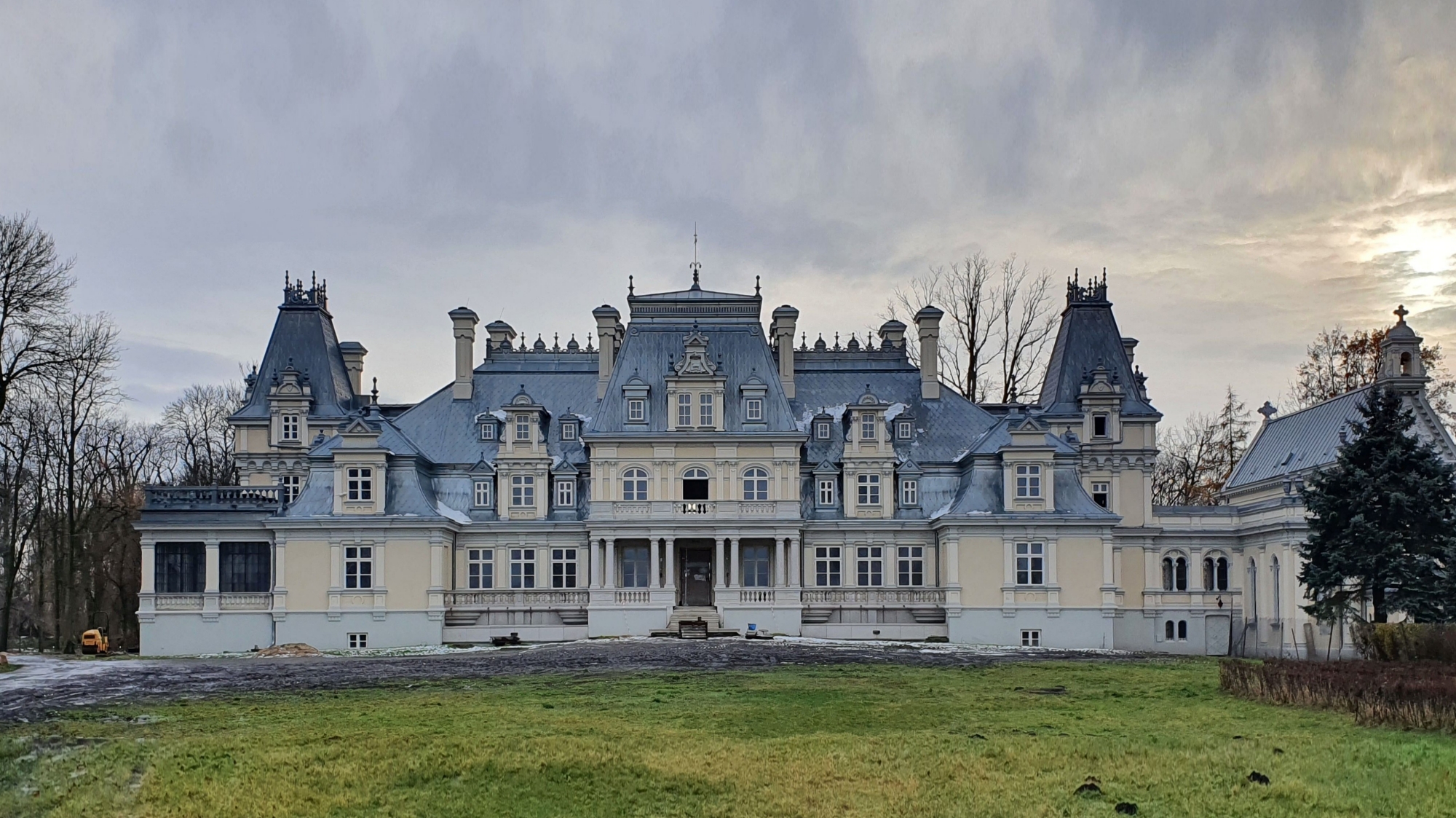
Ultimately, a luxury hotel and conference centre is to be built in the palace. In Guzów the historical, social and social aspect is very important, so the specifics of the hotel would be similar to the model developed by Chateau Form(www.chateauform.com). These types of centres are located in historic buildings, surrounded by greenery. Guests are welcomed by the hosts/owners of the facility and efforts are made to make them feel ‘at home’. There is no traditional reception, but there is discreet service. Guests have full freedom to use all facilities and comforts from the kitchen to the spa, pool, sauna etc.
An extremely important part of the renovation will be the reconnection of the palace with the St Felix de Valois chapel. Thanks to the efforts of the Feliks Count Sobański Foundation, a new parish church has been built in Guzów, which will be handed over to the church and the local worshippers. At the same time, the manor chapel will return to the ownership of the palace’s co-owners. Ultimately, the residence will also house a memorial chamber dedicated to the three families associated with the site: Oginski, Łubieński and Sobański
Source: Marcin Brzeziński/ Sobański Palace in Guzów
Read also: Architecture | Renovation | Palace | Architecture in Poland | Villas and residences


